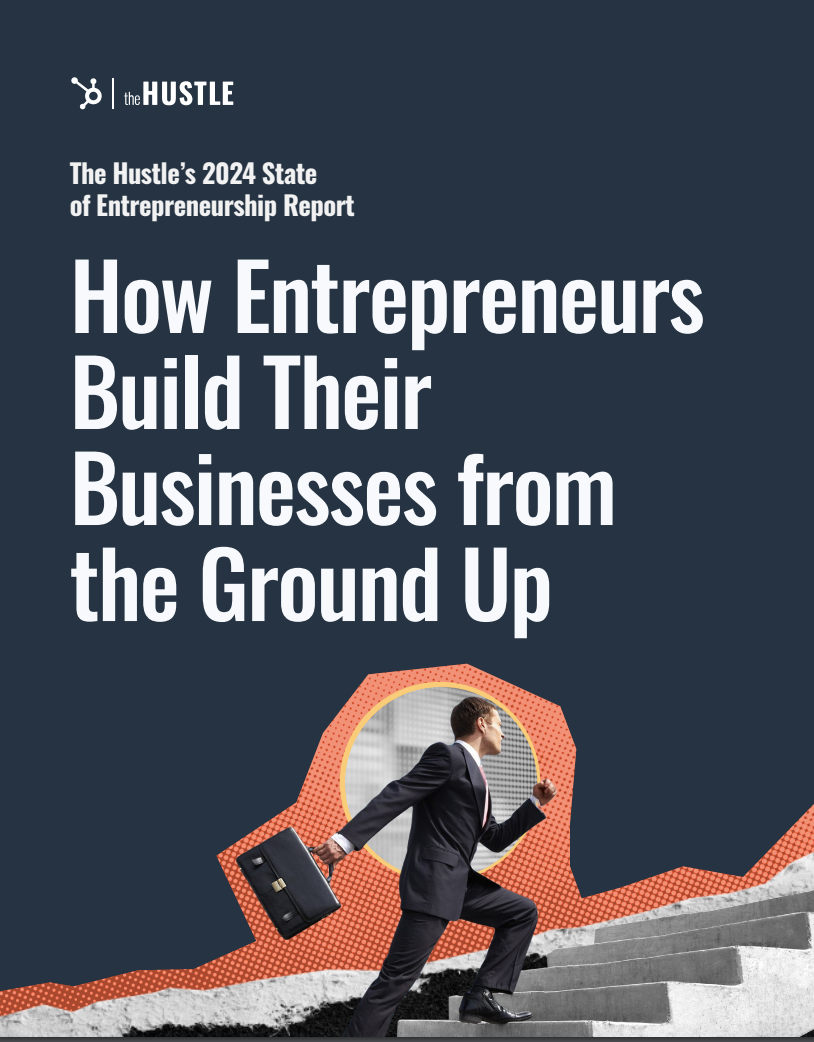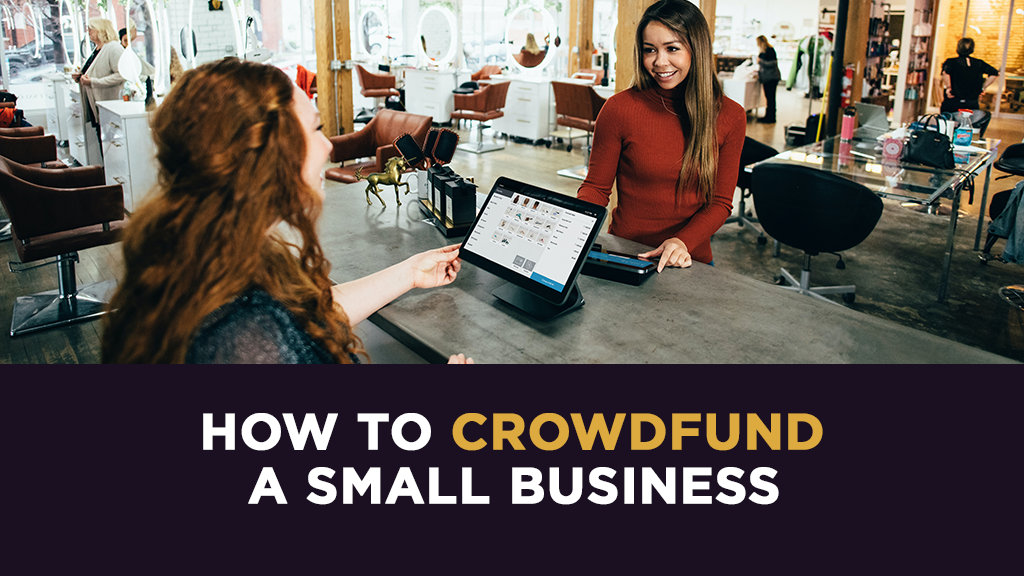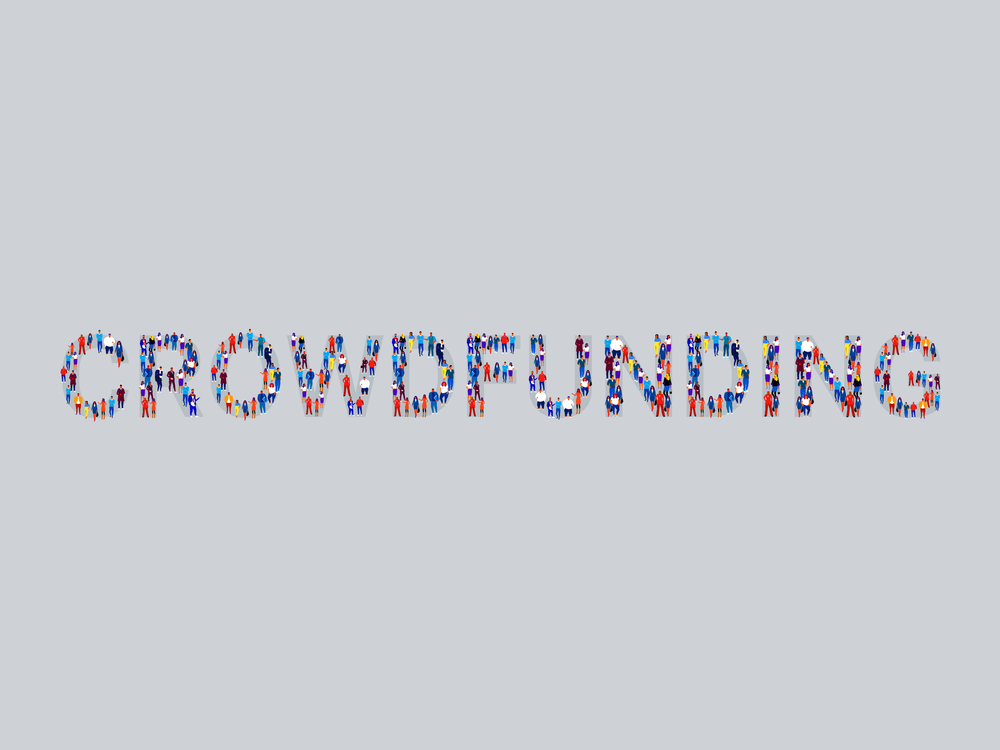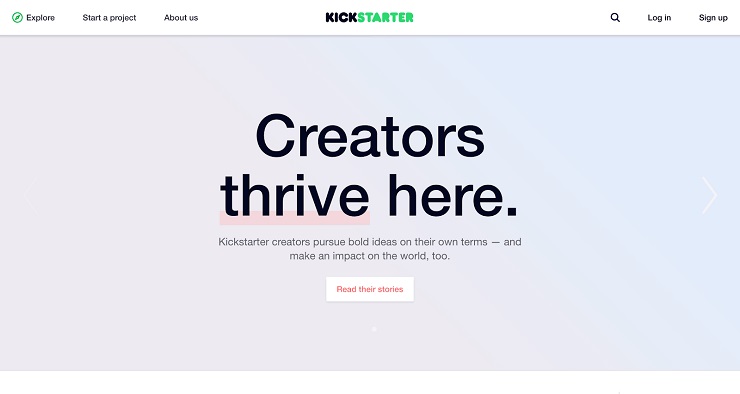Need a consultation? Call now:
Talk to our experts:
- Business Plan for Investors
- Bank/SBA Business Plan
- Operational/Strategic Planning
- E1 Treaty Trader Visa
- E2 Treaty Investor Visa
- Innovator Founder Visa
- UK Start-Up Visa
- UK Expansion Worker Visa
- Manitoba MPNP Visa
- Start-Up Visa
- Nova Scotia NSNP Visa
- British Columbia BC PNP Visa
- Self-Employed Visa
- OINP Entrepreneur Stream
- LMIA Owner Operator
- ICT Work Permit
- LMIA Mobility Program – C11 Entrepreneur
- USMCA (ex-NAFTA)
- Franchise Business Planning
- Landlord Business Plan
- Nonprofit Start-Up Business Plan
- USDA Business Plan
- Online Boutique
- Mobile Application
- Food Delivery
- Real Estate
- Business Continuity Plan
- Buy Side Due Diligence Services
- ICO whitepaper
- ICO consulting services
- Confidential Information Memorandum
- Private Placement Memorandum
- Feasibility study
- Fractional CFO
- How it works
- Business Plan Templates

Crowdfunding Business Plan
Published Jul.26, 2024
Updated Aug.30, 2024
By: Noor Muhammad
Average rating 5 / 5. Vote count: 2
No votes so far! Be the first to rate this post.

Table of Content
In recent years, crowdfunding has emerged as a revolutionary way for startups and small businesses to raise capital. Whether you’re looking to launch a new product, fund a creative project, or start a new business, understanding how to develop a successful crowdfunding business plan is crucial. This guide will walk you through the essentials of creating a business plan for a crowdfunding platform, explore the concept of equity crowdfunding, and provide valuable insights into the industry.
Understanding Crowdfunding in Business
Crowdfunding is a method of raising capital through the collective effort of a large number of individual investors, typically via the internet. This approach leverages the power of social networks and online communities to reach a wide audience of potential backers. Crowdfunding can be categorized into four main types: donation-based, reward-based, equity-based, and debt-based.
Types of Crowdfunding
- Donation-Based Crowdfunding: Contributors donate money to support a cause without expecting any return.
- Reward-Based Crowdfunding: Backers receive a tangible item or service in return for their contribution.
- Equity-Based Crowdfunding: Investors receive a share of ownership in the business.
- Debt-Based Crowdfunding: Funds are raised in the form of a loan that must be repaid with interest.
Key Components of a Crowdfunding Business Plan
Creating a business plan for a crowdfunding platform involves several key components:
1. Executive Summary
The executive summary provides a concise overview of your business plan. It should include the mission statement, vision, objectives, and a brief description of the services offered by the crowdfunding platform, emphasizing the business model of crowdfunding platforms.
2. Business Description
Detail the nature of your crowdfunding business, including its legal structure, location, and the types of crowdfunding it will facilitate. Explain how your platform will differentiate itself from competitors and the unique value it offers to users.
3. Market Analysis
Conduct a thorough market analysis to understand the industry landscape, target audience, and competitive environment. Identify market trends, growth opportunities, and potential challenges. Use statistics and data from reliable sources such as Statista or IBISWorld to support your analysis.
4. Marketing Strategy
Outline your marketing strategy, including the channels you will use to attract both project creators and backers. Detail your plans for social media marketing, content marketing, email campaigns, and partnerships. Highlight any unique selling propositions (USPs) that will make your platform stand out.
5. Operational Plan
Describe the operational aspects of your crowdfunding platform, such as technology infrastructure, platform development, and customer service. Discuss the team structure, roles, and responsibilities.
6. Financial Plan
Provide a detailed financial plan, including startup costs, revenue projections, and funding requirements. Include profit and loss statements, cash flow forecasts, and balance sheets. Explain how you will monetize the platform, whether through transaction fees, subscription models, or other revenue streams. This section should clearly define the crowdfunding business model that will drive your platform’s success.
7. Legal Considerations
Address the legal aspects of running a crowdfunding platform, including regulatory compliance, intellectual property rights, and user agreements. Consult with legal experts to ensure your platform adheres to all relevant laws and regulations.
Insights into the Crowdfunding Industry
The crowdfunding industry has seen significant growth over the past decade. According to Statista , the global crowdfunding market was valued at approximately $1.17 billion in 2023 and is expected to reach $1.27 billion by 2028. This growth is driven by the increasing popularity of crowdfunding among startups and small businesses seeking alternative funding sources.
Market Evaluation
The market evaluation section should delve deeper into the specific segments of the crowdfunding industry. For instance, equity crowdfunding has gained traction as an attractive option for investors looking to gain equity stakes in startups. Platforms like Seedrs and Crowdcube have paved the way for this model, offering a viable alternative to traditional venture capital.
The reward-based crowdfunding model, popularized by platforms like Kickstarter and Indiegogo, continues to thrive, particularly in creative industries such as film, music, and technology. This model allows project creators to pre-sell products and gauge market interest before full-scale production.
List of Leading Crowdfunding Platforms
- Kickstarter: Known for creative projects, offering reward-based crowdfunding.
- Indiegogo: Offers both reward-based and equity-based crowdfunding options.
- GoFundMe: Primarily focuses on donation-based crowdfunding for personal causes.
- Seedrs: Specializes in equity crowdfunding, allowing investors to buy shares in startups.
- Crowdcube: Another equity crowdfunding platform, focusing on high-growth startups.
List of Key Market Trends
- Increased Regulation: Governments are implementing stricter regulations to protect investors.
- Technological Advancements: Blockchain technology and smart contracts are enhancing the transparency and security of crowdfunding platforms.
- Niche Platforms: The rise of niche crowdfunding platforms catering to specific industries or types of projects.
- Global Expansion: Crowdfunding is growing rapidly in emerging markets, offering new opportunities for entrepreneurs worldwide.
Implementing Your Crowdfunding Business Plan
Once you have developed a comprehensive crowdfunding plan, the next step is implementation. This involves launching your platform, executing your marketing strategy, and continuously monitoring and improving your operations. Here are some actionable steps to get started:
- Develop Your Platform: Invest in robust technology to create a user-friendly and secure crowdfunding platform. Consider partnering with experienced developers or using white-label solutions to speed up the process.
- Build a Community: Engage with potential project creators and backers through social media, online forums, and industry events. Building a loyal community is crucial for the success of your platform.
- Launch Marketing Campaigns: Implement your marketing strategy to attract users to your platform. Use a mix of digital marketing techniques, including SEO, content marketing, and social media advertising.
- Monitor Performance: Use analytics tools to track the performance of your platform and marketing efforts. Make data-driven decisions to optimize your strategies and improve user experience.
Get Started with OGS Capital Today
Ready to bring your crowdfunding platform to life? At OGS Capital, we specialize in helping entrepreneurs and businesses develop successful crowdfunding business plans. Our team of experts will guide you through every step of the process, from market analysis to financial planning, ensuring your platform is set up for success. Whether you’re exploring the business model of crowdfunding platforms or need help with a crowdfunding marketing plan, we’ve got you covered.
Visit OGS Capital today to learn more about our services and get started on your crowdfunding journey.
A well-crafted crowdfunding business plan is essential for anyone looking to enter this dynamic and rapidly growing industry. By understanding the different types of crowdfunding, conducting thorough market research, and implementing a solid business strategy, you can create a successful platform that meets the needs of both project creators and backers.
Crowdfunding offers a unique opportunity for businesses to raise capital and engage with their audience in innovative ways. With the right plan and support, your crowdfunding platform can thrive in this competitive market.
Q. Is crowdfunding profitable?
Yes, crowdfunding for business can be profitable for both project creators and investors. Successful campaigns can raise significant funds, often exceeding initial goals. For investors, particularly in equity crowdfunding, there is potential for substantial returns if the business succeeds. However, profitability isn’t guaranteed and depends on various factors, including the quality of the project, marketing efforts, and market demand. It’s essential to conduct thorough research and have a solid business plan.
Q. What is the biggest crowdfunding success?
One of the biggest crowdfunding successes is the Pebble Time smartwatch campaign on Kickstarter, which raised over $20 million from more than 78,000 backers in 2015. This campaign set a record for the most funded project on the platform at the time. Pebble Time’s success demonstrated the potential of crowdfunding to support innovative products and gather a large, enthusiastic community around a new idea.
OGSCapital’s team has assisted thousands of entrepreneurs with top-rate business plan development, consultancy and analysis. They’ve helped thousands of SME owners secure more than $1.5 billion in funding, and they can do the same for you.

Bowling Alley Business Plan Sample

Nightclub Business Plan (2024): A Comprehensive Guide

Rabbit Farming Business Plan

Beverages Business Plan

Private Schools Business Plan

Business Plan for a Lounge

Any questions? Get in Touch!
We have been mentioned in the press:
Leave a Reply Cancel reply
Your email address will not be published. Required fields are marked *
Save my name, email, and website in this browser for the next time I comment.
Search the site:

- 1 855 294 0887
An Effective Crowdfunding Business Plan, Made Simple

The truth of the matter is that small businesses cannot launch without adequate funding. Fortunately, there are different methods to securing funds for your business, such as crowdfunding.
Crowdfunding is the term used when a project or business is funded through the help of many small sums from angel investors and donors, typically on the internet. According to Fundera , in North America, nearly $17.2 billion is generated through the crowdfunding industry each year.
This can be a viable option for some small businesses. However, there are important steps to take when creating an effective crowdfunding business plan. Luckily, we are here to help!
We’re going to cover what to include in your business plan, possible funding sources, and how to write an effective crowdfunding campaign.
What to Include in a Crowdfunding Business Plan
Creating a crowdfunding business plan is not a one-size-fits-all situation, so it can be confusing trying to decide what to put into your plan. When creating a crowdfunding business plan, some things you may want to include are:
Executive Summary
An executive summary is vital to any business plan. It clearly describes the goals and purpose of a business in a short section of text. Include objectives, products or services provided, and growth potential.
Mission Statement
A mission statement is at the heart of every business. What are you trying to achieve and why? Write a strong mission statement that stands as a solid foundation, and refer back to it often when making important decisions.
Similar to a mission statement, a vision is broader in scope and outlines your venture. What are your priorities? What are your hopes for the future? And, who do you want to impact?
Market Research
Market research is important to include in a crowdfunding business plan because it can help project your future success rate and help you devise a solid plan. Look into what competitors have done in the past and measure their success to use as guidelines.
Promotion Plan
Finally, you need to include a plan for how you will promote your campaign. Crowdfunding campaigns do not thrive unless their visibility is high. You need people to donate and back your business to achieve your goals. How will you promote your campaign? Through social media platforms? Word of mouth? Perhaps, both.
Crowdfunding Sources
There are a plethora of websites in the crowdfunding industry. We are going to highlight just a few of the more popular ones and their type of crowdfunding that may work well for your business.
- GoFundMe . Likely you have heard of GoFundMe, the crowdfunding website founded in 2010. It is one of the most popular sources in the crowdfunding industry and is a great option to consider because it is easily recognizable.
- Kickstarter . This is another crowdfunding platform that has gained popularity over the years. Their mission is to “help bring creative projects to life.”
- Indiegogo . Indiegogo is a crowdfunding platform that has raised over $1 billion for projects from technology to dance.
These three are great options for crowdfunding campaigns. Now, we will share how to write a crowdfunding campaign sure to grab the attention of potential investors.
How To Write a Crowdfunding Campaign
A successful campaign will be informative, well thought out, and appealing to a potential crowdfunding investor. Next, we will outline the best way to write a crowdfunding campaign.
Tell Your Story
Share with potential backers the story behind your business venture. Why are you starting or expanding this business? Be creative here and tell a compelling story about how your business idea came to life and why you’re making this funding request. This will hook a potential investor and persuade him or her to keep reading your crowdfunding campaign.
Summarize Your Business’ Values and Mission
Make sure to include your values and mission statement in the campaign. You want investors to have a clear understanding of your business and why it is worth supporting. The more an investor can connect with your business, the more likely you are to achieve crowdfunding campaign success.
Include Marketing Strategies and Launch Information
It’s important to write about your business strategy and include a timeline for launching the business. What are your funding goals, and why? A potential investor will want to know where the business is going and how you are going to get there. Show investors how you will promote your business and foster growth.
Highlight Your Team
This is a great opportunity to highlight your team and what makes your business unique. Share the expertise your team members bring to the table. What skills and experience do you and your team have that will help your campaign gain credibility?
Outline Perks for Investors
Reward-based crowdfunding is extremely common for crowdfunding business campaigns. If you are going to be supplying backers with prototypes of your product, list the financial contribution requirements here. Having incentives for different amounts of financial support can increase the likelihood of people engaging with the campaign. Consider reward-based crowdfunding for your business campaign to raise your chance of getting investors.
Drawbacks to Crowdfunding
Crowdfunding may sound intriguing, however, there are definite drawbacks to this method of funding your business. Some of these drawbacks include, but are not limited to:
- Fees. Crowdfunding sites have to make a profit too. In exchange for using their platform, these websites usually charge a fee that ranges from 3-8% of your total donations. Additionally, some crowdfunding sites charge a payment processing fee of 3-5% for automatic transfers.
- It Takes Time. Depending on the scope of your financial needs, crowdfunding a business can take a very long time. Compared to taking a loan, this method can be incredibly slow.
- It May Not Succeed. There’s also no guarantee of successful completion. You may not be able to secure the funds you need for your business.
- Competition. Competition on crowdfunding sites can be fierce. There are countless campaigns running at the same time that may take away visibility from yours.
- Meeting the Threshold. Some crowdfunding websites require you to set a threshold or goal you need to meet to be considered “fully funded.” If you don’t meet the threshold you set, you won’t receive any of the contributed money.
As you can see, using crowdfunding to finance your business may not be the best solution. Read on to learn more about another option for funding your business.

Finance Your Business With LendThrive
Want a simple, hassle-free way to fund your small business? Skip out on the risk of the crowdfunding industry and partner with LendThrive to make your small business dreams come true. Starting a business is an exciting venture, and securing proper funding is essential to success.
LendThrive offers fixed rate business loans that are fast and flexible to suit your specific needs. We believe you shouldn’t have to worry about giving up ownership to gain access to the finances needed to grow your business. LendThrive loans allow for financial stability and pride in your business.
Contact us for more information about funding your business with LendThrive!
Further Reading

Payroll Loans Simplified: How They Work & How to Secure One
Payroll loans are useful for businesses looking for cash to continue operating in the short term. This guide explains how...

Hiring Employees for Your Small Business in a Labor Shortage
How do you find employees in a labor shortage? Read on to learn about challenges and labor shortage solutions such...

Paying Small Business Employees: Employer’s Handbook
Wondering how to pay employees in a small business setting? LendThrive shares the best way to pay small business employees...

How to Write a Business Plan for Regulated Crowdfunding Platforms

Get Full Bundle
| $169$99 | $59$39 | $39$29 | $15$9 | $25$15 | $15$9 | $15$9 | $15$9 | $19 |
Launching a successful regulated crowdfunding platform requires meticulous planning and preparation. In this comprehensive guide, we'll walk you through the 9 essential steps to take before crafting your business plan, ensuring you cover all the necessary bases. From understanding regulatory requirements to assembling a skilled team, this checklist will set you on the path to building a thriving crowdfunding ecosystem .
Steps Prior To Business Plan Writing
| Step | Key Considerations |
|---|---|
| Identify target market and funding needs | Conduct thorough market research to understand the potential investor and business borrower demographics. Determine the expected funding amounts, investment sizes, and target return rates. |
| Understand regulatory requirements and compliance | Familiarize yourself with the relevant regulations and guidelines governing crowdfunding platforms, such as licensing, reporting, and investor protection measures. Ensure compliance to avoid legal and financial risks. |
| Develop a technology solution for the platform | Design a user-friendly and secure platform that can effectively manage the crowdfunding process, from investor onboarding to project funding and investor reporting. Allocate appropriate resources for development and maintenance. |
| Establish partnerships with investors and businesses | Reach out to potential investors, both individual and institutional, to gauge interest and build a network. Collaborate with businesses seeking funding to understand their needs and expectations. |
| Determine pricing structure and revenue model | Establish a competitive and sustainable pricing model that covers operating costs and generates revenue, such as transaction fees, listing fees, or subscription-based services. |
| Assemble a skilled team with relevant expertise | Recruit a diverse team with expertise in areas such as finance, technology, legal compliance, and marketing to ensure the platform's successful operation and growth. |
| Secure necessary licenses and registrations | Obtain the required licenses and registrations, such as a broker-dealer license, investment advisor registration, or crowdfunding platform registration, to operate legally and compliantly. |
| Implement robust risk management and security protocols | Develop comprehensive risk management strategies to mitigate potential financial, operational, and cybersecurity risks. Ensure the platform's security measures are up-to-date and compliant with industry standards. |
| Create a marketing and outreach strategy | Devise a targeted marketing plan to attract both investors and businesses to the platform, leveraging various channels such as content marketing, social media, and strategic partnerships. |
Identify Target Market and Funding Needs
Launching a successful Regulated Crowdfunding Platform begins with a clear understanding of your target market and their funding requirements. By identifying the specific industries, demographics, and investment preferences of your potential customers, you can tailor your platform's offerings to meet their needs and maximize your chances of attracting both businesses seeking capital and investors seeking profitable opportunities.
Start by conducting thorough market research to determine the size and growth potential of the regulated crowdfunding industry in your region. Analyze industry reports, survey potential users, and gather data on the funding gaps and investment preferences of small businesses, startups, and investors. This information will help you assess the overall market demand and formulate a compelling value proposition for your platform.
Next, dive deeper into the specific funding needs of your target businesses. Understand the typical capital requirements, preferred investment structures, and investment thresholds for different industries and stages of growth. This will inform the design of your platform's features, such as investment minimums, security options, and due diligence processes.
- Aim to serve a niche market with underserved funding needs, such as minority-owned businesses, women-led startups, or businesses in emerging sectors.
- Gather data on the average funding amounts, investment timelines, and success rates of similar crowdfunding platforms to benchmark your own targets.
- Analyze the competitive landscape to identify areas where your platform can offer unique value and differentiate itself from existing players.
Once you have a clear understanding of your target market and their funding needs, you can begin to estimate the potential capital that your platform could attract. This will help you determine the necessary funding and resources required to launch and scale your Regulated Crowdfunding Platform . By aligning your platform's capabilities with the needs of your target audience, you can position your business for long-term success in the rapidly growing crowdfunding industry .
| Regulated Crowdfunding Platforms Business Plan Get Template |
Understand Regulatory Requirements and Compliance
Navigating the regulatory landscape is a critical step in establishing a successful regulated crowdfunding platform. Crowdfunding platforms in the United States are subject to a range of federal and state-level regulations, including the Securities Act of 1933, the Securities Exchange Act of 1934, and the Jumpstart Our Business Startups (JOBS) Act of 2012.
To ensure compliance, crowdfunding platforms must register with the Securities and Exchange Commission (SEC) and obtain the necessary licenses and registrations, such as becoming a broker-dealer or a funding portal. Platforms must also comply with specific disclosure requirements, investor verification processes, and limits on the amount of funds that can be raised and invested.
- Stay up-to-date with the latest regulatory changes and guidelines to ensure your platform remains compliant.
- Consult with legal and compliance experts to understand the specific requirements for your crowdfunding platform and the jurisdiction(s) in which you operate.
- Implement robust compliance and risk management procedures to mitigate legal and financial risks for your platform and its investors.
According to the SEC, as of 2021 , there were 1,400 registered crowdfunding portals in the United States, with a total of $1.2 billion raised through these platforms. However, the regulatory landscape can be complex, and non-compliance can result in significant penalties and reputational damage.
By thoroughly understanding and adhering to the regulatory requirements, crowdfunding platform operators can build a strong foundation for their business, protect their investors, and position their platform for long-term success.
Develop a Technology Solution for the Regulated Crowdfunding Platform
Developing a robust, user-friendly, and compliant technology solution is a critical step in launching a successful regulated crowdfunding platform. The platform's technology must be designed to facilitate secure transactions, streamline the investment process, and ensure regulatory compliance at every step.
When designing the technology infrastructure for your regulated crowdfunding platform, consider the following key elements:
- User-Centric Interface: Develop an intuitive and visually appealing user interface that makes it easy for both investors and businesses to navigate the platform, submit applications, and complete transactions. Ensure the platform is mobile-responsive and accessible across devices.
- Secure Transaction Processing: Implement a secure payment gateway and escrow system to handle financial transactions, with robust encryption and fraud detection mechanisms to protect both investors and businesses.
- Compliance Automation: Integrate regulatory compliance features, such as investor accreditation verification, anti-money laundering (AML) checks, and adherence to disclosure requirements, to streamline the onboarding and investment process while ensuring regulatory compliance.
- Data Management and Analytics: Develop a comprehensive data management system to collect, store, and analyze platform activity, investor behavior, and investment performance. Use these insights to optimize the platform, make informed decisions, and identify growth opportunities.
- Scalability and Flexibility: Design the technology architecture to be scalable, allowing the platform to handle increasing transaction volumes and user growth without compromising performance or reliability. Ensure the platform is flexible enough to adapt to changing regulatory requirements and market demands.
- Consider partnering with a reputable technology provider or developer to build the platform, as they can bring the necessary expertise and experience to ensure a robust and compliant solution.
- Allocate a significant portion of your budget to the development and maintenance of the platform's technology, as it is the backbone of your regulated crowdfunding business.
- Regularly review and update the platform's technology to address any security vulnerabilities, improve user experience, and ensure continued compliance with evolving regulations.
By investing in a well-designed, secure, and compliant technology solution, you can create a trusted and efficient regulated crowdfunding platform that attracts both investors and businesses, positioning your venture for long-term success.
Establish Partnerships with Investors and Businesses
Establishing strategic partnerships is a crucial step in building a successful regulated crowdfunding platform. By aligning with investors and businesses, you can leverage their expertise, resources, and networks to enhance the platform's offerings and reach a wider audience.
When it comes to investor partnerships, your goal should be to attract a diverse pool of accredited and institutional investors who are interested in supporting high-potential startups and small businesses. According to recent industry reports, the global crowdfunding market is expected to reach $1.2 trillion by 2028, with a compound annual growth rate of 15.3% from 2022 to 2028. By partnering with these investors, you can ensure a steady flow of capital and provide your platform users with access to a wider range of funding opportunities.
- Identify and approach investors with a proven track record in the crowdfunding or alternative finance space, as they are more likely to understand the value proposition of your platform.
- Offer investors attractive returns, such as a share of the platform's revenue or equity in successful funded ventures, to incentivize their participation.
- Implement robust due diligence and risk management processes to ensure the suitability and trustworthiness of your investor partners.
On the business side, it's essential to establish partnerships with a diverse range of companies and organizations that can benefit from your crowdfunding platform. This may include startups, small and medium-sized enterprises (SMEs), and even larger corporations seeking alternative funding channels. According to a survey by the U.S. Chamber of Commerce, 63% of small businesses in the United States have used or plan to use crowdfunding as a financing option. By partnering with these businesses, you can create a vibrant ecosystem of borrowers and lenders, driving the growth and success of your platform.
- Identify businesses in underserved or high-growth sectors, such as technology, renewable energy, or social impact, that are likely to benefit from your crowdfunding platform.
- Offer businesses competitive rates, flexible financing options, and value-added services, such as marketing support or access to investor networks, to incentivize their participation.
- Implement robust due diligence and screening processes to ensure the creditworthiness and reliability of your business partners, protecting the interests of your investors and platform users.
By establishing strong partnerships with both investors and businesses, you can create a vibrant and sustainable crowdfunding ecosystem that serves the needs of all stakeholders. This strategic approach will not only help you attract a steady flow of capital and borrowers but also enhance the overall credibility and trustworthiness of your regulated crowdfunding platform.
| Regulated Crowdfunding Platforms Financial Model Get Template |
Determine Pricing Structure and Revenue Model
Establishing the right pricing structure and revenue model is crucial for the long-term sustainability and profitability of your regulated crowdfunding platform. This step requires a careful analysis of your target market, operating costs, and the competitive landscape to ensure your platform offers value to both investors and fundraising businesses.
One of the primary revenue streams for a crowdfunding platform is the transaction fees charged for successful fundraising campaigns. Industry data suggests that transaction fees typically range from 5% to 10% of the total amount raised , with the higher end of the range often reserved for platforms that offer more comprehensive services and support.
- Consider offering tiered pricing models, where businesses can choose from different service packages based on their needs and budget.
- Explore additional revenue sources, such as subscription fees for investors, listing fees for businesses, and premium features or services.
- Benchmark your pricing against industry standards and competitors to ensure your platform remains competitive and attractive to both fundraisers and investors.
Another important aspect of your pricing structure is the fee structure for investors. Many crowdfunding platforms offer a range of investment options, from small minimum investments to larger sums, with corresponding fees. Research indicates that the average investment size on regulated crowdfunding platforms is around $3,000 to $5,000 , with platforms typically charging a small percentage-based fee on each investment.
In addition to transaction and investment fees, your revenue model should also consider potential ancillary revenue streams, such as advertising, data analytics, and value-added services. These supplementary revenue sources can help diversify your income and provide a more stable financial foundation for your regulated crowdfunding platform.
To ensure your pricing structure and revenue model are competitive and sustainable, it's essential to continuously monitor market trends, investor and fundraiser feedback, and your own operational costs. Regularly reviewing and adjusting your pricing strategy can help you maintain a healthy balance between profitability and providing value to your platform's users.
Assemble a Skilled Team with Relevant Expertise
Building a successful regulated crowdfunding platform requires assembling a skilled team with diverse expertise and complementary skills. This team will be responsible for navigating the complex regulatory landscape, developing a robust technological solution, forging strategic partnerships, and driving the platform's growth and success.
When constructing your team, it is crucial to seek out individuals with proven track records in their respective fields. According to a study by the Crowdfunding Professional Association, 67% of successful crowdfunding platforms were founded by teams with prior experience in the financial services industry , which is essential for understanding and complying with the regulatory requirements.
- Recruit individuals with expertise in areas such as financial regulation, compliance, technology development, marketing, and investor relations.
- Prioritize candidates with prior experience in the crowdfunding or fintech industry, as they will have a deeper understanding of the market dynamics and operational challenges.
- Consider bringing on board advisors or board members who can provide strategic guidance and industry connections to help navigate the complex regulatory landscape and build partnerships.
In addition to domain expertise, it is important to build a team that possesses strong communication and collaboration skills. Research by the Kauffman Foundation has shown that teams with diverse backgrounds and complementary skills are 45% more likely to experience high growth compared to homogeneous teams. By fostering a culture of open communication and cross-functional collaboration, you can leverage the unique perspectives and strengths of each team member to drive innovation and overcome challenges.
As you assemble your team, it is also crucial to prioritize the development of robust risk management and security protocols. According to a report by the Cambridge Centre for Alternative Finance, 88% of successful crowdfunding platforms have dedicated risk management and compliance teams to ensure the platform's operations and investor protections are aligned with regulatory requirements.
- Allocate resources to hire experienced professionals in areas such as cybersecurity, data privacy, and anti-money laundering (AML) compliance.
- Implement comprehensive training programs to ensure all team members understand and adhere to the platform's risk management and security protocols.
- Regularly review and update your risk management and security strategies to stay ahead of evolving threats and regulatory changes.
By assembling a skilled, multidisciplinary team and prioritizing risk management and security, you can position your regulated crowdfunding platform for long-term success and sustainable growth.
Secure Necessary Licenses and Registrations
Launching a regulated crowdfunding platform requires obtaining the necessary licenses and registrations to ensure compliance with applicable laws and regulations. This critical step lays the foundation for the platform's legitimacy, protects investors, and minimizes legal and financial risks.
In the case of Crowdfund Connect , the platform will need to secure the following key licenses and registrations:
- Securities Registration: As a crowdfunding platform, Crowdfund Connect must register with the appropriate securities regulatory bodies, such as the Securities and Exchange Commission (SEC) in the United States. This registration ensures the platform operates within the legal framework for securities offerings and crowdfunding activities.
- Money Services Business (MSB) License: Crowdfund Connect will need to obtain an MSB license, which regulates the platform's handling of funds and financial transactions. This license is typically required by financial regulators, such as the Financial Crimes Enforcement Network (FinCEN) in the US.
- Broker-Dealer License: Depending on the platform's business model and the nature of its investment offerings, Crowdfund Connect may need to register as a broker-dealer with the SEC and become a member of the Financial Industry Regulatory Authority (FINRA).
- State-Level Registrations: In addition to federal-level registrations, Crowdfund Connect will need to comply with state-specific regulations and obtain the necessary licenses and registrations in the states where it plans to operate.
Navigating the complex regulatory landscape can be challenging, but it is crucial for the long-term success and sustainability of a regulated crowdfunding platform like Crowdfund Connect. Seeking the guidance of experienced legal and compliance professionals can help ensure the platform meets all the necessary requirements and mitigates potential risks.
- Start the licensing and registration process as early as possible to avoid delays in launching the platform.
- Allocate sufficient resources and budget for ongoing compliance monitoring and reporting to maintain regulatory compliance.
- Stay informed about changes in crowdfunding regulations and be prepared to adapt the platform's operations accordingly.
By prioritizing regulatory compliance and securing the necessary licenses and registrations, Crowdfund Connect can build trust with investors, demonstrate its commitment to transparency and accountability, and position itself as a reliable and trustworthy crowdfunding platform in the market.
| Regulated Crowdfunding Platforms Pitch Deck |
Implement Robust Risk Management and Security Protocols
Establishing a regulated crowdfunding platform requires a steadfast commitment to risk management and security protocols. As the platform facilitates the exchange of funds between investors and businesses, it is crucial to prioritize the protection of all stakeholders involved. This step in the crowdfunding platform development checklist is essential to ensuring the long-term viability and trustworthiness of your business model.
One of the primary concerns for regulated crowdfunding platforms is the risk of fraud and cybersecurity breaches. To mitigate these risks, it is essential to implement a comprehensive set of security measures, including robust identity verification processes, multi-factor authentication, and advanced encryption technologies. By ensuring the integrity of the platform's systems and data, you can build a strong foundation of trust with both investors and entrepreneurs.
- Incorporate biometric authentication such as fingerprint or facial recognition to enhance security and reduce the risk of fraudulent activities.
- Regularly audit your platform's security protocols and infrastructure to identify and address any vulnerabilities.
- Implement real-time monitoring and anomaly detection systems to swiftly identify and respond to any suspicious activities on the platform.
In addition to cybersecurity, regulated crowdfunding platforms must also address regulatory and compliance risks. This includes adhering to relevant financial regulations, such as know-your-customer (KYC) and anti-money laundering (AML) requirements, as well as maintaining robust record-keeping and reporting processes. By demonstrating a strong commitment to regulatory compliance, you can build trust with both regulators and the investing public.
Another critical aspect of risk management for regulated crowdfunding platforms is the assessment and mitigation of investment risks. This may involve implementing thorough due diligence processes, setting appropriate investment limits, and providing clear and transparent disclosures to investors about the risks associated with each investment opportunity. By empowering investors with the information they need to make informed decisions, you can foster a culture of responsible and sustainable investing.
- Establish a risk management committee to regularly review and update your platform's risk assessment and mitigation strategies.
- Develop a comprehensive business continuity and disaster recovery plan to ensure the platform's resilience in the face of unexpected events.
- Regularly conduct stress testing and scenario analysis to identify and address potential vulnerabilities in your platform's risk management framework.
By implementing robust risk management and security protocols, you can instill confidence in both investors and entrepreneurs, positioning your regulated crowdfunding platform as a trusted and reliable marketplace for funding and investment opportunities. This commitment to risk management and security is a critical step in the development of a successful and sustainable crowdfunding platform.
Create a Marketing and Outreach Strategy
Developing a comprehensive marketing and outreach strategy is crucial for the success of your regulated crowdfunding platform. By effectively promoting your platform and reaching out to your target audience, you can attract a steady flow of investors and businesses seeking funding opportunities.
One of the key elements of your marketing strategy should be identifying and understanding your target market. This includes conducting thorough market research to determine the demographics, interests, and pain points of your potential users. By tailoring your messaging and outreach efforts to the specific needs of your target audience, you can increase the likelihood of attracting the right investors and businesses to your platform.
Another important aspect of your marketing strategy is creating a strong brand identity for your regulated crowdfunding platform. This involves developing a visually appealing and memorable brand logo, website design, and overall branding that aligns with the values and mission of your platform. Consistent branding across all your marketing channels can help build trust and recognition with your target audience.
- Leverage social media platforms to reach a wider audience and engage with potential users. Platforms like LinkedIn, Twitter, and Facebook can be effective channels for sharing updates, highlighting success stories, and engaging with your community.
- Establish partnerships with industry influencers, media outlets, and relevant organizations to amplify your reach and credibility. Collaborating with respected voices in the crowdfunding space can help you gain visibility and attract new users to your platform.
- Regularly publish informative and valuable content, such as blog posts, webinars, and educational resources, to position your platform as a thought leader in the regulated crowdfunding industry. This can help you attract and retain users by demonstrating your expertise and commitment to their success.
In addition to your digital marketing efforts, consider implementing traditional marketing tactics, such as attending industry events, networking with potential partners, and engaging in targeted outreach to your target audience. These offline activities can help you build personal connections and foster trust with your users.
Remember, the success of your regulated crowdfunding platform is heavily dependent on your ability to effectively market and promote it to your target audience. By developing a well-rounded marketing and outreach strategy, you can attract a steady stream of investors and businesses, driving the growth and success of your platform.
According to a recent industry report, 71% of successful crowdfunding campaigns attributed their success to effective marketing and outreach efforts . Additionally, studies have shown that platforms with a strong social media presence and active engagement tend to have higher funding success rates .
Related Blogs
- 7 Mistakes to Avoid When Starting a Regulated Crowdfunding Platforms in the US?
- How To Buy Regulated Crowdfunding Platforms Business: Checklist
- How To Fund Or Get Money To Start A Regulated Crowdfunding Platforms Business?
- Regulated Crowdfunding Platforms: Owner Earnings
- How to Launch a Regulated Crowdfunding Platform: A Step-by-Step Guide
- 7 Essential Metrics for Regulated Crowdfunding Platforms
- What Are the Operating Expenses of Crowdfunding Platforms?
- What Are The Top Nine Pain Points Of Running A Regulated Crowdfunding Platforms Business?
- Get Funded Today: Unleash the Potential of Regulated Crowdfunding!
- How to Drive Profitability on Crowdfunding Platforms
- The Complete Guide To Regulated Crowdfunding Platforms Business Financing And Raising Capital
- Strategies To Increase Your Regulated Crowdfunding Platforms Sales & Profitability
- How To Sell Regulated Crowdfunding Platforms Business in 9 Steps: Checklist
- Key Expenses To Manage For A Successful Crowdfunding Campaign
- Valuing Regulated Crowdfunding Platforms
| Expert-built startup financial model templates |
Leave a comment
Your email address will not be published. Required fields are marked *
Please note, comments must be approved before they are published
- Credit cards
- View all credit cards
- Banking guide
- Loans guide
- Insurance guide
- Personal finance
- View all personal finance
- Small business
- Small business guide
- View all taxes
You’re our first priority. Every time.
We believe everyone should be able to make financial decisions with confidence. And while our site doesn’t feature every company or financial product available on the market, we’re proud that the guidance we offer, the information we provide and the tools we create are objective, independent, straightforward — and free.
So how do we make money? Our partners compensate us. This may influence which products we review and write about (and where those products appear on the site), but it in no way affects our recommendations or advice, which are grounded in thousands of hours of research. Our partners cannot pay us to guarantee favorable reviews of their products or services. Here is a list of our partners .
Crowdfunding for Business: What You Need to Know

Many, or all, of the products featured on this page are from our advertising partners who compensate us when you take certain actions on our website or click to take an action on their website. However, this does not influence our evaluations. Our opinions are our own. Here is a list of our partners and here's how we make money .
Crowdfunding allows entrepreneurs to use online platforms to raise money for their small businesses. Interested people can give cash to your cause, often in exchange for rewards or equity in your business after you’ve created your fundraising campaign.
Crowdfunding can be an alternative to a small-business loan . It not only gives business owners a relatively inexpensive way to raise capital, it also helps promote a business product or service and build a base of enthusiastic customers.
How much do you need?
with Fundera by NerdWallet
We’ll start with a brief questionnaire to better understand the unique needs of your business.
Once we uncover your personalized matches, our team will consult you on the process moving forward.
How does crowdfunding work for a business?
After picking the crowdfunding platform — and confirming that it can be used for business purposes — you’ll typically complete a business profile on the website. Some crowdfunding companies may want to review your application before they allow you to use their platforms while others let you develop your campaign immediately.
Campaigns typically involve setting a funding goal and a deadline. Some platforms allow you to keep the funds you raise even if you don’t reach your goal, while others don’t. You pay for using crowdfunding platforms typically through a set percentage of the funds you raise, a monthly fee or possible stock in your business.
What are the benefits of crowdfunding?
For small-business owners, the benefits of crowdfunding are twofold: You find funding for your business idea and also get the word out about your product or service.
Crowdfunding allows you to reach a broader group of potential investors. It often starts with you sharing your request for funding with family and friends via social networks.
Unlike a business loan, crowdfunding doesn’t involve raising funds for your business through debt financing . With crowdfunding, there is no loan obligation or a need to pay back the funds.
» MORE: How to get startup funding
| 5.0 | 4.7 | 4.5 |
| 20.00-50.00% | 27.20-99.90% | 15.22-45.00% |
| 625 | 625 | 660 |
What are the different types of crowdfunding?
The two most common types of crowdfunding for small business owners are rewards-based and equity-based.
Rewards-based crowdfunding
In rewards-based crowdfunding , donors receive a product, service or small gift related to the project, with the value depending on the amount donated. For instance, a $5 donation might be rewarded with a handwritten thank you card, while $50 or $100 might bring early access to your company’s product or service.
Rewards-based crowdfunding can be a good option for small business owners looking to get their business off the ground without giving up equity in their business or taking on loan payments.
Here’s how some of the popular rewards-based platforms work:
Fundable, a crowdfunding site specifically for small businesses, allows you to choose between rewards- and equity-based funding (more on this below).
When using Fundable as a rewards-based platform, it's all-or-nothing. You set a goal, determine a campaign timeframe and pick rewards. If you don’t meet or surpass your goal, you don’t collect any funds. Fundable doesn’t limit your campaign length but does say the average falls between 60 to 90 days. You pay a monthly fee starting at $179 to use Fundable and for rewards-based campaigns, there’s an additional fee of 3.5% per transaction.
Kickstarter
A business can use Kickstarter to raise funds for a project. You need to decide on a funding goal amount, a campaign duration (between one and 60 days) and rewards for contributors. It’s also an all-or-nothing funding model so you won’t receive any money if you don’t reach your goal. Kickstarter takes a 5% fee, and payment processing fees range between 3%-5% per transaction.
Indiegogo is similar to the other two platforms: you decide on a target amount, create rewards for contributors and set a campaign deadline (up to 60 days). However, you have the option to keep the funds you’ve raised with Indiegogo even if you don't meet your campaign goal and you can continue to raise funds after your deadline through Indiegogo InDemand. Indiegogo charges a 5% fee on the funds raised for your campaign plus 3% payment processing fees.
MORE: How to choose between Kickstarter vs. Indiegogo
Equity-based crowdfunding
In equity-based crowdfunding , donors receive shares in the company; the number is based on the amount of the contribution. Contributors typically choose to invest in companies they believe will be successful in the future, as the success of the company directly influences the return on donors' investments.
This method of crowdfunding can be a good option for small businesses with solid growth plans. You’ll be giving up a portion of ownership in your business, but you won’t be taking on any additional debt.
Some studies have indicated that gender can play a role in the success of a campaign based on funding type with women entrepreneurs doing better with rewards-based crowdfunding and men entrepreneurs doing better with equity-based crowdfunding.
Here’s how some of the popular equity-based platforms work:
As we mentioned earlier, in addition to offering rewards-based funding, Fundable also offers equity-based crowdfunding at a monthly fee of $179 to use the platform. Equity fundraising goals can range between $10,000 and $10 million when you use Fundable. There is no deadline for your campaign, but you must renew it every 90 days. Fundable recommends setting smaller goals that are achievable.
Wefunder requires businesses that use its platform to raise a minimum of $50,000 from people they already know before opening up their business campaigns to Wefunder investors. If you don’t meet your goal by the funding deadline, you are offered a one-time extension for up to six months. If you are successful in raising the funds, Wefunder takes 7.9% as a fee and charges $1,000 per year as a management fee.
MORE: Business loans from friends and family
Businesses can raise funding through Republic — if they pass the company’s screening process. Republic says that fewer than 5% of applicants are accepted but that 90% or more of those businesses meet their minimum funding goals. Campaigns can run for 60 days. The platform takes a commission of 7% of the cash money raised and 2% of the securities issued, plus payment processing fees up to 2.25%, typically.
Keys to crowdfunding success
Your business stands out in a crowd: A successful crowdfunding campaign relies on your ability to capture the interest of potential donors or investors. This may mean that you have a unique product that fills a consumer void or a strong personal or business story that compels investors to give you a chance.
Investors value your reward: You’ll want to make sure you offer a reward that is compelling enough to capture interest. Rewards can be a product or service, but they can also include personal coaching, classes or exclusive invitations to attend company events.
You have a wide network: Having family, friends and a business network willing to support and promote your cause can amplify your fundraising efforts. Without a strong promotional base, it's harder to reach your financing goals.
Alternatives to crowdfunding
Crowdfunding may work to secure startup financing and generate interest in your product, but it may not be the best solution for long-term business financing. Here are some other ways to fund your business:
Business loans
For small businesses seeking financing, traditional lenders like banks and credit unions are a good starting point. Generally, a bank loan will offer the most competitive rates and terms, but a good credit score and multiple years in business are often required to qualify.
» MORE: Best banks for small-business loans
SBA loans , backed by the Small Business Administration, can be an alternative when you don’t qualify for a traditional bank loan. These loans offer low interest rates and long repayment terms, but also typically require good credit and multiple years in business. If you need funding of less than $50,000, an SBA microloan may be a good option. Microloans can have more flexible eligibility requirements than other types of SBA loans.
Online lenders
If you don’t qualify for a bank loan or an SBA loan, small business loans offered by online lenders are another option. Online business loans often have less strict qualification requirements with some online lenders providing startup business loans and business loans for bad credit . However, these loans often have higher interest rates and shorter loan terms.
Business credit cards
Because qualification is typically based on your personal credit instead of your business history, a business credit card can be a good option for startup funding. A business credit card gives you access to a revolving line of credit you can use for current and future business expenses. It can also build your business credit, making you more appealing to future lenders.
Personal loans
If your business history is too short to qualify for a bank loan, consider a personal loan to fund your business . Personal loan amounts may be smaller than those available with business loans, but rates can be lower for well-qualified borrowers, in some cases.
Business grants
Startup business grants are another funding option to consider. This free funding is offered through government agencies, private foundations and small-business incubator programs. Business grants can be designed for specific groups such as business grants for women or business grants for veterans . However, competition for grant funds is strong and you’ll need to set aside a significant amount of time for research and applications.
Jackie Zimmerman, a former NerdWallet writer, contributed to this article.
Looking for a business loan?
See our overall favorites, or narrow it down by category to find the best options for you.
on NerdWallet's secure site
On a similar note...
Advertisement

American Express® Business Checking
- Mobile Forms
- FEATURED INTEGRATIONS
- See more Integrations
- See more CRM Integrations

- See more Storage Integrations
- See more Payment Integrations

- See more Email Integrations
- See 100+ integrations
- Jotform Teams
- Enterprise Mobile
- Prefill Forms
- HIPAA Forms
- Secure Forms
- Assign Forms
- Online Payments
- See more features
- Multiple Users
- Admin Console
- White Labeling
- See more Enterprise Features
- Contact Sales
- Contact Support
- Help Center
- Jotform Books
- Jotform Academy
Get a dedicated support team with Jotform Enterprise.
- Sign Up for Free

How to Write a Business Plan
Crafting a mini business plan for a crowdfunding campaign
From Kickstarter and Indiegogo to GoFundMe and everything in between, crowdfunding platforms offer alternative ways to raise money for your small business. Successful campaigns require you to not only reach a certain funding goal but also present the underlying business idea in ways that attract angel investors and other backers.
When creating your crowdfunding campaign, it’s important to share both your vision and your strategy. This information shows potential investors what the business offers and helps them understand its value.
Consider crafting your crowdfunding campaign as a mini business plan, using specific aspects of a full business plan . Here’s how to approach it:
Start with a bullet-point executive summary
Business owners should focus on highlighting the problem their business idea solves, the value it adds, and what makes it different than any other possible solution. Since you’ll lead with an executive summary , use that to capture investor attention immediately and persuade them to continue reading.
Tell a compelling story about what led you to your idea
This section of the crowdfunding project may be more personal than your business plan, because your goal is to engage potential investors. You can touch on some of the elements from the background section of your business plan as they relate to the idea itself or your company’s origin story. This information helps potential investors understand you better, both personally and professionally.
Consider including a brief video in which you share a compelling story about what led to your new product or service. A well-crafted, authentic video like this will help your audience invest emotionally in what you’re creating.
If you can’t use video, make sure the content is in first person (“I”) so it helps your audience connect with you as the founder.
Summarize your business idea with key pain points and value propositions
Identify audience members who want your product or service and help them connect emotionally with your business idea. You can do this by discussing their pain points and how your business could alleviate those specific problems. Use bullet points to keep this section succinct and focused on what your business model can do for target customers.
Provide marketing and strategic direction about how you plan to launch and grow
Crowdfunding investors most often want to know how their financial support will pay off and help you assist others. Include the main points from the roadmap in your business plan that show how you’ll get your product or service into the right hands. Explain how you’ll differentiate yourself and build the company into a sustainable enterprise.
Describe the marketing strategy and any social media channels or tools you plan to use. This demonstrates to your crowdfunding investors how you’ll build brand awareness. Also, share how you plan to generate leads and convert them into revenue.
Highlight the background and expertise you and your team bring to the table
Crowdfunding investors want to meet you and the rest of your team. Build on the biographical information in your business plan by adding pictures. This enhances credibility with your crowdfunding audience and lets them get to know the talent behind the business idea.
Alternatively, add another brief video to the page where key team members introduce themselves. Potential investors can put a face and personality to the expertise, knowledge, and experience shared in the mini-plan.
Offer a time line for launch
Your business plan should include a time line with important dates, including your product or service launch. Like your business plan for other investors, key deadlines on your crowdfunding page show that you have a strategic plan for the marketing and launch processes.
Your crowdfunding fans are anxious to know when they can expect to experience your offer for themselves. Always keep them in the loop about your progress.
Don’t forget the perks for investors
The perks you offer investors are the one aspect of your crowdfunding campaign mini-plan that won’t be in your business plan. To create these incentives for different funding rates, look through other campaigns to see what companies offer. Consider how you can create a similar “ladder of perks” that fits your startup budget while still engaging the crowdfunding community.
Align with the crowdfunding platform’s requirements
You may need to make more than one version of this mini-plan, especially if you plan more than one campaign. Each platform has its own requirements, including content limits. Check out these requirements so you can adapt your mini-plan to fit each platform.
A plan within a plan
You’ve most likely spent hours putting together your business plan . It’s the comprehensive guide and roadmap for your business idea. Make it do double duty by leveraging relevant components for a crowdfunding campaign.
Not only does using your business plan save you from creating the campaign from scratch, but it also maintains consistent messaging to potential investors across fundraising environments. In this way, you can get a bigger return for all that business plan work.
Thank you for helping improve the Jotform Blog. 🎉
- Small Business

RECOMMENDED ARTICLES

How to write a business vision statement in 8 steps

How to become a tattoo artist in 10 essential steps

How to build a COVID-19 business continuity plan

The best business plan software to grow your business

Align your business plan with each stage of growth

How to write an effective executive summary

10 best recession-proof business ideas

How to tackle critical startup development issues

The 8 forms every small business needs

How to write a business mission statement in 5 steps

How to prepare for the 4 stages of business life cycle

Addressing key challenges through the business life cycle

When and how to make a lean business plan

The 5 toughest things entrepreneurs face when starting a business

5 types of organizational structures for entrepreneurs

How to do a competitive analysis in 7 steps

Use your business plan to see if your business idea works

Five examples of business goals and how to set them

How to write a compelling business plan for a new market

How to develop action steps from your SWOT analysis

How to run a car wash service

5 tools that help with writing a business plan

How to plan for the 5 stages of small business growth
7 of the best business expense tracker apps for 2024
Send Comment :
3 Comments:
More than a year ago
Hi John, Your articles seem to be eye opener with regard to business plan writing. l have an idea to bring about a positive change among Zambians with usage of ITC. Unfortunately most of the crowdfunding platforms are not applicable to Zambia.Kindly give guidance most appropriate platform which l can go for!! All the best
Hi hi I am startup business food and vegetable processing unit please help me
Amidst the pandemic which is increasing day by day ,I would like to start as service as well as profitable outlet as an online delivery of fish, meat and vegetable hub to suply the commodities at their doorstep up on order.as this kind of buiseness will be going to hit the market as people are reluctant to get out as corona cases are increasing day by day

The Crowdfunding Business Model Explained: A Complete Guide
Uncover the intricate details of the crowdfunding business model in this comprehensive guide.

Understanding the Basics of Crowdfunding
Crowdfunding is a method of raising funds for a project or venture by pooling small contributions from a large number of individuals, typically via the internet. It allows project creators to reach a wide audience and secure the necessary funds to turn their ideas into reality.
Definition of Crowdfunding
Crowdfunding has revolutionized the way individuals and organizations raise capital for their projects. It provides a platform for creators to showcase their ideas and connect with potential backers who are interested in supporting innovative and impactful initiatives. By leveraging the power of the crowd, crowdfunding has democratized the funding process, allowing anyone with a compelling idea to access the necessary financial resources.
One of the key features of crowdfunding is that it operates on a principle of collective participation . Instead of relying on a single large investor or institution, crowdfunding campaigns rely on the collective contributions of numerous individuals. This not only spreads the financial risk but also creates a sense of community and shared ownership among backers.
The Evolution of Crowdfunding
Crowdfunding has come a long way since its inception. Initially, it was primarily used by artists and musicians to fund their creative endeavors. These individuals saw crowdfunding as a way to bypass traditional gatekeepers, such as record labels or art galleries, and directly connect with their audience.
As the concept gained traction, crowdfunding platforms like Kickstarter and Indiegogo emerged, providing creators with dedicated spaces to showcase their projects and attract backers. These platforms offered a streamlined and user-friendly experience, making it easier for both creators and backers to participate in crowdfunding campaigns.
With the rise of technology and the increasing interconnectedness of the world, crowdfunding has expanded beyond the realms of art and music. Today, it encompasses a diverse range of projects, from technology startups seeking seed funding to social causes aiming to make a positive impact on society.
Entrepreneurs and innovators now turn to crowdfunding as a viable alternative to traditional funding sources. By presenting their ideas to the public, they can gauge market interest and validate their concepts before investing significant time and resources. This not only reduces the risk for creators but also empowers backers to support projects they truly believe in.
Moreover, crowdfunding has become a powerful tool for social change. Non-profit organizations and individuals passionate about making a difference can leverage crowdfunding platforms to rally support for their causes. From funding medical treatments for individuals in need to supporting environmental conservation projects, crowdfunding has proven to be a catalyst for positive change .
The evolution of crowdfunding has also given rise to various models and approaches. Reward-based crowdfunding, where backers receive a tangible reward in exchange for their contribution, is one of the most common models. Equity crowdfunding, on the other hand, allows backers to become shareholders in the project or company they support. Additionally, donation-based crowdfunding enables individuals to contribute to charitable causes without expecting any material return.
In conclusion, crowdfunding has transformed the way projects and ventures are funded. It has created a new paradigm where individuals can directly connect with their audience and secure the necessary resources to bring their ideas to life. As the concept continues to evolve, crowdfunding is likely to play an increasingly significant role in shaping the future of innovation, creativity, and social impact.
Types of Crowdfunding
Crowdfunding has revolutionized the way individuals and businesses raise funds for their projects or ventures. With the power of the internet, crowdfunding platforms have emerged as a popular means of connecting creators with potential backers. There are several types of crowdfunding, each with its own unique characteristics and benefits. Let's explore them in more detail:
Donation-Based Crowdfunding
In donation-based crowdfunding, backers contribute money to a project without expecting any financial returns. This type of crowdfunding is often used for charitable causes, community initiatives, or personal projects. It allows individuals to support causes they believe in and make a positive impact on society. From funding medical treatments for individuals in need to supporting disaster relief efforts, donation-based crowdfunding has facilitated countless acts of generosity and compassion.
Rewards-Based Crowdfunding
Rewards-based crowdfunding allows project creators to offer incentives or rewards to backers in exchange for their contributions. These rewards can range from early access to products, exclusive merchandise, or personalized experiences. This type of crowdfunding is commonly used by entrepreneurs, artists, and innovators who want to engage their supporters and provide them with tangible benefits. Backers not only get to be a part of the project's journey but also receive unique perks that make their contribution even more rewarding.
Equity-Based Crowdfunding
Equity-based crowdfunding involves offering shares or equity in a company to backers in exchange for their investments. This type of crowdfunding is commonly used by startups or businesses looking to raise capital while involving a broader base of investors. Equity-based crowdfunding allows individuals to become shareholders in a company, sharing in its success and potentially earning financial returns if the company performs well. It provides an opportunity for investors to support promising ventures and diversify their investment portfolios.
Debt-Based Crowdfunding
Debt-based crowdfunding, also known as peer-to-peer lending, allows individuals or businesses to borrow money from a group of lenders. The borrowers repay the loans with interest over a specified period. This type of crowdfunding provides an alternative to traditional lending institutions, giving borrowers access to funds without the need for extensive paperwork or stringent eligibility criteria. It also offers lenders the opportunity to earn interest on their investments, making it a win-win situation for both parties involved.
As crowdfunding continues to gain popularity, new variations and hybrid models are emerging, catering to different needs and industries. Some platforms focus on specific niches, such as creative projects, social causes, or real estate investments. Others combine multiple types of crowdfunding, allowing creators to customize their campaigns and attract a diverse range of backers. The flexibility and accessibility of crowdfunding have opened up new avenues for innovation, entrepreneurship, and community support.
The Crowdfunding Business Model
Crowdfunding has become a popular method for individuals and businesses to raise funds for their projects. It operates on the principle of the collective, where project creators outline their ideas, set a funding target, and create a compelling campaign on a crowdfunding platform. Backers then have the opportunity to contribute to the project financially. If the funding target is met or exceeded within a specified time frame, the project creator receives the funds and can start working on their project.
How Does Crowdfunding Work?
At its core, crowdfunding is a collaborative effort that brings together project creators and backers. It provides a platform for individuals and businesses to showcase their ideas and gain support from a community of like-minded individuals. The process begins with project creators crafting a compelling project pitch that resonates with potential backers.
Once the project is launched on a crowdfunding platform, backers have the opportunity to contribute financially. They can choose to make a small donation or invest a larger sum, depending on their level of interest and belief in the project. The crowdfunding platform acts as an intermediary, facilitating the collection and distribution of funds.
For a crowdfunding campaign to be successful, it is crucial to have a well-defined funding target that covers the costs of the project. This target should be realistic and achievable, taking into account the resources required to bring the project to fruition. By setting a clear funding goal, project creators can provide transparency and clarity to potential backers, instilling confidence in their ability to deliver on their promises.
Key Components of the Crowdfunding Business Model
The success of a crowdfunding campaign depends on various factors. Understanding and implementing these key components can significantly impact the outcome of the campaign:
- A compelling project pitch: A well-crafted project pitch is essential to capture the attention and interest of potential backers. It should clearly communicate the purpose, goals, and unique aspects of the project, making it stand out from the crowd.
- A well-defined funding target: Setting a realistic funding target is crucial to ensure that the project's financial needs are met. It should cover not only the direct costs of the project but also any additional expenses that may arise during the implementation phase.
- An effective marketing strategy: To reach the target audience and generate interest in the project, a comprehensive marketing strategy is necessary. This may include social media campaigns, email marketing, influencer partnerships, and other promotional activities.
- A diverse range of rewards or incentives: Offering attractive rewards or incentives to backers can motivate them to contribute to the project. These rewards can range from exclusive merchandise and early access to the final product to personalized experiences or recognition.
- Transparency and communication: Maintaining open and transparent communication with backers throughout the campaign is vital. Regular updates, progress reports, and addressing any concerns or questions promptly can help build trust and keep backers engaged.
By incorporating these key components into their crowdfunding campaign, project creators can increase their chances of success. However, it is important to note that crowdfunding is not a guaranteed source of funding. It requires careful planning, effective execution, and continuous effort to attract and retain backers.
Benefits of Crowdfunding
Advantages for project creators.
Crowdfunding offers numerous benefits for project creators:
- Access to capital without the need for traditional funding sources.
- Validation of the project's viability and market demand.
- Building a community of passionate backers and supporters.
- Market exposure and potential for media coverage.
Advantages for Backers
Backers also reap rewards from participating in crowdfunding campaigns:
- Early access to groundbreaking products and services.
- Supporting innovative ideas and helping them come to fruition.
- Opportunities to engage directly with project creators.
- Being part of a community passionate about driving change.
Risks and Challenges in Crowdfunding
Potential risks for project creators.
While crowdfunding offers immense potential, there are risks associated with it:
- Failing to reach the funding target and not receiving any funds.
- Meeting the funding goal but struggling to deliver on promises.
- Managing the expectations and demands of a large number of backers.
- Protecting intellectual property and ensuring confidentiality.
Potential Risks for Backers
Backers should be aware of the following risks when supporting crowdfunding campaigns:
- Projects not meeting expectations or failing to deliver rewards.
- Inability to get a refund if a project fails to materialize.
- Fraudulent campaigns or misleading information.
- Unforeseen delays in project timelines or production.
As you embark on your crowdfunding journey, it is essential to carefully assess the risks and rewards associated with it. By understanding the crowdfunding business model, types of crowdfunding, and the advantages and challenges it presents, you can make informed decisions as a project creator or backer. Crowdfunding has opened up exciting possibilities, offering a platform for creativity, innovation, and community-driven support. So whether you have a brilliant idea in mind or are looking to back the next big thing, dive into the world of crowdfunding and be part of the growing movement that is reshaping the way projects come to life.

Helping designers and strategists turn their boldest ideas into market-leading ventures through Business, Design and Growth.

Whenever you are ready - here is how I can help:
1. Newsletter . Join over 2.000 founders, creators and innovators and get access to the business builder framework.
2. Business Builder OS - Masterclass on finding growth opportunities, building lean offers and acquiring customers - driven by A.I.
3. Builder Toolkit - 30 ideas on how to grow your revenue.


Crowdfunding for Business: How it Works + Options

Benjamin Debonneville
In today's digital age, as a business owner, you're no longer limited to traditional bank loans when you need to kickstart your venture. Have you heard of crowdfunding?
It's revolutionized the way startups and small businesses raise capital. Over $34 billion has been pooled globally via these platforms, making them a go-to for many founders.
Crowdfunding not only offers funds but can also build a community around your product or service. It's a game-changer, especially for startups and SMEs.
But how does it work, and which platform is right for you? Here is our guide for early founders and business owners.
What is Crowdfunding?
Crowdfunding: it's a word we hear often, but what does it really mean? At its core, crowdfunding is a collective effort. Instead of relying on one or two deep-pocketed investors, a business or individual seeks financial support from a wider crowd.

Imagine numerous backers each contributing a small amount to help get your venture off the ground. These campaigns are primarily run online, using platforms that set specific monetary goals within a defined timeframe.
It's not a one-way street, though. Backers often expect something in return for their support. Whether it's a product, a thank you note, or equity, the reward varies based on the type of crowdfunding you choose.
In essence, it's about harnessing the power of many to make your dream a reality. Think of it as a modern, digital-age twist on the age-old concept of pooling resources.
How Crowdfunding Works for Startups
Thinking of crowdfunding for your startup? Here's how it works for startups:
You start by choosing a platform that connects you to potential backers. Set a financial goal and deadline, and present your pitch, explaining your business idea and what backers will get in return for their support.
Platforms may charge a fee, usually after a successful campaign. The catch? Many operate on an all-or-nothing model. If you don’t hit your target, everyone gets refunded. It's a setup protecting backers from losing money on ventures that can't muster enough support.
A successful campaign not only provides capital but also validates your idea and helps build a customer base, setting a solid foundation for your business launch.
Remember, transparency is crucial. Be clear about your financial details to win and maintain your investors’ trust.
Types of Crowdfunding
For early founders, choosing the right type of crowdfunding can be a challenge. Different methods suit different needs.

Here we'll briefly introduce each type, helping you make an informed decision. Simple, right?
Crowdfunding: Understanding the Main Types
1. equity crowdfunding.
When businesses need capital, they turn to equity crowdfunding. Here, investors pool funds for a startup, and in return, they get an ownership slice or equity. This means they're along for the ride, sharing in both growth and potential profits.
It's an attractive route for mature, growth-focused companies. However, there's a catch: while businesses get the needed capital, they do part with some control.
2. Debt Crowdfunding (Crowdlending)
Think of it as the community stepping in where banks often tread. In crowdlending, investors lend funds to businesses they resonate with. These companies then commit to repaying this loan with interest.
While it shares similarities with traditional bank loans, it’s decentralized — the money comes from multiple sources. The beauty? Businesses secure funds without surrendering ownership.
3. Reward Crowdfunding
Imagine wanting to launch a unique product but not sure if the market's ready. Enter reward crowdfunding. Backers chip in, not for equity or interest, but for non-monetary rewards.
It could be the product itself, exclusive merchandise, or behind-the-scenes access. It's an initial show of support for startups and a great way to test the waters before a full launch.
4. Donation Crowdfunding
This is where the heart meets the wallet. In donation crowdfunding, contributors support a cause purely out of goodwill, expecting nothing tangible in return.
Whether it's for an innovative social project, a community endeavor, or an environmental initiative, this type banks entirely on the noble cause and the trust of its backers.
Other Types to Consider
- Profit-sharing/Revenue-sharing: Here, businesses pledge a portion of their future profits or revenues with those who invest. It’s less about immediate returns and more about future gains.
- Debt-securities Crowdfunding: This is for those with an appetite for specifics. Instead of a general loan, backers get a concrete debt security, often a bond, that the company promises to honor.
- Peer-to-peer Lending: It's a digital age take on lending. Individuals lend directly to businesses via online platforms. It’s Crowdlending's close cousin, emphasizing individual-to-business connections.
Pros and Cons of Crowdfunding
Every funding option has its own set of advantages and drawbacks for startups. Knowing them in-depth helps founders make informed decisions.
So, let's weigh the benefits and potential pitfalls of crowdfunding:
Advantages of Crowdfunding
- Stronger Branding: Crowdfunding on your website boosts your brand identity. It’s all about you, not a third-party platform. This directs all media coverage straight to your brand, ensuring sustained interest post-campaign.
- Avoiding Platform Fees: Third-party sites charge fees, sometimes hefty on bigger campaigns. Independent crowdfunding can offer more financial flexibility, potentially saving funds in the long run.
- Flexible Duration: Going independent? Say goodbye to strict 30 or 60-day campaign limits. You set your timeline, allowing campaigns to adapt and grow organically.
- More Backer Information: Kickstarters limit backer data. With independent crowdfunding, you gain deeper insights, fostering stronger connections with your supporters.
- Ideal for Established Audiences: Got a loyal following? Leverage it! Independent crowdfunding caters to those with established audiences, turning fans into backers.
Drawbacks of Crowdfunding
- No Platform Community Support: Opting out of platforms like Kickstarter means missing out on their vast community of repeat backers, a potential goldmine.
- Loss of Anti-Fraud Measures: Third-party platforms have fraud protection. Going independent might raise trust issues, as backers are assured of no strict vetting processes.
- Own Payment Processing: Handling payments yourself can be technical and daunting. You'll miss the convenience of platforms that manage this for you.
- Demanding Marketing for Newbies: Without an existing audience? Be ready for intense marketing. Building a following while crowdfunding independently can be a herculean task.
10 Best Crowdfunding Options for Founders
For founders, selecting the right platform is crucial. With hundreds to sift through, which truly suits your startup?
Here is our curated list of the 10 top crowdfunding platforms to guide your choice:
1. Kickstarter
Kickstarter has stood tall as the go-to platform for creative ventures since 2009. Having successfully funded over 220,000 projects, it boasts a whopping $6.6 billion in pledges. The platform's allure lies in its straightforwardness: set a goal, share your story, and gather backers.
Though famed for innovative products and artistic endeavors, remember it's an all-or-nothing game – miss your target and backers get their money back.
While setting up is free, a funded project owes a 5% fee, plus processing charges. Its focus? Projects are shared with a community, not charity or equity stakes. An iconic choice for consumer-facing ideas.
2. Indiegogo
Indiegogo offers a flexible take on crowdfunding. Launched in 2008 initially for indie films, it now embraces all ideas, having funded over 800,000 projects worldwide. What sets it apart? The choice between fixed and flexible funding.
Miss your goal? With flexible funding, you still keep the contributions. Plus, they've evolved beyond just campaigns. Their marketplace showcases innovative products, making them a go-to hub for cutting-edge ideas.
While it charges a 5% platform fee, it's a favorite for its adaptability, especially for women-owned businesses. Choose Indiegogo for a tailored funding experience.
Patreon stands as a haven for creatives. Instead of one-off projects, it champions a unique approach: monthly subscriptions. Fans support their favorite artists, podcasters, or musicians by choosing their subscription fee, granting them exclusive content in return.
With a payout exceeding $3.5 billion to its 250,000 creators, it’s fueled by 8 million dedicated “patrons.” This isn't about one-time goals; it's about fostering ongoing relationships between creators and their audiences.
While fees range between 5% to 12%, the platform remains a top pick for those wanting sustained artistic support. Dive into Patreon if you're a creator seeking enduring connections.
4. GoFundMe
GoFundMe shines as the beacon for those in need. Primarily recognized for personal causes - from medical emergencies to dream pursuits - it's also a viable option for service-based businesses or nonprofits.
Founded in 2010, GoFundMe boasts a mammoth $15 billion raised through the generosity of over 100 million donors. Whether it's helping someone offset a medical bill, supporting a farmer's educational journey, or rebuilding after a disaster,
GoFundMe is the virtual jar where people drop in their contributions. If you’re seeking heartfelt support for a cause, this platform stands out as a trusted companion.
5. SeedInvest Technology
SeedInvest stands as a beacon for budding startups. Since its inception, it's cultivated a community of over 700,000 investors, channeling more than $465 million into over 250 startups.
Not just a fundraising platform, SeedInvest garners attention from venture capitalists and angel investors alike. However, it's discerning, ensuring only top-tier startups make the cut after rigorous vetting.
An added boon? If your campaign doesn't hit the mark, there are zero fees. With a legacy of fostering business dreams and having raised its own capital notably, SeedInvest epitomizes the nexus between innovation and investment.
6. ArtistShare
Geared towards dynamic startups, WeFunder is an investment powerhouse that's helped over 3,102 founders accumulate $661 million.
Whether you're aiming for a modest $50,000 or a colossal $50 million, WeFunder provides a vast network of over 1 million investors ready to back innovative ideas. Set up your campaign in a mere 15 minutes and join the ranks of thriving businesses funded through this platform.
While it's free to ignite your fundraising journey, successful Regulation CF campaigns have a 7.5% fee. With its transparent pricing and extensive investor reach, WeFunder is the ideal launchpad for scalable startups.
7. MightyCause
Tailored for nonprofits, MightyCause champions relationship-driven fundraising, aiming to empower organizations to make a difference. Not just for one-time campaigns, it offers year-round fundraising, event-centric drives, and even giving days.
With plans starting at $59/month, nonprofits can effortlessly integrate their campaigns with social media and tap into a comprehensive suite of tools.
Trusted by notable entities like NuDay Syria and Doctors Without Borders, MightyCause is the optimal platform for nonprofits aspiring to connect, inspire, and raise funds.
8. StartEngine
For seasoned entrepreneurs eyeing equity crowdfunding, StartEngine emerges as a top choice. It's not just about raising funds; it's about offering equity to everyday supporters who believe in a vision.
With over $500 million raised and backed by the credibility of Kevin O'Leary from ABC's "Shark Tank" as a strategic advisor, it's a platform that speaks of trust and innovation.
Their recent acquisition of SeedInvest has expanded their reach, boasting a network of 1.7M potential investors and a staggering $1.1B in combined capital. Dive into StartEngine, and let the world invest in your dream.
9. Crowdfunder
Hailing from the U.K., Crowdfunder is making waves with its diverse crowdfunding options.
Catering to both rewards and donation-based campaigns, this platform has successfully garnered over £250 million for an impressive 300,000 projects, thanks to its strong community of 1 million supporters.
For businesses and for-profits, a modest fee of 5% applies, with an additional 2.4% for transactions. With its aim to address societal challenges, they've partnered with over 70 organizations to enhance crowdfunding efforts.
10. Funding Circle
Designed for businesses eyeing expansion, Funding Circle provides flexible loans ranging from $25,000 to $500,000. Catering to diverse sectors, from veterinary clinics to cosmetics, they offer competitive interest rates between 4.99% and 26.99%.
With repayment periods spanning six months to five years, their transparent system ensures no hidden prepayment penalties. An online application process, complemented by a dedicated account manager, ensures a seamless experience.
They stand apart with their quick decisions and an extensive range of loan options, including the pivotal Paycheck Protection Program (PPP) for COVID-19 relief. Get started with just a six-minute application and let Funding Circle guide your financial journey.
Final Thoughts
Crowdfunding is revolutionizing how startups and businesses secure essential funding. By tapping into a global community, entrepreneurs get not only capital but also a chance to test their ideas and gain invaluable feedback.
Whether it's through equity, donations, or rewards, each platform offers its unique edge. But remember, the key isn't just in choosing the right platform; it's in presenting a compelling story that resonates with potential backers.
Get a 100% free pitch deck review
Why is it free?
Pitch Deck Creators
Reviews 35 • Excellent

Related Posts

Everything You Need to Know About Seed Round Pitch Deck
Master the art of seed round pitch decks! This comprehensive blog covers key elements, tips, and examples to help startups ace their funding game.

Venture Capital Funding Stages | Complete Guide
Navigate the venture capital funding journey with our complete guide. From seed to exit, master the stages for startup success and investor engagement

Investor Outreach: A 10 Steps Guide
Master investor outreach with our 10-step guide! From identifying targets to crafting the perfect pitch, we've got the keys to unlock success.
(If you don't have a link, try www.fundraisingtools.ai it's 100% free)
Or you also have option to

The 11 Best Crowdfunding Sites for Businesses (& Key Tips From Successfully Crowdfunded Entrepreneurs)
Published: June 27, 2024
You’ve put together a business plan, invested all your savings, and have been working on your idea as a side hustle for a few months. Finally, you feel like it’s the right time to take the leap and raise some real capital. Does this sound familiar?

Luckily, the bank isn’t your only option to fund your business venture these days. Crowdfunding sites offer a viable alternative to more conventional financing methods. Whether you’re funding the next hottest startup, a creative endeavor, or a cause-based organization, you’ll find a crowdfunding site below to help you hit your goal quickly.

Table of Contents
Business Crowdfunding
Best crowdfunding sites, choosing the right crowdfunding site, we asked entrepreneurs who ran successful crowdfunding campaigns: “what worked well for you, and what tips can you offer”.
Crowdfunding is a way for small businesses or startups to raise money in exchange for equity, rewards, debt, or nothing at all. Business crowdfunding can provide you with fast access to cash, but it requires a strong promotional strategy, transparency, and possibly giving up some equity in the business.
If you‘re an entrepreneur, odds are you’ve heard of crowdfunding by now — so the definition above might not be anything new. The process has become extremely popular in recent years, and while you probably have a baseline understanding of what “crowdfunding” means, you might not know about the concept's nuances.
The term doesn't cover a single brand of fundraising — there are more than a few types of crowdfunding, including:
- Equity crowdfunding: This is probably the most traditional kind of crowdfunding listed here. With equity crowdfunding, You sell a piece of your business to an investor (or groups of investors) and they provide you with the capital to move your business forward.
- Donation crowdfunding: If you're a nonprofit or local business, donation-based funding might work for you. It simply requires you to create a campaign asking for donations for your business. The money is donated, and there is nothing to repay.
- Debt crowdfunding: Also called “marketplace” funding, debt crowdfunding is when business owners borrow money from other individuals, instead of from a bank. You borrow at a set annual percentage rate, and loans are often structured similarly to those of a traditional business loan.
- Rewards crowdfunding: This is likely the most well-known type of crowdfunding. Made popular by sites like Kickstarter, funders are offered products, services, or other gifts in exchange for a set donation amount. For example, if I'm trying to fund my dog walking business, I might offer one hour of puppy snuggles to anyone who donates $50. For those donating $100, I might offer one hour of puppy snuggles plus a free grooming session.

Entrepreneurship Trends Report
Unlock the future of entrepreneurship with this free report from HubSpot and The Hustle.
- 92% of entrepreneurs have no regrets about starting their business.
- 61% find customers through powerful word-of-mouth referrals.
- 37% of entrepreneurs are targeting higher ARR in the next year.
- And more trends!
Download Free
All fields are required.
You're all set!
Click this link to access this resource at any time.
1. Kickstarter

"One strategy that worked well for us was leveraging our niche market effectively. By focusing on book lovers, we created products that deeply resonated with a specific audience. Our “Book Lovers’ Soy Candles” became the best-selling candle business on Etsy in 2014. This taught me the importance of understanding your target market and tailoring your campaign to meet their interests and needs.
"Another key element was collaboration and community engagement. Back in 2008, I started a local artist and farmers market, which honed my skills in creating community-driven events. Sponsoring events and donating products to local charities and non-profits significantly increased our brand visibility. For anyone running a crowdfunding campaign, building a community around your product is crucial. Engage with local events, offer samples, and create a buzz around what you're offering.
“Lastly, clear and consistent communication is vital. When we launched our own website in 2015, we ensured that our branding, messaging, and visuals were all cohesive and appealing. This consistency built trust with our customers. For a crowdfunding campaign, this means having a clear project outline, regular updates, and professional visuals. Show your backers that you have a solid plan and the capability to deliver on your promises.”
2. Sahil Kakkar , CEO of RankWatch , says, “Offer tangible rewards and sell passionately.”
"When we launched RankWatch, a platform designed to enhance SEO strategies, crowdfunding was crucial for our initial financing. Our product, an innovative tool for real-time SEO monitoring and adjustments, resonated well with tech enthusiasts and marketing professionals, who constituted our main backer base. We focused heavily on transparent communication and regular updates about the development process, which helped build trust and maintain interest.
"The most effective strategy was offering tangible rewards aligned with our product's future usage, such as early access and discounted subscriptions. For those looking to run their crowdfunding campaigns, my tip is to ensure your rewards are enticing and directly related to your product or service.
“Additionally, leverage every possible channel to share your story passionately and authentically. Engaging potential backers emotionally can significantly boost your campaign's success. Keep your campaign message clear, concise, and compelling to maintain momentum and interest throughout your crowdfunding journey.”
3. Adam Garcia , Founder of The Stock Dork , says, “Highlight personal success stories.”
"Running a successful crowdfunding campaign taught me the value of storytelling. Our product, a smart budgeting app, resonated with backers because we highlighted personal success stories and demonstrated tangible benefits.
“For others venturing into crowdfunding, focus on building a genuine connection with your audience and providing clear, compelling reasons why your product matters. Authenticity and a well-crafted narrative can make all the difference.”
4. Alari Aho , CEO of Toggl , says, “Build community and foster trust.”
"Authentic storytelling played a pivotal role in our crowdfunding success. We crafted a compelling narrative around the problem our product aimed to solve, highlighting the real-life struggles and aspirations of our target audience. By connecting emotionally with our backers and sharing our journey transparently, we fostered a sense of community and trust, motivating supporters to rally behind our campaign and spread the word to their networks.
"Our product was Toggl Plan, a visual project management tool designed to streamline collaboration and increase productivity for teams of all sizes. With intuitive drag-and-drop functionality and customizable timelines, Toggl Plan empowers users to plan, track, and manage projects with ease, allowing teams to stay organized and focused on achieving their goals.
"Prioritize building a community around your product before launching your campaign. Engage with potential backers early on through social media, forums, and events, soliciting feedback and involving them in the product development process. By cultivating a loyal following and establishing credibility within your niche, you'll have a ready-made audience eager to support your crowdfunding campaign when the time comes.
“Additionally, don't underestimate the power of authenticity and transparency. Be honest about the challenges and risks involved in bringing your product to market, and demonstrate your commitment to delivering value to backers. By fostering trust and credibility, you'll not only attract more backers but also build long-lasting relationships that extend beyond the campaign.”
5. Yoyao Hsueh , Founder of Topical Maps says, “Create pre-launch buzz and engage visually.”
"Running a crowdfunding campaign for an advanced topographical mapping tool, success came from creating a compelling narrative and engaging visuals. Building excitement through a pre-launch email list and social media buzz was crucial.
“My tip: Connect emotionally with your audience, show them the problem your product solves, and maintain transparency throughout the campaign. Authenticity builds trust and drives support.”
6. Niclas Schlopsna , CEO of spectup says, “Craft a compelling product narrative.”
"One memorable crowdfunding success story from our work at SpectUp involved helping a client, Emma, launch a unique, eco-friendly travel backpack. Emma's product stood out due to its sustainable materials and innovative design features tailored for modern travelers. The key to her successful campaign was a combination of meticulous planning, compelling storytelling, and community engagement.
"We started by helping Emma craft a captivating narrative that highlighted not just the features of the backpack, but the story behind its creation and the environmental impact it aimed to address. This narrative was crucial in connecting emotionally with potential backers. High-quality visuals and a professional video further showcased the backpack's unique qualities and versatility, making it visually appealing.
"Another crucial element was building a community before the launch. Emma engaged with potential backers through social media, sharing sneak peeks and gathering feedback. This not only created buzz but also fostered a sense of ownership among early supporters. When the campaign went live, these engaged followers were ready to contribute and spread the word.
“Specific tips for others looking to run successful crowdfunding campaigns include starting with a strong, relatable story; investing in professional visuals; and actively engaging with your target audience well before the campaign launch. Setting realistic funding goals and offering attractive, meaningful rewards can also significantly boost your campaign's appeal.”
Ultimately, crowdfunding is a viable option for a lot of entrepreneurs looking to raise capital. It's a relatively accessible, effective option for several businesses that might not have the prominence or resources required to garner investments conventionally.
That said, hitting your fundraising goals via crowdsourcing isn‘t some magic bullet — so if you decide to leverage one of these platforms, be sure to set feasible goals, thoroughly understand the service you go with, and work to cultivate the buzz you’ll need to succeed.
Editor's note: This post was originally published in June 2019 and has been updated for comprehensiveness.
Don't forget to share this post!
Related articles.

23 Data-Backed Tips for Running a Successful Business
![business plan for crowdfunding How to Start a Business: A Startup Guide for Entrepreneurs [Template]](https://www.hubspot.com/hubfs/How-to-Start-a-Business-Aug-11-2023-10-39-02-4844-PM.jpg)
How to Start a Business: A Startup Guide for Entrepreneurs [Template]
![business plan for crowdfunding How to Write a Business Proposal [Examples + Template]](https://www.hubspot.com/hubfs/how-to-write-business-proposal%20%281%29.webp)
How to Write a Business Proposal [Examples + Template]

Sole Proprietorship 101: The Easy Guide to Setting One Up

11 Top Free Accounting & Bookkeeping Software Apps for 2022

How to Become an Entrepreneur With No Money or Experience

Niche Markets: Examples, Benefits, Expert Insight, & How You (a Savvy Entrepreneur) Can Find Yours
![business plan for crowdfunding The Straightforward Guide to Value Chain Analysis [+ Templates]](https://www.hubspot.com/hubfs/ft-value-chain-analysis.webp)
The Straightforward Guide to Value Chain Analysis [+ Templates]

Amazon Affiliate Program: How to Become an Amazon Associate to Boost Income
Unlock the future of entrepreneurship with this free report from HubSpot & The Hustle.
Powerful and easy-to-use sales software that drives productivity, enables customer connection, and supports growing sales orgs
- Start free trial
Start selling with Shopify today
Start your free trial with Shopify today—then use these resources to guide you through every step of the process.

How To Do Crowdfunding: With Expert Tips and Examples From Successful Campaigns
Crowdfunding is a popular way to raise money and finance your next idea. But launching a successful crowdfunding campaign isn’t as easy as creating a Kickstarter page and waiting for the money to roll in. Use this guide to launch your next crowdfunding campaign the right way.

Crowdfunding is an increasingly popular option for any small business looking to raise money. It's one of the most accessible ways of financing a new idea or product. But launching a successful crowdfunding campaign isn’t as easy as setting up a page on Kickstarter or Indiegogo and waiting for the money to roll in.
In this guide, we’ll look at how to plan, prep, and launch a successful crowdfunding campaign, as well as how to transition your idea into an enduring, self-sustaining business once your campaign is over.
Free Webinar:
Marketing 101
Struggling to grow sales? Learn how to go from first day to first sale in this free training course.
What is crowdfunding?
Instead of seeking a large sum from a single source, like angel investors or a bank, crowdfunding raises small amounts of money from a large number of people—often in exchange for direct rewards—who want to see a project succeed.
The concept of reaching a fundraising goal through crowdfunding isn’t new, but over the past decade or so, online platforms like Kickstarter, Indiegogo, GoFundMe, and Crowdfunder have made the process of raising money online for a business, product, or charitable cause easy and accessible to everyone.
Crowdfunding sites can bring a new audience to your ecommerce business and product—one you might not have otherwise reached.
These sites serve as virtual matchmakers for entrepreneurs and backers and provide the structure and space to host your campaign and the ability to accept funding.
How the crowdfunding model works
Crowdfunding sites offer you a place to host your campaign, usually in exchange for a percentage of the money raised. Backers are given various “rewards” based on the level of funding they provide.

These rewards can include an exclusive promotional item, advance access to the product being supported, or some form of public recognition—the more funding offered, the better the reward. (Some campaigns offer equity in place of rewards, but in this guide, we’ll focus on the latter model.)
Most crowdfunding platforms require you to set a financial goal for your campaign, as well as a timeframe in which to reach that goal, usually between 30 and 90 days. Some will let you keep all of the money raised during a campaign, whether you meet your goal or not. Others, like Kickstarter, use an all-or-nothing model that returns funds to backers if your campaign falls short.
If your campaign is successful, you’ll be in an excellent position to transition into a sustainable business by leveraging the audience built through your crowdfunding efforts.
Types of crowdfunding
Projects that rely on crowdfunding or online fundraising generally fall into one of three main buckets:
- Equity. Equity crowdfunding gives contributors partial ownership of a business in exchange for the capital they provide. Some sites only allow you to sell shares of your business to accredited investors, who are people who meet a specific income level.
- Donation. Donation-based crowdfunding provides no financial rewards or incentives for backers, so it’s most often used for charitable purposes or by nonprofits. The fundraiser is not required to pay anything back to donors.
- Rewards. As covered above, any type of crowdfunding campaign that incentivizes contributors with rewards (but not a stake in the resulting business) upon completion can be considered rewards-based. We’ll mostly focus on this approach throughout the rest of our guide.
Crowdfunding benefits
Crowdfunding offers several valuable perks on top of being a great way to fundraise startup capital.
It validates your ideas
The more you know about the target market for the product or business you plan to launch, the more you’ll reduce your financial risk, and crowdfunding can be an excellent tool for conducting market research.
Pre-selling your product via a crowdfunding campaign helps validate your creative projects by giving you a solid answer to the question, “Will anyone buy this?” Manufacturing your product without any indication of how it will sell could cost you a significant amount of time and money if it turns out the demand for your idea isn’t strong.
Knowing people want what you’re selling allows you to plan and scale your business with confidence.
It helps build a following
Having a solid following before you ship your first product is a rare and significant advantage. When done properly, crowdfunding, especially when combined with social media and press coverage, can help you build a dedicated audience that, ideally, will stay with you as your business grows.
It’s a source of flexible funding
Securing financing can be both time consuming and difficult for many new small-business owners. Untested ideas or new business models may not appeal to conservative lenders, like banks, and while finding private investors to help raise funds is an option, you’ll usually need to give up a portion of ownership in exchange.
Running a successful fundraising campaign can be a big undertaking, but for many founders, it also can be easier and more rewarding than traditional methods.
Learn more: 20+ Small Business Lending Statistics You Need to Know Before Applying for Financing
How to crowdfund an idea
Decide on a product or cause.
There aren’t many restrictions on what types of products or businesses can be crowdfunded, but the most successful projects tend to have a few key things in common:
- A specific product. If you look at the biggest crowdfunding success stories, you’ll find most of them focused on funding individual products, not stores. There’s a reason for that: backers tend to want to support tangible items, not broad ideas. For the best chance of success, seek backing for your best product. You can build a store later, after your initial idea has taken off.
- A targeted, niche audience. Create a product that fills a need or a gap, then find the market that craves it. Often, founders create products that solve a problem that exists in their own lives, like the founder of MindJournal did when he couldn’t find a journaling tool designed for what he needed. Develop a prototype that taps into those needs.
- Strong differentiation. To generate buzz and attract backers, your product has to be something that can’t be found elsewhere. Do your research to ensure your product is one of a kind.
Plan your campaign
Much of your crowdfunding campaign’s success will be determined by your marketing efforts. But there are other important elements you also need to plan, including your campaign’s timeline and the logistics of fulfilling backer rewards—not to mention making the transition to a sustainable long-term business after your campaign is done.
Funding goal
Your funding goal should be the minimum amount you need to create your product and fulfill rewards. Write down all your expenses, from raw materials to shipping tape, and research any big expenses you may have to account for. Add everything up, and now you have your goal.
Shorter campaigns set a tone of confidence. They should be long enough that you have time to build interest and reach your biggest potential audience, but not so long that they become background noise. Seeing that a campaign has just a few days remaining creates a sense of urgency for potential contributors, motivating them to act now, rather than later.
Perk levels
Choosing and pricing your reward tiers are important strategic steps in the crowdfunding process. Offer a range of rewards that entice users to back your project or product. If buying the product itself is the core perk, include a few lower-priced options for people who just want to support you, and scale up to some exclusive high-end perks for backers with lots of money to spend. Here are some of the more common crowdfunding tiers:
- Acknowledgments. Public acknowledgment of backer support is a good entry-level perk. For a donation as small as $5, Dominion City , a Canadian brewery that funded its bottle shop through Kickstarter, published the names of all its backers in a full-page ad taken out in a local magazine.
- Branded swag. Backers often like the thrill of being an early adopter. Offer perks that help them show their pride in participating, such as branded stickers, t-shirts, or bags. These lower-priced perks are especially good reward options if your product cost is high.
- Product pre-orders. One of the most popular perks is early or discounted access to a product. This is the best way to validate demand. If most of your marketing materials are focused on the benefits of the product, you may see higher conversions on perks that act as pre-sales.
- Creative collaborations. These perks offer backers a role in your project or business. For example, if you’re creating a comic book, you might offer to draw a backer into one of the panels or base a character on them in exchange for a specific level of financial backing.
- Unique or exclusive experiences. Backers can be interested in perks that offer exclusive access to your brand, such as a one-on-one consultation or an invitation to an exclusive event. These experiences will cut into your working hours, so use them as higher-end rewards.
Price your perks in a way that’s sustainable for your business. If you’re offering a discounted price on your product in return for backing, make sure you understand the full cost of delivering that reward to a buyer, including shipping. If you’re offering one-on-one time, you need to limit the quantity of that reward so it doesn’t disrupt your day-to-day operations.
Backers are usually your most understanding customers, because they know crowdfunding a product isn’t the same as buying one off the shelf. But that doesn’t mean they have zero expectations.
Before launching your campaign, you should have a solid, informed estimate of your production timeline. To build that estimate, consider the following:
- How many products do you plan to make? Producing one unit is different from producing 100, and producing 100 is different from producing 10,000.
- How long will production take on your ideal order size?
- How long will it take to receive your products from your manufacturer?
- How long will it take to fulfill your campaign rewards? (Use a shipping calculator to estimate the shipping times for different classes of mail.)
It helps to have your manufacturing or production process finalized before you begin your campaign. (Don’t forget to add in some additional flex time to account for unforeseen delays.)
Your timeline most likely will change as you proceed, but a well-thought-out estimate gives backers an idea of what to expect. If you do experience delays, notify your backers as soon as possible and provide an updated estimate.
Shipping and fulfillment
Before you launch your campaign and make promises to supporters, confirm that your manufacturer can ship to your location, especially if they’ve never delivered to your country before.
Also, be prepared to ship products en masse to your supporters. If 1,000 backers pre-order your product, that’s 1,000 orders you need to package and mail.
A bit of planning can go a long way in creating a smooth fulfillment process. Have you selected a carrier? Do you know the mail class and postage cost? Do you have a way to print labels ? Have you taken international shipping into consideration? Keep these factors in mind as you set and price your reward levels and communicate timelines to backers.
Here are some additional resources to help you with your shipping strategy:
- The Beginner’s Guide to Ecommerce Shipping and Fulfillment
- Shopify Shipping Services: Offer Affordable and Convenient Shipping for You and Your Customers
Don’t underestimate the importance of knowing how to manage your income and expenses during and after your campaign, especially if you don’t have much experience with business finance . A good accountant can start you on the right foot by helping you optimize your campaign earnings and make the most of your taxes, expenses, and cash flow .
Every day during the first project, we were carefully tracking pledges and total quantities. Once the project had decisively “tipped” into funding, we began ordering materials and beginning work on rewards. Valerie Schafer Franklin, Walnut Studiolo
Also take a crowdfunding site’s platform fees into consideration when setting your fundraising goals. Some sites take upward of 5% of your funding total and 3%–5% payment processing fees if your product is funded.
Communication with funders
Your campaign’s funders are your earliest fans, supporters, and customers, so keep them up to date. Communicating frequently with them builds trust, inspires further support, and keeps them apprised of any unforeseen delays or complications. Most crowdfunding platforms have tools, such as an email newsletter, to help you inform backers of your progress throughout and after the campaign.
Some information you might want to relate in a newsletter could include:
- News about funding milestones
- Updates about the product development process
- Behind-the-scenes photos
- New products or product variants
- New or expanded reward tiers
- New stock available
- Thank you messages
Market and promote your crowdfunding campaign
Think of your crowdfunding campaign as an extended product launch. To make it successful, you’ll need to dedicate some serious time to marketing and public relations, both before and during your campaign.
Lead generation
The secret to launching a successful crowdfunding campaign involves investing heavily in pre-campaign lead generation. “Before your campaign launches, spend a significant amount of ad spend collecting leads who want to know when your product launches,” explains Justin Arakaki, Director of Crowdfunding at LaunchBoom .
Justin says pre-campaign lead generation serves two benefits:
- Having a great launch day that propels your campaign to the top of platforms trending charts, which drives extra free traffic
- Learning how to position your product best for the campaign and future ads
“When you’re generating leads, you can do tons of cheap testing and surveying to figure out what about your product customers actually like and prioritize, and test different features in ads and landing pages,” says Justin. “This information helps you organize the campaign and creative assets that prioritizes specific selling points and creates a better conversion rate when the campaign is actually live.”
Creating strong momentum during campaign launch can put you at the top page of your crowdfunding site, which can mean extra (i.e, free) customers you don’t pay anything for.
That’s the whole reason you pay platform fees in the first place: to get more eyes and revenue you don’t have to pay for with ad spend.
There are a few key things you’ll need to convert visitors into backers: a compelling video, great product photos, social proof, and engaging campaign copy.
A campaign video can be repurposed across multiple platforms, making it the cornerstone of your marketing efforts. Whether you’re DIY-ing your video or working with a professional team, make sure your script explains the following:
- Who you are. Tell potential backers about yourself and your experience.
- The story of your product. Describe how you came up with your idea, the current state of your product or business, why your product matters to you—and why it will matter to your target audience.
- Why you need support. Explain why you’re raising money via crowdfunding and how that money will be spent. Make sure to include a direct ask for support.
- The rewards being offered. Include an overview of your most interesting rewards or the ones you feel will be most appealing to backers.
Keep short attention spans in mind—your video should be no more than two to three minutes long and hit your key points quickly.
If you’re planning to DIY your campaign video, here’s a guide to help you get started .
Visual Assets
The quality of your product shots can make or break a conversion with potential backers, so it’s important to make sure yours looks professional.
Here are some resources to help you take your own photos, no matter your budget:
- A Picture Is Worth a Thousand Sales: A DIY Guide to Beautiful Product Photography
- A 6-Step Guide to Natural Lighting for DIY Product Photography
- Free Course: Product Photography for Ecommerce
Photos can show off more than just your prototype and its specifications. Include other visuals to help backers get a sense of your brand as a whole, such as behind-the-scenes shots of your campaign in action and photos that demonstrate the progress you’ve made so far.
By giving potential backers an insider’s view, you’ll create a sense of connection to your team and your process.
Social proof
Including social proof on your landing page can help build credibility for your campaign. “Crowdfunding is a very innovative space by nature,” says Justin, “and a lot of these new products and entrepreneurs don’t have customer reviews, brand equity, or any proven track record to show they’ll deliver a great product.”
Justin has found the following are the agency’s highest performing creative assets:
- Product reviews from trusted third-party publications
- Campaign videos that show raw, authentic product walkthroughs to demo products
Copywriting
Well-written words are just as important to a crowdfunding campaign as high-quality photos. You’ll need a compelling title and a clear, convincing project description to build a successful campaign.
Your project’s title—the headline that will sit at the top of your campaign page—should be simple, specific, and memorable. Be sure to include the name of your project or product in your title. “New chew toy for dogs” isn’t as helpful or searchable as “Bristly: The World’s Most Effective Toothbrush for Dogs.”
Your campaign introduction should give backers a clear understanding of what your product is, what problem it solves, how it compares to other products on the market, and why it’s important to them. Don’t make people read the entire campaign page to understand the basics, but use the basics to entice them to read further.
Campaign copywriting doesn’t stop there. Some of the most successful campaigns read like long-form sales pages and include a lot of in-depth content.
Here are some additional resources to help you with your campaign copywriting:
- Ecommerce Copywriting: How to Conduct Copy Research to Boost Sales
- 9 Ways to Write Product Descriptions that Inform and Persuade Your Customers
- Share Your Story: How to Write an About Us Page (+ Templates and Examples)
Public relations (PR)
Reaching out to people who write about your niche is an important part of any crowdfunding campaign. When you hear “PR,” your mind might go straight to pitching stories to big-name media outlets, but whether you’re contacting large media outlets, smaller bloggers, or social media influencers, many elements of your approach will be the same.
Build a sizable list of contacts, and do your research
It’s a hard truth to accept: most of the people you reach out to will ignore you. Bloggers and media reporters receive dozens of pitches a day and can’t possibly respond to all of them.
Do your research to create a media list with a broad reach, but not so broad that it becomes irrelevant. That means making sure the people you’re contacting actually cover subjects and industries related to your campaign. Pitching people who don’t cover your niche wastes your time and theirs.
Consider if these points apply to each person on your media list to make sure you’re pitching the right people:
- The writer has previously covered other crowdfunding campaigns—bonus points if they were in a similar industry.
- Your product is in the industry the writer covers.
- Your product builds on or relates to the writer’s previous coverage.
Reach out before your campaign launches
There’s no reason to wait until you go live before reaching out to press and influencers. Your campaign will do much better if it gets strong coverage—and support—within the first few days of its launch.
Write a compelling pitch
Your pitch should be concise and to the point. Tell reporters and bloggers how your product fits into their beat, and hit your most important points. Also include a link to your video—it’s the quickest introduction to your product and can easily be embedded into a story or blog post.
Don’t stop pitching after your campaign launches. Writers are always looking for relevant, interesting stories, and the media has a soft spot for DIY successes. Do another round of media outreach once your campaign has some traction.

Platform promotion
Another way to promote your campaign is through the crowdfunding website itself. Danavir Sarria , an ecommerce growth consultant, says that in his experience with fundraising on Kickstarter, campaigns are normally funded by the platform’s users.
“While you can and should do everything you can outside of Kickstarter, such as using paid ads and social media” Danavir explains, “your best buyers are people who are already searching on Kickstarter.”
Danavir recommends a few ways you can reach these people:
- Doing promo swaps with other campaigns
- Become a recommended or featured campaign
- Advertise in places where crowdfunding platform users gather
He also recommends starting with a smaller campaign goal, then sending as much traffic to the page as possible in the first 48 hours. This will help improve visibility and drive more organic visitors from the platform.
Personal outreach
Attention on social platforms can be as helpful as media coverage. Use your personal network to create buzz in the days before you launch. Ask people you know to share details of your campaign on their social media feeds, blogs, or newsletters.
This initial traction can help you get additional press coverage and even grab the attention of your chosen crowdfunding platform, many of which often look for successful projects to highlight.
Don’t forget to use your personal blog or social media feeds to reach your extended network. Don’t overwhelm with email blasts and group messages, but send a few reminders about the campaign and personally contact anyone you think will help spread the word.
Examples of successful crowdfunding campaigns
There are many successful businesses that started as crowdfunding campaigns. Here are a few examples you can dig into from existing Shopify merchants.
- GNARBOX . A multimedia management company that built alist of 20,000 potential customers before it launched its crowdfunding campaign, which raised more than $500,000 in 30 days.
- BodyBoss . A physical product and related digital service that aims to “bring the gym to you.” It launched across multiple crowdfunding platforms, one after the other, and in the process raised more than half a million dollars on Kickstarter, followed by a further $1.3 million on Indiegogo.
- Wipebook . Two entrepreneurs had an idea for a zero-waste notebook that erases like a whiteboard and sold the first version of their product to validate demand before using crowdfunding to scale up and build buzz. They met their funding goal of $4,000 within a few hours, and went on to raise more than $500,000 over their 30-day campaign.
Setting up your own web presence
The best time to establish your web presence is before your campaign launches—or at the latest, during your campaign.
If your crowdfunding platform ends up featuring you, or if you get some social media or press buzz, you’ll probably see a lot of visitors coming to your campaign page.
When you have a web presence of your own that will live on after your campaign ends, you’ll be able to build links from established websites early on, and that can pay long-term search engine optimization (SEO) dividends.
You should treat your campaign as a way to ultimately bring people over to a platform you own and control—and that will live on beyond your campaign.
Do you have a distinctive voice that might work as a blog? Do you want people to know the story of your brand, not just your product? Do you have other products for sale you’d like people to know about? These are all good ways to build connections with your backers, and there’s only so much information you can fit on a campaign page.
If you have active Twitter and Facebook profiles, you’ll probably get an influx of followers once your campaign launches. This will be useful for future marketing and engagement. That same logic applies for your website. Not only will it give you a chance to get attention, it’ll also provide you with a great head start on building an email list for future engagement—and sales.
For a detailed tutorial, here’s a guide on moving from Kickstarter to Shopify that covers everything you need to know about setting up a web presence to take pre-orders, capitalize on your campaign’s momentum, and make the move to a sustainable long-term business when it’s done.
Learn how to create your online store
Get step-by-step help setting up a Shopify store for your campaign with Shopify Compass’s new course, Getting Started With Shopify . Learn from a six-figure store owner who built her business on Shopify and can help you build yours, too.
Your campaign is just the beginning
Successful crowdfunding projects can help you get the capital you need to produce a product, but don’t take your eyes off the long-term goal of building an enduring business.
Think of a crowdfunding campaign as a wedding: you want it to be spectacular, but what’s most important is how things work out in the long term. Once you’ve run a successful crowdfunding campaign, you’ll have proven market demand , connected with active supporters, and earned the funds to start a business .
If you’re looking for a traditional business loan, check out Shopify Capital . We can help you get funded with minimal paperwork and no credit checks. Merchants receive funds within a few days after an accepted offer and can use the money for things like inventory, payroll, and marketing.
Illustration by Rose Wong
- Customer Service 101- A Guide to Providing Stand-Out Support Experiences
- How To Find Private Label Products and Start Selling
- 18 Best Ecommerce Email Marketing Campaigns for 2024
- The Rise of the Everyday Creator
- The Most Profitable Digital Products to Sell (and How to Promote Them)
- The Ultimate Guide To Dropshipping (2024)
- How to Start a Clothing Line in 12 Steps (2024)
- Free Business Plan Template- A Practical Framework for Creating Your Business Plan
- The Beginner's Guide to Selling on eBay- List, Manage, and Sell Your Products Through Shopify
- How to Sell on Amazon- A 7 Step Beginner's Guide
Crowdfunding FAQ
Is crowdfunding a donation or an investment, what are the disadvantages of crowdfunding, what is the best site to use for crowdfunding.
Keep up with the latest from Shopify
Get free ecommerce tips, inspiration, and resources delivered directly to your inbox.
By entering your email, you agree to receive marketing emails from Shopify.
popular posts

The point of sale for every sale.

Subscribe to our blog and get free ecommerce tips, inspiration, and resources delivered directly to your inbox.
Unsubscribe anytime. By entering your email, you agree to receive marketing emails from Shopify.
Latest from Shopify
Sep 11, 2024
Learn on the go. Try Shopify for free, and explore all the tools you need to start, run, and grow your business.
Try Shopify for free, no credit card required.
Falling leaves. Falling prices 🍂 70% Off for 3 Months. Buy Now & Save
70% Off for 3 Months Buy Now & Save
Wow clients with professional invoices that take seconds to create
Quick and easy online, recurring, and invoice-free payment options
Automated, to accurately track time and easily log billable hours
Reports and tools to track money in and out, so you know where you stand
Easily log expenses and receipts to ensure your books are always tax-time ready
Tax time and business health reports keep you informed and tax-time ready
Automatically track your mileage and never miss a mileage deduction again
Time-saving all-in-one bookkeeping that your business can count on
Track project status and collaborate with clients and team members
Organized and professional, helping you stand out and win new clients
Set clear expectations with clients and organize your plans for each project
Client management made easy, with client info all in one place
Pay your employees and keep accurate books with Payroll software integrations
- Team Management
FreshBooks integrates with over 100 partners to help you simplify your workflows
Send invoices, track time, manage payments, and more…from anywhere.
- Freelancers
- Self-Employed Professionals
- Businesses With Employees
- Businesses With Contractors
- Marketing & Agencies
- Construction & Trades
- IT & Technology
- Business & Prof. Services
- Accounting Partner Program
- Collaborative Accounting™
- Accountant Hub
- Reports Library
- FreshBooks vs QuickBooks
- FreshBooks vs HoneyBook
- FreshBooks vs Harvest
- FreshBooks vs Wave
- FreshBooks vs Xero
- Partners Hub
- Help Center
- 1-888-674-3175
- All Articles
- Productivity
- Project Management
- Bookkeeping
Resources for Your Growing Business
Crowdfunding for business: 17 best sites to get capital for your startup.

As a small business owner, you might be looking for ideas of where to get the capital to take your business venture or startup idea to the next level. After you have made a business plan, invested your own savings, and worked your business as a side hustle for a few months, it is time to raise some real funds.
Heading to the bank for a traditional business loan is not your only option anymore. Crowdfunding platforms where people can invest in your project, idea, or business are all over the internet these days. But what, exactly, is a crowdfunding platform? How do you leverage crowdfunding for business? And, if you do decide crowdfunding platforms are the right move to raise funds for your small business, which websites should you explore?
Let’s jump into everything you need to know about crowdfunding for business: What it is, how to run successful crowdfunding campaigns, and every must-know crowdfunding site out there today for businesses.
What Is Crowdfunding?
First things first. Before we jump into how you can use crowdfunding as a strategy for raising funds for your business, let’s quickly cover what, exactly, crowdfunding is.
Crowdfunding, as the name implies, is when multiple investors (a “crowd”) fund a business or project. So, instead of a small business generating investment from one or two large sources, they appeal to a larger group of potential investors to get the capital they need to move their businesses forward.
But that capital doesn’t always come for free. In exchange for their investment, investors expect something in return—and what that “something” is will depend on the type of crowdfunding a small business decides to use to raise capital.
There are 4 main types of crowdfunding:
- Equity Crowdfunding Equity crowdfunding (also known as equity-based crowdfunding) is arguably the most traditional form of crowdfunding. With equity crowdfunding, small business owners sell equity in their company in exchange for funding.
- Rewards Crowdfunding When you think of the word “crowdfunding,” chances are, you’re thinking of reward-based crowdfunding. Made popular by crowdfunding websites like Kickstarter, rewards crowdfunding is based on rewarding investors with products, experiences, services, or other rewards (hence the name) in exchange for donations from investors.
- Donation Crowdfunding Donation crowdfunding is popular with non-profits and small local businesses. It’s simple: Investors donate money to companies they want to back—and the companies accept the money without any expectation to pay it back.
- Debt Crowdfunding Debt crowdfunding has a similar structure to traditional small business loans—except instead of borrowing money from a bank or lending company, the business borrows money from individuals or small groups of investors. Generally, the terms of debt crowdfunding mirror that of a traditional business loan—including things like a set annual percentage rate and defined payment plan.

Crowdfunding for Business: Best Practices
Now that you know what crowdfunding is (and the different types of crowdfunding), let’s jump into how to make crowdfunding work for your business.
There are a few best practices you’ll want to keep in mind when using crowdfunding to raise capital for your business.
Use the Right Crowdfunding Site
Not all crowdfunding sites are created equal. For example, some are designed as fundraising platforms and are best suited for driving donations, some are designed to create successful campaigns around new product launches, and others are strictly for equity crowdfunding. Before you jump into a crowdfunding venture, make sure to research the different crowdfunding sites on the market, and choose the site that’s the best fit for your needs and business goals.
Create a Clear Strategy to Drive Investor Interest
Crowdfunding has gotten hugely popular in recent years—which means that there are more small businesses than ever using these platforms to raise money. So before you launch a crowdfunding campaign, make sure you’re taking the time to define your strategy . That includes what type of investors you’re targeting, how you’re going to market your crowdfunding campaign and grab the attention of your ideal investors, and how you’re going to convince investors that your business is one they want to invest in.
Communicate With Your Investors
In traditional investing, your business might have one or two investors that have a large sum invested in the company. Crowdfunding is different; depending on the type of crowdfunding campaigns you’re running, you may have hundreds (or thousands!) of individual backers investing small sums. But that doesn’t mean they’re any less interested in their investment—or less entitled to information about how that investment is panning out.
Make sure to regularly communicate with your backers and keep them up to date with how your business/project is progressing. For example, if you’re using rewards crowdfunding to develop and launch a new product, make sure to share regular updates with your investors about how product development is going (including photo and video updates)—as well as up-to-date information about when they can expect to have their product in hand.
Don’t Bite Off More Than You Can Chew
The possibilities for business crowdfunding are exciting. But you don’t want to get so caught up in the excitement that you overpromise. If you want to run a successful campaign, define how much you need in funds raised—and, just as importantly, what you can deliver based on those funds.
For example, if you’re running a rewards-based crowdfunding campaign, set a realistic crowdfunding goal that gives you the capital you need—but don’t accept capital from so many investors that, at the end of the day, you can’t actually deliver the rewards (we’re looking at you, Coolest Cooler). Or, if you’re tapping into equity crowdfunding sites, don’t sell so much of your equity that your business model is no longer sustainable.
Bottom line? A successful crowdfunding campaign can be a great way to hit a funding goal and get financial support for your business—but if you bite off more than you can chew, it can do more harm than good. So define your funding goals, build your strategy accordingly, and don’t go overboard. (That’s how businesses fail with crowdfunding!)

The Best Crowdfunding Sites for Small Businesses
Now that you understand what business crowdfunding is, let’s jump into every crowdfunding site you need to know to effectively manage your next crowdfunding campaign, launch crowdfunding projects, and raise money for your small business:
1. Kickstarter
Kickstarter is arguably the most popular and well-known crowdfunding site on the internet. The company has helped millions of artists, musicians, filmmakers, designers, small businesses, and other creators raise over $6.7 billion to fund more than 225,000 projects successfully. It is an all-or-nothing situation with funding as you have to meet the goal you set within the allotted time or everyone gets their money back.
It is free to create a project campaign on Kickstarter, but if you successfully get funded, a 5% fee is owed from your collected funds. You will also get charged processing fees between 3% and 5%.
2. Indiegogo
Indiegogo doesn’t just offer live crowdfunding campaigns, they also have a marketplace for innovative products. They have helped entrepreneurs raise well over $1 billion for more than 800,000 projects. Find out if your idea has legs—and the foundation for a successful campaign—and raise starter capital with Indiegogo’s “global network of early adopters.”
With this crowdfunding platform, you don’t have to stop raising money at a specific time. There are no fundraising targets or deadlines and you can apply equity, offer securities, revenue-sharing, and even cryptocurrency sales.
Indiegogo charges 5% in platform fees for all projects. If you’re raising money for a cause, you don’t have to pay any fees with Indiegogo’s sister platform—GoFundMe.
3. Crowd Supply
Whether you want to bring a family recipe to market or build electronics, Crowd Supply can help you. Their mission is to “bring original, useful, respectful hardware to life” has come to fruition with 80% of its launched projects being successfully funded (2x more than Kickstarter). The average amount raised per successful project is $61,000 (6x more than Kickstarter for comparable projects). Crowd Supply also boasts that 100% of their successfully funded campaigns have delivered to backers (or are on track to do so)—which is a higher success rate than other platforms.
Crowd Supply helps project owners with everything from launching campaigns to marketing to customer support to order fulfillment. In exchange, you’ll pay a percentage of gross campaign sales (not including processing fees)—typically 12%.
4. Crowdfunder
If you’re based in the U.K., you’ll want to check out Crowdfunder. This crowdfunding supports different types of crowdfunding, including both rewards and donation-based crowdfunding for small businesses. To date, the platform has raised over £250 million for over 300,000 projects. The platform also boasts a community of 1 million supporters.
While Crowdfunder doesn’t charge platform fees for charities and non-profits, any for-profit projects (including business ventures) will pay a 5% platform fee (plus 2.4% in transaction/processing fees).
5. Experiment
This is the platform to fund scientific discoveries and scientific research. Experiment backers fund projects that “push the boundaries of knowledge” like dinosaur fossil evacuations to the historical study of medieval monasteries. They fund project scientists without the overhead costs they would have to otherwise face with university grants (which can be 50%–60%).
To date, the site boasts 1075 funded projects/crowdfunding campaigns, over 52,000 backers, and more than $10 million in funds raised. It’s also worth noting that Experiment is an all-or-nothing platform—so if your crowdfunding campaign fails to hit your fundraising goal, no backers will be charged and the project owner won’t receive any funds.
It is free to start a project, but once you receive full funding Experiment charges an 8% platform fee plus payment processing fees of 3%–5%.
Chuffed helps social causes aimed at helping animals, your community, or the environment. This fundraising platform is for not-for-profit companies and cause-based organizations exclusively. Their most successful campaigns have raised an average of $7,000. Nearly 8,000 campaigns have collectively raised $18 million.
Donors pay your payment processing fees. So, a $100 donation would require a $3 fee from the donor. Plus, all donors are encouraged to make a small donation to Chuffed too.
Patreon helps artists, musicians, writers, and creators of all kinds get paid by running a membership business for their fans. This stream of revenue comes from fans paying you a subscription fee of their choosing in exchange for exclusive experiences and behind-the-scenes content. To date, more than $3.5 billion has been paid out to the more than 250,000 creators on the platform—courtesy of Patreon’s 8 million active monthly investors (known as “patrons”).
Patreon charges creators fees between 5% and 12%, depending on the plan you choose (different plans offer different levels of support from the platform). Patreon also charges payment processing fees between 2.9% and 5%.
8. Fundable
Fundable is a successful crowdfunding site specifically designed for startups and small businesses (to date, the platform has helped users raise over $568 million in pledged funds). To get started, create a profile on Fundable and then choose a program. Consumer-facing companies can raise up to $50,000 with their rewards program that allows entrepreneurs to sell their products (that includes taking pre-orders and selling merchandise).
If you’re looking for a higher level of investment, you’ll want to tap into their equity crowdfunding model, which allows companies to raise between $50,000 to $10 million for their product, service, or B2B-based business by seeking investment from accredited investors.
It’s free to create a company profile on Fundable—and once you decide you want to start raising funds, you’ll pay a monthly subscription fee (starting at $179 per month). There are no success fees, but for rewards-based funding, there is a processing fee of 3.5% + $.30 per transaction.
9. WeFunder
Are you a startup looking to raise a solid amount of money in a relatively short time frame? You’ll want to give WeFunder a try. With WeFunder, you can connect with investors (the platform boasts over 1 million investors!) to raise anywhere between $50,000 and $50 million, with most campaigns wrapping up and hitting their goals between 30 and 90 days.
It is free to create a WeFunder profile and they don’t charge any up-front fees. However, for Regulation CF, founders will pay 7.5% of any successful crowdfunding campaigns. For Regulation A, WeFunder charges a flat fee of $375,000 (the equivalent of 7.5% on a $5 million funding round).
10. SeedInvest
Are you a high-growth, early-stage company looking to raise either convertible note funding or run equity-based campaigns? If so, SeedInvest may be the platform for you.
SeedInvest is a go-to for tech startups. If you plan to target priced rounds of equity, be prepared to provide SeedInvest with your pre-money valuation. If it’s convertible notes you’re after, you’ll have to provide the valuation cap, conversion discount, interest rate, and term length. Currently, SeedInvest has a network of over 697,000 investors—and to date, more than $465 million has been raised on the platform.
One thing to keep in mind with SeedInvest? It can be a lengthy process. Once you’ve created an application, you’ll need to go through a rigorous screening process and conduct due diligence before you can create a profile on the site. Be prepared to devote at least 60 days (potentially more!) to the process.
If you raise money through SeedInvest, you should also expect to pay some fees, including a 7.5% placement fee charged on the total amount raised. (That’s only paid on the successful completion of your campaign.) You can also expect a 5% capital or equity fee based on the amount raised and up to $10,000 to cover legal and administrative expenses (for example, due diligence, escrow, marketing, and legal reimbursement).
If you’re looking to crowdfund a more personal passion project, Fundly could be a good resource. Touted as a crowdfunding platform to “raise money for anything,” Fundly makes it simple to crowdfund anything from a community project to a creative endeavor to a big trip. And best of all, they do it with no raise requirements or startup fees involved.
Fundly also allows you to access your money quickly; payments can be withdrawn within 48 hours of a donation. (You can even set up automatic transfers.)
All Fundly users pay a 4.9% transaction fee on donations—plus a 2.9% credit card process fee and $.030 per transaction in the U.S. and Canada. (Rates in the U.K. and Australia differ slightly.)
12. LendingClub
LendingClub provides both personal loans (up to $40,000) and business loans (up to $500,000). But LendingClub isn’t a bank. Here’s how it works for business loans: Business owners apply for a loan through LendingClub. LendingClub screens the borrower, then connects them with a network of investors that are able to purchase notes that correspond to fractions of loans. The business owner gets the capital upfront (terms range from 1 to 5 years with fixed monthly payments and no prepayment penalties).
LendingClub has stricter requirements than other crowdfunding sites; for example, in order to apply for a business loan, your business needs to be based in the U.S., have been in business for 12 months or more, have annual sales of $50,000 or more, and the loan applicant must own at least 20% of the business.
In terms of fees, LendingClub charges an origination fee of between 3.49% and 7.49%, a total monthly payment per $10,000 borrowed of between $227 and $1,781 with total annualized rates of 9.77% to 35.98%.
13. FundRazr
If you’re looking to raise funds for corporate social responsibility initiatives or employee and/or workplace programs, you’ll definitely want to check out FundRazr. This platform (which also supports non-profits and individuals) is touted for being simple, straightforward, and easy to use. They also offer a suite of tools (including CRM and social media integrations) to help you take your fundraising efforts to the next level.
Platform fees range between 0% and 5%—and all FundRazr users will be required to pay industry-standard third-party payment processing fees (currently, FundRazr offers payment processing through Stripe and PayPal).
14. StartSomeGood
Are you trying to raise funds for a cause-based mission—like a nonprofit or a socially conscious business venture? If so, be sure to check out StartSomeGood.
StartSomeGood offers two types of crowdfunding: One-Off (which, as the name implies, is designed for one-off projects, like hosting a cause-based event or funding the opening of a community center) and Recurring (which is great if you’re looking for ongoing funds to support your business as it does good in the community). They also offer users a ton of support in getting their campaign off the ground—including access to the platform’s 120,000+ social media followers.
StartSomeGood charges a 5% service fee on all successfully processed pledges.
15. GoGetFunding
From Animals & Pets to Community, Sports to Volunteer & Travel, crowdfunding platform GoGetFunding has a huge variety of categories, making it a popular choice for individual crowdfunding campaigns. However, the site does also offer a Business & Startups category—so if you’re looking for crowdfunding for businesses, this platform is definitely worth a look.
Getting started is easy; all you have to do is create a profile with your fundraiser details—for example, the title of your campaign, target, and currency (GoGetFunding does crowdfunding on an international scale)—and you’re ready to launch.
Another perk of GoGetFunding is that their platform fee is lower than many competitors—just 4%.
16. EquityNet
EquityNet is an equity crowdfunding platform that helps business owners raise capital—between $100,000 and $100 million—by connecting them with their network of accredited investors. To date, more than 1,000 companies have raised over $600 million in capital through the EquityNet platform.
One of the perks of EquityNet is that they accept all legal and ethical companies that apply (according to EquityNet, competitors accept less than 5% of applicants). They also only work with high-quality accredited investors (currently, the investor network has over 20,000 investors, including individuals and VCs)—so you know that the backing you get is coming from legitimate, reliable sources.
Unlike other platforms, EquityNet offers flat-fee crowdfunding; instead of taking a cut of your raised funds, EquityNet charges a monthly membership fee (while the platform offers a free option, paid options range from $299 per month to $2,990 per month).
Seedrs offers U.K. businesses the opportunity to crowdfund, both from their audiences (for example, social media followers) and from a network of individual investors—making this a great one-stop shop for small business owners that want to explore both crowdfunding and more traditional investments.
You only pay fees on Seedrs if you run a successful campaign. If you are successful, expect to pay a 6% success fee, a £2,500 completion fee (excl. VAT), and payment processing fees.

Deanna Debara
About the author
Deanna deBara is an entrepreneur, speaker, and freelance writer who specializes in business and productivity topics. When she's not busy writing, she enjoys exploring the Pacific Northwest with her husband and dog. See more of her work and learn more about her services at deannadebara.com .
RELATED ARTICLES

Save Time Billing and Get Paid 2x Faster With FreshBooks
Want More Helpful Articles About Running a Business?
Get more great content in your Inbox.
By subscribing, you agree to receive communications from FreshBooks and acknowledge and agree to FreshBook’s Privacy Policy . You can unsubscribe at any time by contacting us at [email protected].
How to Crowdfund a Small Business
Fuel Your Small Business Dreams: Expert Tips to Successfully Crowdfund Your Next Venture.
Published: March 28, 2023 | Updated: April 22, 2024

One of the things we can all relate to is that little fluttering feeling that comes around whenever we come up with a meaningful idea. When that idea can be turned into a reality, things get even better. If you’ve been working hard to create a small business, crowdfunding can give you just the boost you need to turn that idea into a reality.
No matter how good a business plan is, sometimes money just doesn’t stretch far enough to get the idea going. Getting a loan isn’t always a smart option, either. However, online platforms like Kickstarter and Indiegogo have led a revolution by allowing people to support ideas they like from all across the world.
Crowdfunding allows you to tap into a base of backers and future customers that support your vision, in exchange for a fee that goes to the crowdfunding platform. With fewer strings attached than a loan or other traditional means of investing in a business.
When it comes to crowdfunding your business, you’ll need to have a well-thought-out strategy that clearly communicates your vision and engages with potential backers. If that seems stressful, don’t worry. While it won’t be easy, it’s less complicated than it seems.
Key Takeaways
Can i use crowdfunding to start a business, should you crowdfund your small business, four types of small business crowdfunding; a breakdown, three stages and tips for a succesful crowdfunding campaign, during the campaign, after the campaign, where to find the best crowdfunding for small business support and expertise online.
- You’ll want to develop a clear and concise communication strategy and crowdfunding pitch that focuses on your unique idea.
- Setting clear goals, being transparent with potential backers, and having a strategy in place can help your crowdfunding campaign be more successful.
- Engaging with backers before, during, and after the campaign is essential. Make sure to be transparent and give regular updates.
- Giving backers incentives is a great way to connect with potential customers.
Crowdfunding has been capturing the attention of entrepreneurs for a while now, and it’s not hard to see why. There’s a lot of power in community and crowdfunding harnesses that power to allow backers to feel like they have a stake in your success. Crowdfunding platforms have huge audiences that are always ready to back the next big idea, after all, that’s why they use the platform.
So, yes. You definitely can use crowdfunding to start a business, but should you?
Crowdfunding is a super valuable resource for those looking to bring their ideas to life and the best part is that they come with less risk than traditional financing options like banks and investors. Crowdfunding allows you to test your idea among potential customers before you invest significant amounts of time and money into building inventory and setting up shop only to find there isn’t as much demand for your product as you thought.
If you’re on the fence about crowdfunding your small business, here are a few pros and cons to help you out.
What Are the Advantages of Crowdfunding for Small Businesses?
- Crowdfunding opens the door to a pool of potential backers, supporters, and customers without relying on traditional financing methods. No borrowing. No interest rates.
- Setting up a crowdfunding platform and pitch is very accessible, making it a great option for entrepreneurs at every level.
- A successful crowdfunding campaign can be helpful in validating a product or service before you commit fully.
- Some crowdfunding pitches can catch the eye of media coverage and gain lots of exposure.
- Crowdfunding can help raise money for a project, but it can also help build a community around your product or service that ensures continued success outside of the platform.
What Are the Disadvantages of Crowdfunding for Small Businesses?
- Because crowdfunding is so easily accessible, it can be competitive and it may be difficult to stand out from the crowd.
- Creating a crowdfunding campaign can be time-consuming, but keep in mind that setting up a successful business also takes time and money.
- It may be hard to match the high expectations of backers and customers.
Believe it or not, there is more than one type of crowdfunding. There are actually four: equity crowdfunding, backer crowdfunding, reward crowdfunding, and lending crowdfunding. This is crucial information if you’re considering crowdfunding as an option, so let’s go through them all.
Equity Crowdfunding
Equity crowdfunding is when backers invest in a company in exchange for equity or ownership of your project. If you’re looking to expand your team and invite new people in, equity crowdfunding might be the right choice for you. Do keep in mind that this type of crowdfunding means you’ll lose some autonomy over the project. It’s also important to be up to date when it comes to local, state, and federal laws and regulations as well as the rules and regulations of specific platforms that may not allow for this model of crowdfunding.
Backer Crowdfunding
This is the kind of crowdfunding you probably think of when you hear the word and this is the kind that LaunchBoom helps you master. When you raise money this way, backers support your idea because they want to see it become a reality. For projects that offer solutions to backers’ everyday problems and are looking for a community of shared values, this type of crowdfunding is a great option.
Reward Crowdfunding
Reward crowdfunding is pretty much like backer crowdfunding, with one difference: backers offer their support in exchange for a reward or perk. This could mean getting early access to products and special discounts, among other incentives. This is a good choice if your product or service is tangible because it makes offering perks easier.
Lending Crowdfunding
Last, but not least, lending, as the name suggests, is when money is borrowed with the expectation that it will be paid back with interest. The reason this is a cool option is that it’s an innovative twist on more traditional financing and loans, and it can also help a business quickly raise the funds it needs to get off the ground.
When it comes to launching a successful crowdfunding campaign, there are three stages involved, each with different responsibilities and needs: the pre-launch, during the campaign, and after the campaign. Let’s dive into these.
The pre-launch is one of the most important stages because it’s the work that you do here that will determine your success on launch day. In fact, this is where most of the work of the campaign will be done. From validating your product to building a mailing list of supporters to crafting a prototype, this is the stage we like to refer to as the Test Boom.
Establish Your Kickstarter or Indiegogo Platform
First off, you need to decide where the crowdfunding is happening. Kickstarter and Indiegogo are great online platforms that can help set the foundation of your campaign. They are also the most successful platforms with the largest audiences, so these are the platforms we would recommend.
That said, deciding which one is right for your business is going to depend on the type of business you’re planning to launch. If you have an idea for a board game, for example, you’ll want to go with Kickstarter as this is one of their most successful categories. Indiegogo, on the other hand, would be better suited if your business falls into the tech category. Here is a link that will help you decide which platform suits your business best.
Understand Your Target Audience, Marketing Goals, and Budget
Next, you need to sit down, create a plan, and learn it backward and forwards. This includes understanding who your target audience is by creating a customer profile, getting to know their interests, behaviors, and habits, setting clear and concise marketing goals with a strong presence, and coming up with an intelligent budget that you can stick to and be transparent about.
Finding your audience and validating your product is all about identifying what your ideal customer is missing in their lives and providing it. This can take a few tries and may you require you to tweak your product or even launch a new one you never intended to create. It’s all about filling your customers’ needs. Here is a more in-depth look at how to validate your product.
Set Realistic Goals for Your Small Business
Now that you’ve got a clear idea of what your product is, it’s time to set specific goals for your project. What is your funding goal? How will the money be used? How much money are you asking for? Making sure you know the answers to questions like these can help you more effectively make your dreams come true.
You’ll want to take everything into account including platform fees, fixed costs, variable costs, average order value, and break-even count.
We’ve put together a handy guide here to help you with setting a funding goal.
Create a Compelling Video Pitch
A video pitch is key. This element might be one of the most time-consuming and creatively-exhausting parts of the process, but it can really make or break the campaign. Make sure you highlight and showcase who you are, what you’re looking for, and why you’re product is the one that will change your backers lives. You’ll want to create a sense of urgency that leaves backers feeling as though they might miss out if they don’t get behind your brand now. This is why it’s more important to focus your message on how the product will affect the customer rather than displaying your passion for your project.
For more info on how to craft the perfect pitch, check out this guide.
Create Launch Strategy That Brings It All Together
Before the campaign launches, you’ll want to come up with a comprehensive launch strategy that combines all the elements that we just talked about. You’ll want to get people excited about what’s to come and start creating a community of hyped backers that are dying to support your idea.
Roll Out a Launch Strategy
You’ve already got the launch strategy plan in place and now it’s time to have what we call a Launch Boom. Make sure you’re keeping the campaign visible and active on social media, your website, emails, or any other way you can communicate the message. You’ll want to keep in touch with backers, sending regular updates and keeping the community engaged and excited. Don’t lose that momentum!
Utilize Social Media and Email Marketing Channels
Let’s not kid ourselves, social media and email marketing channels are everything when it comes to getting the word out, and using them strategically and intelligently is the way to make your campaign blow up. The more traffic you drive toward the platform, the better you can ensure success.
In this case, Facebook is one of the most effective ways to control the traffic you get. With the sheer amount of data that Facebook provides, using its ads is a no-brainer that will allow you to craft your message and see the results in real-time allowing you to tweak your messaging and targets.
Provide Frequent Updates to Backers
Once someone decides to support your idea, they’ll want to stay in the know. Let your backers know what’s going on, and how it’s going, and provide all necessary information to be as transparent and communicative as possible with your new crowdfunding family. You’ve spent time building your mailing list, now it’s time to mobilize them for the launch!
Create Engaging Content
GRAB ATTENTION! And hold it! You want to keep the community you’re building engaged and excited about your project. Use your voice in your own way and find out how to connect with backers and potential supporters. This is where knowing and understanding your target audience and what makes them tick is vital to success.
Use Urgency
You’ll want to create a sense of urgency during the crowdfunding campaign. Most platforms allow for the pitch to be active for a few weeks and we recommend a campaign length of 30 days at most. This ensures that potential backers are feeling the FOMO and decide to support you right away.
Make a Strong Final Push and Raise More With Add-Ons
Just because the campaign is coming to an end, doesn’t mean it’s time to kick your feet up. You can still give it one last adrenaline-packed push to bring it to the next level. Consider offering incentives, rewards, or bonuses to backers that contribute at higher levels. At the end of the day, every single penny counts.
Deliver on Promised Rewards (Make Sure Your VIP Backers Get Their Product First)
Now that the campaign is over, it’s time to really get to work and deliver on the promises you made. Depending on your project, you might’ve offered a first grab of the product, special discounts, and more.
Stay Connected with Backers
Keep backers in the loop by sending regular updates that show progress and make sure you always revise the growth and expansion. After all, backers got behind your idea because they want to see it come to fruition.
Utilize Funds for Business Growth
Obviously, the money raised goes nowhere other than your business. You’ve already outlined what the money is going towards, so get that show on the road. Maybe you’re getting new equipment, making prototypes, expanding product lines, or hiring more people for the team.
Be Transparent
Whatever you decide to do with the funds, you want to be transparent with your supporters. There’s no easier way to ruin your reputation than to be or appear dishonest. Keep the positive vibes in the air by always being transparent and straightforward about what’s going on behind closed doors.
Thank Your Backers
We’ve all been taught to say “please” and “thank you”, so make sure not to forget your manners when speaking to backers and the community that supported your project. Tap into the sea of gratitude and make sure all backers know how much their contribution means to you and the project.
No doubt about it: crowdfunding has fundamentally changed the way many small businesses are able to get up and running, and it seems this is only the beginning. The right approach can do wonders for an idea by building awareness and excitement, reaching new potential backers, and creating a community that loves your project as much as you do.
As prepared as you may be, sometimes you need a little help. That’s where LaunchBoom comes in. Crowdfunding marketing is our jam. We’re here to make sure that every aspect of your strategy is executed perfectly.
The LaunchBoom process focuses on every stage of crowdfunding, from the pre-launch to the height of the campaign and all the way to the post-campaign. All along the way, you’ll find expert guidance, data-driven insights, and a strategy that has raised over $100M for our partners, big and small.
Whether you’re looking to build your brand, generate awareness and excitement, tell a story, create compelling content, or showcase your project, LaunchBoom has got your back.

LEARN FROM THE BEST IN THE INDUSTRY
Subscribe to our Newsletter

September 9, 2024
How a Knack for Killing Plants Inspired a $176,511 Kickstarter Launch (SmartyPlants Case Study)

September 5, 2024
How a Husband-Wife Team Turned Their Dragon Obsession into a $68,248 Kickstarter (Soltera Case Study)

September 3, 2024
How To Use “Micro-Testing” To Predict Kickstarter Success (Droplet Case Study)
Go back to posts, ready to launch.
Home > Finance > Loans
How to Crowdfund Your Business
We are committed to sharing unbiased reviews. Some of the links on our site are from our partners who compensate us. Read our editorial guidelines and advertising disclosure .
A crowdfunding campaign can offer a great way to get money for your small business. But running a successful crowdfunding campaign takes more work than just asking for money on a fundraising site―you need to carefully develop and execute your campaign.
That’s why we’ve created this guide to the business crowdfunding process. We’ll walk you through every step of a successful crowdfunding campaign―from verifying that crowdfunding can help your business to getting and using your raised funds.
Let’s figure out how to get your business funded .
How to crowdfund your small business
- Make sure crowdfunding will work for your business
- Choose the right crowdfunding platform
- Plan your crowdfunding campaign
- Launch your campaign
- Use your new funds
1. Make sure crowdfunding will work for your business
Before you get too invested in crowdfunding, you need to make sure crowdfunding is a workable option for your small business.
See, not all businesses are suited to the crowdfunding process. So you’ll want to consider if your business idea makes sense for crowdfunding, make sure you have the resources to run a campaign, and understand (and plan for) the potential for failure.
Business idea
Some kinds of businesses tend to perform better on crowdfunding sites than others.
As a general rule, product-based businesses raise more funds than service-based businesses . For example, a business offering a new board game, women’s jeans with deep pockets, or a fast device charger will likely do better than an attorney’s office, cleaning service, or restaurant.
Now, that’s not always true. You will sometimes see restaurants, nonprofits, and other service-based businesses run a successful crowdfunding campaign. But in those cases, the business usually has a big following and some standout feature (like a celebrity on staff).
For the most part, though, crowdfunding works best for businesses with exciting new products. If that’s not your business, you may want to explore other business funding options .
Let’s say your business idea has what it takes to fundraise. Do you have the resources to run a good crowdfunding campaign?
These resources include things like time, money, and fans. You might want to ask yourself these questions:
- Can my business wait a month or more to get funding?
- Do I have the skills to create a strong pitch and great marketing materials?
- If I don’t have the skills, do I have the money to pay someone to create those materials for me?
- Does my business have loyal customers that will invest in my campaign?
- Do I have a large social network that I can share my campaign with?
If you can’t answer yes to most of those, then it might not be the best time for you to start crowdfunding. Maybe look at a small-business loan or other kind of funding instead.
But if you have the resources, you’re much more likely to have a successful campaign.

By signing up I agree to the Terms of Use and Privacy Policy .
Success rates
Finally, you need to understand that not every business runs a successful campaign .
In fact, some crowdfunding sites have estimated success rates of below 5% (like GoFundMe ). Sure, others (like Kickstarter ) have much higher rates around 35% or so. Either way, though, many crowdfunding campaigns end in failure.
So you need to have a backup plan. What happens if you don’t get the funding you want? And are you okay spending time and money on a potentially unsuccessful campaign?
To be clear, we really hope your business idea succeeds and you get all the money you want. We just know crowdfunding isn’t a guarantee.
But if you still think crowdfunding sounds like a good fit for your business, then let’s move on to the next step.
2. Choose the right crowdfunding platform
The platform you use matters. See, crowdfunding platforms offer different types of campaigns, rules about who can use them, audiences of investors, and so on. So you’ll want to spend some time finding the best crowdfunding site for your specific business.
Campaign types
For starters, think about what kind of crowdfunding platform you want to run.
- Rewards-based crowdfunding has investors pledge money in return for a reward, like merchandise.
- Equity crowdfunding (also called regulation crowdfunding) lets accredited investors and non-accredited investors offer money in exchange for equity in your business .
- Debt crowdfunding has backers contribute money with the understanding you’ll pay them back.
- Donation crowdfunding lets people donate money to your business without getting anything in return.
Most crowdfunding sites use rewards-based crowdfunding or equity crowdfunding. In either case, make sure you’re willing and able to give investors what they want―whether that’s a reward or equity.
Funding options
You’ll also need to decide what type of funding you want.
- All-or-nothing campaigns require you to meet your fundraising goal to keep any money.
- Keep-what-you-raise campaigns let you keep any money you raise, even if you don’t meet your fundraising goal.
Keeping whatever you raise might sound like the better deal. But keep in mind, if you use rewards-based crowdfunding, you’ll have to deliver rewards to your backers even if you don’t meet your fundraising goal. Can you afford to do that? If not, we suggest sticking with all-or-nothing campaigns.
Other factors
You may also want to consider some additional factors.
Is there an audience you’re aiming for? You may want to target angel investors , for example, or to focus on venture capital firms . Or maybe you don’t care about accredited investors, but you do want to focus on women. Either way, that could influence your platform choice.
Don’t forget about platform fees either. Most crowdfunding sites charge fairly standard fees (around 5% of what you raise for rewards platforms and around 7% for equity platforms), but you will see some variation between platforms.
And finally, think about platform requirements. Some platforms, like Republic crowdfunding , have lots of criteria for businesses that want to crowdfund. Others, like GoFundMe, let pretty much anyone crowdfund. So consider whether or not you want to worry about meeting certain criteria―and whether or not you can.
Platform options
With all that in mind, you’re ready to pick a crowdfunding platform.
Best crowdfunding for entrepreneurs
| 5% | Reward | All-or-nothing | ||
| 5% | Reward; donation | Keep-what-you raise | ||
| 0% | Donation; reward | Keep-what-you raise | ||
| 7.5% | Equity | All-or-nothing | ||
| $179.00/mo. | Equity; reward | All-or-nothing; keep-what-you raise |
Data as of 3/21/22. Offers and availability may vary by location and are subject to change.
We’ve listed some of our favorite crowdfunding sites in the table above. You can learn more about them and other options in our rankings of the best crowdfunding for startups .
3. Plan your crowdfunding campaign
Once you’ve picked a platform, you’re ready to work on your campaign. But that doesn’t mean launching it immediately―instead, take the time to carefully plan it out.
This means planning out things like these:
- Fundraising goal
- Campaign length
- Reward tiers (if doing rewards-based crowdfunding)
- Campaign materials
- Marketing materials
Pay close attention to those last two. You’ll want to use images, video, and text to entice potential investors. And make sure you have a strategy for where and how you’ll advertise your campaign.
As you make these materials, remember that a well-designed campaign can make the difference between successful fundraising and coming up short. So you may find it worthwhile to invest in professional help.
If you’re using an equity crowdfunding campaign, like Wefunder , you’ll also need to make sure you meet all the legal requirements for regulation crowdfunding―like filling a Form C. (You may even want to meet with an attorney about this.)
Got everything ready? Then it’s time to crowdfund.
4. Launch your campaign
At this point, you can finally launch your crowdfunding campaign.
Everything you’ve done up to this point will come into play. You’ll be on the right platform with an appropriate fundraising goal and deadline. And you’ll have all the materials you need to get eyes on your campaign and then to get investors to back you.
That doesn’t mean your work is over, though. You should be actively advertising your campaign while it’s active. And likewise, you need to actively manage your campaign page. Answer questions, post updates, and find other ways to interact with existing backers and potential investors.
You may even want to add additional reward tiers (if your platform allows you to) if you find your campaign going really well.
And don’t give up if your campaign doesn’t launch with quite the bang you hoped for―lots of campaigns can gain steam (and investors) over time.
With any luck, you’ll meet your fundraising goal. In that case, congrats on your successful campaign! But your crowdfunding journey isn’t over quite yet.
5. Use your new funds
After running a successful campaign, you’ll get the money you raised.
How long this takes depends on your platform. It can be anywhere from a few days to a few weeks.
Regardless, this means it’s time to deliver on your promises.
- With rewards crowdfunding , you’ll need to send rewards out. Sometimes this takes a while, especially if you’re manufacturing a new product, but make sure you keep your backers updated. Staying in touch will help investors feel confident in your business―and make them more likely to back your future campaigns.
- With equity crowdfunding , you may have new reporting requirements. (As with most things related to regulation crowdfunding, this is the kind of thing you may want to work with a lawyer on.)
- With debt crowdfunding (like with Kiva loans ), your repayment term will start. You’ll need to start making regular loan payments.
- With donation crowdfunding , you don’t have to do anything for your backers. But it’s nice to say thank you.
And of course, it’s time to use your new funds to build your business. (Hopefully you already know how you’re going to do this.)
Remember that crowdfunding doesn’t have to be a one-time thing. Plenty of entrepreneurs crowdfund business idea after business idea. So whether or not your first campaign worked out, you can always launch another one. In that case, it’s back to step one.

Browse hundreds of loan options, custom-tailored to your business and budget needs, from a single, simple platform.
The takeaway
Business crowdfunding can get you funding without a loan.
But as a business owner, you’ll want to carefully consider whether or not crowdfunding is a good idea for your specific business. If you choose to move forward, you’ll need to choose the right crowdfunding platform for your goals and then plan a strategic campaign.
If all goes well, you’ll end up with a successful campaign. You may have some obligations to meet at that point. But if you like, then you can start the process over and create a new crowdfunding campaign for your small business.
Crowdfunding isn’t the only way to get free money for your business. Learn more about startup business grants .
Related reading
- 6 Best GoFundMe Alternatives for Business Crowdfunding 2023
- Crowdfunding vs. Peer-to-Peer Lending: Which Funding Option Will Work Better for You?
- Indiegogo Review 2023
- 6 Ways to Self-Finance Your Business
- Small-Business Grants for Women 2023: 5 Programs with Free Money for Women
Business crowdfunding FAQ
Is crowdfunding good for a small business.
Crowdfunding can be good for some small businesses. It tends to work best for small businesses that have a cool new product (like new tech, a fun game, or innovative clothing) and that have the resources to run a good campaign.
Can you crowdfund to start a business?
Yes, you can crowdfund to start a business―theoretically, anyway.
Some platforms have requirements that mean your business needs to be off the ground (like Kickstarter, which requires functional prototypes of your business idea). And many investors are more likely to back established businesses than brand-new startups.
In other words, it may not be easy to crowdfund a new business―but it is possible.
What is the best way to crowdfund?
The best way to crowdfund really depends on your specific business idea. Some businesses will do better with rewards crowdfunding, for example, while others will do better with equity crowdfunding.
That said, we think most businesses should stick to all-or-nothing fundraising. That way, you won’t get stuck with obligations (like fulfilling rewards) that you can’t afford to keep.
At Business.org, our research is meant to offer general product and service recommendations. We don't guarantee that our suggestions will work best for each individual or business, so consider your unique needs when choosing products and services.

5202 W Douglas Corrigan Way Salt Lake City, UT 84116
Accounting & Payroll
Point of Sale
Payment Processing
Inventory Management
Human Resources
Other Services
Best Small Business Loans
Best Inventory Management Software
Best Small Business Accounting Software
Best Payroll Software
Best Mobile Credit Card Readers
Best POS Systems
Best Tax Software
Stay updated on the latest products and services anytime anywhere.
By signing up, you agree to our Terms of Use and Privacy Policy .
Disclaimer: The information featured in this article is based on our best estimates of pricing, package details, contract stipulations, and service available at the time of writing. All information is subject to change. Pricing will vary based on various factors, including, but not limited to, the customer’s location, package chosen, added features and equipment, the purchaser’s credit score, etc. For the most accurate information, please ask your customer service representative. Clarify all fees and contract details before signing a contract or finalizing your purchase.
Our mission is to help consumers make informed purchase decisions. While we strive to keep our reviews as unbiased as possible, we do receive affiliate compensation through some of our links. This can affect which services appear on our site and where we rank them. Our affiliate compensation allows us to maintain an ad-free website and provide a free service to our readers. For more information, please see our Privacy Policy Page . |
© Business.org 2024 All Rights Reserved.
Top 10 Crowdfunding Options for Small Business [2021]

- Small Business
Starting a business is a big decision, and we couldn’t be any more excited for you!
You’ve developed your stellar business idea , worked on your plan , but wait… what’s this? You still need funding?
You have a plethora of options when it comes to small business or startup funding: Traditional lenders, alternative lenders, grants, and then there’s another thoroughly modern way of getting funds — online crowdfunding.
As some loans are becoming harder and harder to acquire , crowdfunding sites are seeing an increase in usage and funding .
So, what is crowdfunding? How can it help you launch your small business? That’s what we’ll discuss in this blog post. Stick around to learn about crowdfunding, tips for crowdfunding success, and the top ten crowdfunding sites for small businesses and startups.
Crowdfunding your small business
Crowdfunding “ is the use of small amounts of capital from a large number of individuals to finance a new business venture .” A big issue with traditional lending methods is that it can be incredibly hard to receive the capital you need to succeed. Unless you have proven success in business, positive cash flow, and great credit history, banks aren’t likely to approve your loan requests.
Crowdfunding is a great answer to this problem as it allows you to get backing from friends, family, established investors, and complete strangers who believe in your business. Crowdfunding has really democratized the world of small business and startup funding.
Before starting a crowdfunding campaign, it’s important to note that on many sites (but not all), if you don’t meet your crowdfunding goal you won’t receive the funding. That said, here’s how you can boost your chances of meeting your crowdfunding campaign goal.
Tips for crowdfunding success
A great business idea alone won’t help you get the crowdfunding results you’re seeking. We’ve put together the following tips to increase your chances of running a successful crowdfunding campaign so you can fund your business.
Preparation and planning
Crowdfunding isn’t a shortcut to launching a business, and people are wary of investing in half-cooked business ideas as they’re too risky.
If you haven’t already, now is the time to develop and vet your business idea and create a small business plan .
Review successful crowdfunding campaigns
Time is money, don’t waste yours by reinventing the wheel. Instead of striking out alone, look to other crowdfunding campaigns to find what worked and what hasn’t, focusing on campaigns in an industry similar to yours.
Can you find any similar traits among successful campaigns? Perhaps they offered equity stakes in their small business or offered big rewards to initial investors. How did they present their campaign? Did they use lots of images and videos to convey their message and appeal? After reviewing these campaigns, you should start to notice common themes and elements.
Familiarize yourself with the Terms & Conditions
It’s your responsibility and in your best interest to review different crowdfunding sites’ terms before utilizing them for your campaigns. Each site has its own billing policies or ways of collecting revenue, some sites may prohibit certain industries, and others may have certain age requirements in order to use their services. As you review, you may find one site’s terms more agreeable than another’s.
Be your own PR person
When it comes to crowdfunding, you are your biggest advocate. If people don’t know about your business and crowdfunding campaign, how are they going to invest in it? Here are a few ways you can work on your business and brand awareness:
- Where should people turn if they need more information about your business? Creating a website establishes your digital presence and not having a site is pretty inexcusable these days. If you don’t have a product or service to sell yet, focus on your “About” and “Contact us” pages. If you’re really serious, create a “Press” page that offers images and information that journalists and others can use in their features.
- Help motivate people to visit your site by making your domain name short, memorable, and relevant. If the .com you want isn’t available, don’t panic — there are multitudes of available TLDs for all sorts of industries. Can’t find the .com you want for your new yoga studio? Try the .yoga TLD. Is the domain you chose for your e-commerce store unavailable? Try .store or .online.
- Social media is a form of social proof and helps you build your brand while keeping you in touch with potential investors and customers.
- Encourage your friends, family, and followers to share news and posts about your business. It’s called social media for a reason — networking is essential!
You want people to know about your business so it can gain traction and get funding, so don’t be shy in promoting it and your crowdfunding campaign.
Back your campaign before it goes online
Being the first person to do something can be nerve-wracking, and that includes being the first person to back your crowdfunding campaign. However, it’s easier to justify doing something when you see that others are doing it, too. Use this to your advantage by having some investors already lined up before your crowdfunding campaign goes live.
You don’t need professional angel investors — having some friends and family willing to donate at the beginning of your campaign works just as well to lend credibility to your business idea.
Add a little character
Every good campaign uses facts to help support the appeal, but the great ones know that emotions matter, too. When a person finds your crowdfunding campaign, what do you want them to feel? What emotions should your campaign elicit? Excitement? Desire for your product? Write your crowdfunding appeal to influence the emotions you want someone to feel when reading it.
Show the people behind the scenes making it happen. Your investors want to know about the team that’s turning ideas into reality just as much as they want to know about your business. Ideas are great, but it’s the people that make them happen.
What are the different types of crowdfunding campaigns?
Crowdfunding campaigns can be broken out into four main categories:
- Donation – when people donate money to your crowdfunding appeal and are promised nothing in return.
- Debt – any money pledged by your supporters is paid back (usually with interest) by a certain deadline. This is a lot like a traditional loan.
- Rewards – in this scenario, you promise a certain reward based on the amount of money someone pledges to your crowdfunding campaign. You can offer services or products as rewards to entice people to donate funds. Consider offering different reward tiers with corresponding pledge tiers. For example, you can offer one reward to people who pledge between $10 – $100, a better reward for people who pledge $101 – $500, and so on.
- Equity – this is exactly what it sounds like. When you perform an equity crowdfunding campaign, you’re giving an investor a percentage of ownership in your business in return for funding.
Top Crowdfunding Sites
Since launching in 2010, GoFundMe is one of the most widely-used crowdfunding platforms. They describe themselves as the “world’s largest, free social fundraising platform.” However, one thing to note is that the platform is only free for campaigns in certain currencies and countries. Also, they apply standard transaction fees to debit and credit card transactions.
Unlike some other platforms that return funds to donors if you don’t meet your goal, GoFundMe allows you to keep whatever amount you raise. With “over $9 billion raised from more than 120 million donations,” you should take the time to review the platform to see if it’s a good fit for your needs.
Kickstarter
Do you have an innovative product or service that you know will make a difference in your industry? Kickstarter is a crowdfunding platform that helps “ make ideas into reality .” Their mission is to “help bring creative projects to life.” This crowdfunding platform launched in 2009 and since then $5.3 billion has been raised for different projects with 188,101 of them being successful.
Kickstarter is all-or-nothing. If you don’t meet the funding goal for your project then your financial backers won’t be charged for their pledges and you do not receive any funds. Kickstarter charges a flat 5% fee from the funds your campaign collects, but only if it’s successful. If a project doesn’t reach its goal then no fees are charged. Also, they charge a standard payment processing fee of about 3%-5%.
According to their website, “Indiegogo is where early adopters and innovation seekers find lively, imaginative tech before it hits the mainstream.”
Indiegogo is both a crowdfunding platform and a marketplace. They help small businesses and entrepreneurs take their ideas from concepts to reality and even help you ship your products. They provide services and resources, including access to key partners for the duration of your project. Unlike some other crowdfunding sites, Indiegogo is there to support you for the lifecycle of your campaign and project. Since its launch in 2008 Indiegogo has successfully helped entrepreneurs bring over 800,000 ideas to life.
They charge a 5% platform fee, and that amount is based on the amount of funding you raise, not your ultimate project goal. They also charge a standard payment processing fee that’s dependent upon your location and currency, though it appears to hover around 3% for many currencies.
Crowd Supply
Crowd Supply’s mission is to “bring original, useful, respectful hardware to life.” Like Indiegogo, Crowd Supply is dedicated to helping entrepreneurs from funding to delivery, and 100% of funded projects have been delivered to backers. They’ve got a great success rate, too — 70% of launched projects have achieved funding.
When you bring an idea or product to Crowd Supply for backing, you’ll see two “Launch Plan” options: Basic and Standard. Here’s how they differ:
Patreon exists to “change the way art is valued.” Over 200,000 creators use Patreon to allow their “most passionate fans [to] support [their] creative work via monthly membership.”
To use Patreon you establish a monthly subscription rate (you can create tiers) for your fans and followers. When that amount is paid, they receive exclusive access to your content. Your supporters join a community that supports you and receive a behind-the-scenes look into your creative process. Patreon allows you to make recurring income — it’s not a one time backing or funding for your creative pursuits.
Like Crowd Supply, Patreon has different pricing based upon the plan you choose:
Crowdfunder
Crowdfunder is a place “where entrepreneurs and investors meet.” When you choose to use Crowdfunder you’re joining a community of over 200,000 members and 15,000 accredited investors.
This site is based around equity crowdfunding , meaning that you’ll need to offer an equity stake in your business in order to receive funding. Like most other crowdfunding sites, Crowdfunder offers resources to help you create the perfect crowdfunding appeal.
They also offer a few plans at different price points:
CircleUp allows you to create two types of crowdfunding campaigns: equity and credit. They are selective about the businesses they work with, but if you make it through their approval process then you’ll find an array of services available to you.
CircleUp focuses on helping small businesses find the right investor. Many traditional funding and loan opportunities aren’t made available to small businesses, and so they seek to fill the gap, primarily focusing on consumer brands.
Before you can start using their services, you have to apply here .
Fundable is designed around business crowdfunding, and they’re “dedicated exclusively to helping companies raise capital.”
The team at Fundable takes a hands-on approach to help customers, “ from profile creation to marketing, [they’re] there at each step. ” To date, people have committed $615 million in funding on their platform.
It’s free to set up a company profile on Fundable, and a flat fee of $179 USD per month to fundraise. If you choose to run a rewards-type campaign on their platform then there’s a standard credit card processing fee charged by WePay, their payment processor.
Republic recognizes that “many startups’ success depends on their ability to get funded.” They built Republic to address that, and their “funding portal and broker dealer are SEC-registered and members of FINRA .” And they support diversity . “25% of investments on Republic have gone to companies with underrepresented founders of color and 44% have gone to companies with a female founder.” The industry average is 1% and 13%, respectively.
As an SEC-registered business, their cost and pricing structure is a bit different from other crowdfunding sites. Find out more about how much it costs to raise money on Republic here .
Wefunder has helped fund 451 startups and raised over $164.5 million. They’re the self-described “Kickstarter for investing,” the difference being that Wefunder lets people invest in your company with small ownership stakes whereas Kickstarter allows you to sell products. Right now, Wefunder is only available to businesses and startups located in the United States.
They don’t charge any up-front fees and offer to price match if you find a better offer elsewhere. Wefunder collects 7.5% of your total fundraised amount if your campaign is successful.
Ready to crowdfund your small business funding?
Crowdfunding is a great and thoroughly modern way to find and raise capital for your small business.
There are a multitude of crowdfunding sites, many of which cater to specific industries and products, so don’t despair if you didn’t find a perfect solution in the list above.
If you’ve run crowdfunding campaigns before, share your best practices with us in the comments below!
Natalie Brownell
Domain.com Marketing Manager. She believes in the power of words and loves a good story. She resides in MA and spends her days behind the keyboard with her two feline coworkers. Connect with her on LinkedIn .
Complete guide to crowdfunding for business
If you have an entrepreneurial dream, crowdfunding may help you make it come true. Learn what's involved and how to succeed in our handy guide.
Ready to start your business? Plans start at $0 + filing fees.

by LegalZoom staff
Read more...
Updated on: February 12, 2024 · 14 min read
3 types of crowdfunding and their pros and cons
How to crowdfund a business in 7 steps, crowdfunding regulations and legal considerations, expert tips for the best crowdfunding results, addiional crowdfunding resoources.
Funding your entrepreneurial dreams can be hard work. Money doesn't always stretch as far as you think it will, and loans to start your business have staunch prerequisites like credit score minimums and required collateral. That's why crowdfunding for business is popular among aspiring and even experienced entrepreneurs. Crowdfunding directs interested investors right to your bank account.
Online platforms like Kickstarter , Indiegogo , and Patreon will host your crowdfunding campaign for a fee, allowing potential investors to discover and contribute. You can market it almost any way you want, and there are fewer strings attached to raising funds than there are to acquiring a loan or attracting investors in other ways.
Below, explore tips from experts on crowdfunding for businesses, as well as tips for building a crowdfunding campaign and regulations to keep in mind during the process.
There are three main types of crowdfunding that you can explore to raise funds for your startup:
- Equity crowdfunding
- Donation crowdfunding
- Reward crowdfunding
Each of these presents opportunities and challenges relative to how the funds are acquired. If you're wondering whether you need to pay back crowdfunding, the answer is usually no for funds raised to launch a small business.
While other forms of crowdfunding exist in addition to the three below, they're not ideal for funding a startup or a small business. If you find your business in growth mode later on, however, and need to raise cash, you can finance your debt by crowdfunding for a business acquisition. This method isn't recommended for startups because the debt could render your company inoperable without enough funds.
Read on to see which one of these three crowdfunding methods works best for your startup idea so you can start raising money as soon as possible.
1. Equity crowdfunding
To participate in equity-based crowdfunding, be prepared to offer shares of your company to your investors in exchange for their funds. Equity crowdfunding removes debt from the equation by substituting equity for the business loans you would otherwise repay.
- There's no need to repay costly loans or reimburse investments.
- Raise up to $5 million annually from accredited and ordinary investors.
- Funding pitches require lots of information about company operations.
- You must adhere to state and federal filing requirements after closing.
2. Donation crowdfunding
Donation-based crowdfunding removes the question of investment and solely focuses on funds acquired. Donors give funds to a business, organization, or idea that they support or believe in without an expectation of compensation for their efforts.
- Donated capital doesn't need to be reimbursed.
- Donors don't receive an ownership interest.
- Donations can be much lower than funds from other sources.
- Campaigns often fail to meet fundraising goals.
3. Reward crowdfunding
Crowdfunding that offers rewards is sometimes called “seed crowdfunding." Reward-based crowdfunding is similar to donation-based but offers a reward to donors in the form of a product or service.
- Rewards may draw more donors and more attention to your business.
- Anyone can contribute to your campaign.
- Raising a large amount of money requires a massive donor base.
- You might have to return funds if you don't meet your goal.
It would be nice if business funds just fell into your lap, but the reality is that securing crowdfunding takes diligent work and lots of preparation.
Knowledge of alternative funding options and awareness of regulations are both important to ensure a successful and compliant crowdfunding campaign. However, you'll want to do more to prepare for your first effort. These seven steps can guide you as you develop your business idea and move toward launching your pitch.
1. Solidify your ideea
The entire ethos of crowdfunding is securing money from as many parties as possible. To do so, you'll need to convince those parties that your idea is worth their money in the first place. Data from the U.S. Bureau of Labor Statistics shows that fifty percent of businesses fail by the five-year mark. Tellingly, the top-cited reason for small business failure is inadequate market research.
Some important considerations to ponder when working out your idea are:
- Saturation: How crowded is this industry, and what are the barriers to entry?
- Competition: How competitive will my business be among existing rivals?
- Inimitability: What truly makes my idea unique? Why will people want it?
Once you're sure your idea is solid and you've gathered data to prove its viability, you can begin to think more about the audience you'll cater to.
2. Identify your audience
The more people you're able to reach with your campaign, the more likely you are to meet your crowdfunding goal. Though not always the case, investors might be more likely to contribute to campaigns they relate to. Consider your business's audience before launching your pitch so you can tell your investors exactly who you plan to target with their funds. Think about these questions when determining the right audience:
- Motivation: What am I trying to get my audience to do?
- Intention: Who would be most interested in doing that?
- Solution: Why and how does my idea solve their problem?
Put in the work to target a receptive audience and your story's more likely to resonate with them.
3. Develop and share your story
Speaking of your “story," investors will likely take interest in the background behind your startup idea. Storytelling puts you in command as you lead investors on a journey through your reasoning for developing your idea, your plans for solving challenges, and your expectations for growth. Ask yourself these questions while you think about your story:
- Passion: Why do I believe in this idea?
- R eflection: Which challenges that I faced have contributed to this idea?
- Direction: What is my mission with this idea?
Passion is contagious, and sharing your story should make you excited. If you can make investors visualize how their contributions benefit your idea, you might have an easier time winning them over and meeting your goal.
Better yet, include a video proposal explaining your idea in-depth, in your own words. According to Marina Vaamonde, a commercial real estate investor and founder of PropertyCashin , “The best accompanying media in any crowdfunding campaign is a video." She insists that campaigns with other forms of media like charts or infographics “do not perform" in the same way as those with a video. There are videographers who specialize in crowdfunding campaigns if you require professional assistance.
4. Set your funding goals
Do you know how much you need to raise? You might be asking yourself how much it costs to start a business . It's vital to have enough money to keep operations running smoothly while you grow your business and work toward profitability. There are a few questions that can help you come up with an appropriate number for your crowdfunding goal:
- Selection: What costs are associated with the online platform I chose?
- Pivotability: If I don't meet my fundraising goal, will I forfeit funds raised?
- Expansion: If I exceed my goals, what will I do with the extra money?
You might factor in many different costs when calculating your final number. Crowdfunding campaigns might require marketing or administrative expenses. You'll also want to consider any costs associated with launching your business, like marketing and operation expenses.
You may want to avoid a round number for your final goal in order to stand out from the crowd. Research from the University of Hong Kong found that among campaigns targeting $13,000 or less, those with round-numbered goals (such as $5,000) were 6%–10% less likely to be successful.
5. Promote your campaign
After you set goals and choose a platform to host your campaign, you must receive approval from the platform to begin fundraising. Your pitch and plans take time to review, but the extra eyes on your project may catch errors you missed. The pitch you submit should entice readers and answer the basics about your “why." You have your audience, you have goals, and you have a story ready to share, so think about these questions when gearing up to market your campaign:
- Networking: Are there industry influencers that might help with promotion?
- Advertising: What industry-specific events could I target with advertising?
- Gratification: Am I showing my investors appreciation for their contributions?
Indiegogo analyzed the results of over 100,000 campaigns to dissect what makes crowdfunding successful. The research found that campaigns with promotion timeframes between 30 and 39 days achieved their goals more often than those with shorter or longer windows. Additionally, campaigns that offered perks after launch were more likely to entice new investors throughout the duration of the campaign.
Fundraising is the result of relationship-building. It may be as simple as hooking someone with your pitch, but you'll probably need to network heavily to spread the word about your campaign. Like many relationships, your bond with your investors should be built on honesty and transparency.
6. Focus on transparency
It's likely that anyone who invests in your startup won't receive direct monetary compensation in return. To reassure them during and after your campaign, create a list of important metrics that investors would want to know. A few important questions that focus on transparency are:
- Foresight: Are there any foreseeable problems I don't know how to solve?
- Insight: Do any of my investors have experience in a similar position?
- Proactivity: If I fail to meet my goal, how will I share that news?
Transparency builds trust, which reinforces your investors' belief in you and their decision to invest. Keep building that trust to encourage future investments, or even convert your investors into customers.
7. Ask for and listen to feedback
No matter how successful your campaign is, it will provide valuable lessons to inform future business decisions. Your investors might voice their feedback about your campaign, but be prepared to ask questions either way. Some ideas are:
- Hindsight: What could I have done differently to improve my outcome?
- Resourcefulness: Have I posted on a crowdfunding forum to solicit feedback?
- Personalization: Have I asked friends or family for personalized recommendations?
These questions are a jumping-off point. Ideally, you should spend time reviewing your campaign in hindsight to capture fresh takeaways. Don't be afraid to ask questions from other crowdfunders in online communities and forums, either.
Crowdfunding is still a relatively new way to fund your small business , and regulations around this method of raising money are not set in stone. The Securities and Exchange Commission (SEC) governs federal regulations around raising money in this manner. Check out the requirements and considerations below that you should note before launching your crowdfunding campaign.
Adhere to SEC regulations
In March 2021, the SEC increased the maximum intake for certain types of crowdfunding from $1 million to $5 million annually. This change might make the tactic even more lucrative to industries like technology and health care, where barriers to entry include sky-high upfront costs.
SEC regulations apply mostly to equity-based campaigns, since they involve the exchange of securities for investments. If you decide that equity crowdfunding is right for your business idea, be sure to adhere to those guidelines to avoid future liability.
Defend your work and ideas
When you promote a campaign, you expose your ideas to a large number of people. Since you can't guess the intentions of everyone who might come across your pitch, it's important to guard your startup ideas with intellectual property protection.
If your work and ideas are protected, not only will you feel safer pitching them to others, but donors will know you're serious about limiting liability and protecting their investment.
Assess your tax liabilities
In every case when you crowdfund money for a business idea, the proceeds count as taxable income. How much tax liability you or your business incurs depends on which type of business entity you form, what state your business calls home, and what method you used to crowdsource the funds. Be sure to consult with a professional who can help you determine your correct tax liability.
Sourcing money from a large number of people means there are many eyes on your ideas once your pitch is out in the world. This is both exciting and nerve-wracking; all those eyes could convert to investors or even customers, while there are also people on the lookout to take advantage of unprotected intellectual property .
Plan ahead to score more support
Crowdfunding thrives on support from as many people as possible. To score that support and raise more money, you should plan several months in advance for your campaign.
Stephen Light, CMO of Nolah Sleep , believes it's especially important to reference past crowdfunding campaigns to influence future ones: “Use the data gathered to create another campaign that addresses these issues." Diligent planning and careful analysis of others' failures could help you meet or exceed your goals in the long run.
Prioritize transparency to create trust
If investors aren't sure about the ongoings of your operations while fleshing out your business idea, they're less likely to give you any money and “your crowdfunding campaign will likely be unsuccessful," says Nate Tsang, founder and CEO of WallStreetZen . Build a foundation of trust by communicating openly and honestly with your investors at every stage of the crowdfunding campaign and beyond.
Focs on long-term community engaggement
Communities drive crowdfunding forward. Harriet Chan, co-founder of CocoFinder , says, “Crowdfunding may provide many startups with access to cash, but it lacks the expertise of banks or angel investors. The community spirit of crowdfunding is essential for sustainable projects." Engaging with a community of crowdfunders offers access to valuable insight from veterans that many aspiring entrepreneurs might miss.
Cop successful crowdfunding camppaigns
Studying the failures of past campaigns isn't the only way to learn from them. Dave Herman, president of EZ Surety Bonds , believes that successful campaigns have lessons to offer as well: “Don't be afraid to copy crowdfunding campaigns that worked. Most startups want to be innovative...but this can also be their downfall." By copying the strongest elements of goal-exceeding campaigns, you can fortify your own endeavor with tried-and-true knowledge.
Crowdfunding is an especially hot topic because it democratizes business investments. People without large amounts of capital can now make contributions to business ideas they believe in without jumping through legal hoops. Because of this popularity, there are many resources available where you can learn about crowdfunding or start a new campaign of your own. Read on for a few popular options that can continue your learning experience.
Crowdfunding platforms to start raising money now
The best crowdfunding platform is one that caters to your niche needs and is scalable to the size of your endeavor. There are countless websites that act as hosting platforms for campaigns.
Patient searching and probing questions can identify the right platform for your exact goals and needs. However, there are several popular platforms that have lots to offer for most general fundraising efforts. Check out three crowdfunding websites for business below that offer unique benefits:
Kickstarter: The most popular crowdfunding platform, Kickstarter operates with binary funding rules where you forfeit proceeds if you don't reach your goal.
- Collection fee: 5% plus 3%–5% processing fee
- Best for: General campaigns, first-timers
Indiegogo: In addition to traditional crowdfunding, Indiegogo has a “global network of early adopters" of innovative products launched by the platform's users.
- Collection fee: 5%
- Best for: Unique or innovative products, services, or solutions
Patreon: Different from the other platforms mentioned, Patreon charges users a monthly subscription fee in exchange for access to a creator's content.
- Collection fee: 5% plus monthly processing and payout fees
- Best for: Creative endeavors, artist showcases
Courses to learn crowdfunding basics
Online courses allow you to immerse yourself in crowd-sourced fundraising at your own pace. Below are three examples of free, paid, and subscription-based classes that cover everything from why crowdfunding exists to demonstrations for specific platforms.
How To Crowdfund ( Udemy ): Udemy's course is an introduction to the topic that covers types of crowdfunding, regulations, and the history of this type of fundraising.
- Cost: $29.99
- Best for: Beginners looking for an introduction to crowdfunding
Crowdfunding (Wharton School of Business, University of Pennsylvania via Coursera ): This analysis-driven class uses data from hundreds of thousands of crowdfunding campaigns to assess what separates successes from failures.
- Cost: Free (certificate requires a monthly Coursera membership, $34–$79)
- Best For: Advanced users who want data-driven insight
Other Online Crowdfunding Classes ( Skillshare ): Skillshare offers a large variety of instructor-led courses discussing specific platforms and crowdfunding strategies.
- Cost: $13.99+ per month
- Best for: Users seeking knowledge about niche crowdfunding topics
Thorough research is the best way to prepare for a successful campaign launch and a healthy business down the line. With a little help and determination, you'll be well on your way to meeting or exceeding your fundraising goals.
You may also like

How to Get an LLC and Start a Limited Liability Company
Considering an LLC for your business? The application process isn't complicated, but to apply for an LLC, you'll have to do some homework first.
September 11, 2024 · 11min read

How to Start an LLC in 7 Easy Steps (2024 Guide)
2024 is one of the best years ever to start an LLC, and you can create yours in only a few steps.
July 29, 2024 · 22min read
- Follow Us :

Business Plan
- Our Portfolio
Crafting Your Crowdfunding Blueprint
Precision in planning crowdfunding business plans with big4 professionalism.
Crowdfunding is a modern fundraising approach, pooling small investments from a diverse group to finance compelling business ideas, especially beneficial in the Early Revenue stage. Investors seek a clear story on how their support contributes to a valuable product or service.
Crowdfunding business plans, tailored for startups, strategically navigate entry points to this market. While more accessible and cost-effective, a successful crowdfunding project demands effort to be perceived as valuable.

Recognizing the absence of a one-size-fits-all approach to crowdfunding, StartupWize is dedicated to delivering personalized crowdfunding campaigns. We aim to create a campaign that effectively communicates with investors, enhances project visibility, and attracts capital.
Why get a startupwize
Fortune favours the most prepared. So do your investors. When you approach your potential investors, especially when reaching out to them, cold, you have one chance to generate interest. Your business plan tells the story of your startup to investors even before you do. Make sure that you are telling a compelling story with StartupWIze.
Perfect business plans take time for creation but effectively saves time in getting results. Our writers, designers, analysts, and consultants bring their experience of working with successful startups to help you put your best plan forward.
Be Investor Ready
Our tested creation process addresses the most common points that investors look for in a business plan. We not only bring great visual quality to your presentations but we also add deep fundraising and investment banking experience.
It’s time to invest in marketing strategy services and take your business success to the next level.
Schedule an appointment
Trusted by leading entrepreneurs & investors.
We have worked with the founders of noteworthy startups in different business verticals such as eCommerce, Sustainability, Healthcare, Deep-tech, Edtech, logistics, and a total of 18+ business industries
What To Expect in Our Pitch Deck Services
Our Pitch Deck services include but not limited to:
Meticulous Storytelling
Let visuals and the data tell your story before you do. Make a powerful impression to connect with investors.
Professional Consulting
Get Big4-grade presentations with professional content and design. Communicate your startup story with authority.
Reliable Research
Thorough market research to back your assumptions with data from credible sources to show your authority
Compelling Visuals
Designs that capture and captivate with a constant feedback loop. Editable file with full rights to make changes even at the last minute to tell your accurate story.
Pitch Feedback and Support
Suggestions and feedback on the use of language and presentation of data. Get our expertise on your side to position your startup as a great investment opportunity.
We Derive the Key Metrics
We derive the key that would help investors understand the business model, traction, and potential of your startup. Be ready to raise Series A or Early-stage funding.
StartupWize Different
We have been serving clients from 15+ industries delivering him the results with customised marketing campaigns. Here are what makes our team different
In pitching your idea, it’s often your story that captivates and convinces. We focus on that.
Whatever we create for you, they belong to you.
The Pitch Deck complements your pitch. We know this and keep it in mind through constant touchpoints with you.
We take care of things and work as an extended team.
Whatever your concern is, be it graphic design or content, you will have a dedicated person to handle communications.
You will have constant touchpoints for discussing inferences and feedback to build upon the Pitch
Ready to take your startup to the next level?

General Question
Crowdfunding is a fundraising approach that gathers small contributions from a diverse pool of investors, diverging from traditional methods by leveraging collective support for business ideas.
A crowdfunding business plan strategically assesses entry points into the crowdfunding market, focusing on establishing a project that backers perceive as valuable. It differs from traditional plans by leveraging the unique dynamics of crowdfunding platforms.
Crowdfunding offers a more accessible and cost-effective fundraising avenue, tapping into a wider network of potential backers. However, it requires substantial effort to present the project as valuable to attract support.
While free templates provide a starting point, our service goes beyond by offering personalized crowdfunding plans. We ensure your plan stands out, effectively communicates with potential backers, and maximizes your project's visibility, increasing your chances of successful fundraising.

StartupWize is a full-service startup advisory and consulting firm to help startups with planning and execution of high-level strategies to meet their goals fast.
638 Independence Parkway, Suite 240, Chesapeake, Virginia, USA – 23320
3 Eurospace, 4th Floor, Jyothi Imperial, Janardana Hills, Gachibowli, Hyderabad, Telangana, India – 500032
- Switzerland
Mileta Sorokovska, Moosstrasse 19,
6003 Luzern, Switzerland
Copyright © 2024 by StartupWize

Are You Ready for Equity Based Crowdfunding?
23 min. read
Updated October 27, 2023

Are you an emerging entrepreneur with an underfunded venture? Could your business flourish with a gush of money and hype? Then, the unveiling of the Securities and Exchange Commission’s proposed equity crowdfunding rules reveals a panacea for growing your business’s coffers.
The SEC’s proposed rules (mandated by the JOBS Act of 2012) amend the Securities Act of 1933 and the Securities Exchange Act of 1934 to allow the offer and sale of securities through an internet crowdfunding campaign, similar in some respects to donation crowdfunding campaigns conducted on Kickstarter and Indiegogo.
Donation and equity crowdfunding both appeal to the public’s desire to participate collectively in fulfilling others’ entrepreneurial visions.
Whether launching the next internet sensation, filming a sci-fi fantasy, mass producing savory barbecue sauce, or creating a must-have tech gadget, entrepreneurs will witness this spirited support—not only from the public’s funding, but also from their subsequent purchases of the products they help forge.
If your business needs financing, consider equity crowdfunding; its distinctive traits will lure investors desiring the rewards of investment returns and investor protection, in addition to the goodwill generated by their support.
- Equity crowdfunding vs. donation crowdfunding
Equity crowdfunding differs from donation crowdfunding in two major ways. Unlike donation crowdfunding, which allows merely nominal consideration in exchange for donations, equity crowdfunding entails the offer and sale of debt or equity securities in exchange for financial support.
Additionally, a fundraising business offering and selling securities must comply with the regulations of the SEC, the federal government’s securities watchdog. The SEC’s proposed equity crowdfunding rules regulate, in part:
- Your business (the securities issuer)
- The intermediary facilitating your business’ securities offering (the broker-dealer or funding portal)
- The investors
- How to prepare for equity based crowdfunding
This article discusses the six action items that you can do now (plus one item you don’t want to do) to optimize your readiness for equity crowdfunding when these rules become effective.
Your compliance obligations will surge once your business starts the process of offering securities to potential investors—so start early.
1. Set a Fundraising Goal
The proposed equity crowdfunding rules allow your business to fundraise up to $1 million per 12 month period in its aggregate equity crowdfunding campaigns.
The proposed equity crowdfunding rules allow your business to fundraise up to $1 million per 12 month period…
Given this limitation, your business’s securities offering may not supply all of the funding your business needs; so, you should look at equity crowdfunding as only one of many tools in your business’s funding arsenal.
Furthermore, before you rush to fundraise any amount for your business, you must answer two questions pivotal for crowdfunding success:
- Is this a strategic amount for my business to fundraise?
- Does my business have the necessary resources to conduct this equity crowdfunding campaign?

Select a Strategic Target Amount:
Let’s suppose you own a craft brewery that needs financing to brew a new line of specialty beers, and your brewery has the requisite funds to participate successfully in equity crowdfunding.
First, you must set a minimum amount to fundraise and the deadline date to fundraise this amount. This minimum amount your business aims to fundraise is the target amount. If your brewery fails to fundraise its target amount by the deadline date, it collects nothing.
You determine that your brewery needs $250,000 to get its beers in various markets and you set a fundraising deadline to ensure your brewery’s first special project will be bottled and shipped by the start of the season. The three scenarios below illustrate the results of different tactics to fundraise $250,000.
Scenario 1: Your business sets a deadline date of 4/30/16 to fundraise its target amount of $250,000. As of 2/25/16, your business has fundraised $250,000. Your business collects $250,000. Congratulations! Scenario 2: Your business sets a deadline date of 4/30/16 to fundraise its target amount of $250,000. As of the deadline date, your business has only fundraised $225,000. Unfortunately, because your business failed to fundraise the entire target amount by the deadline date, it cannot collect anything and all committed funds will be returned to investors. Accordingly, you are forced to postpone your brewery’s new product line.
A failed campaign results in an unrecoverable loss of time, money, and opportunity. To lessen the chances of failure, you should tactically lower your brewery’s optimal target amount and simultaneously declare a maximum offering amount. The maximum offering amount equals the target amount plus any additional amount your business seeks to fundraise after meeting its target amount.
Now let’s see what happens when your brewery employs the maximum offering amount tactic to fundraise $250,000.
Scenario 3: Your business sets a deadline date of 4/30/16 to fundraise its lowered target amount of $150,000. As of 2/25/16, your business has fundraised $150,000 (which it will collect). Your business then aims to fundraise an additional $100,000. The target amount plus the additional $100,000 equals the maximum offering amount. As of the deadline date, your business has only fundraised $75,000 of the additional requested $100,000. Even though your business failed to fundraise its entire maximum offering amount, it still collects an impressive $225,000. Success! Plus, most (if not all) of your brewery’s plans will be funded.
One rule dominates the equity crowdfunding realm— your business must fundraise its target amount at minimum to collect any funds. But as the scenario above shows, your business can collect funds even if it fails to fundraise its maximum offering amount.
Using the cautious maximum offering amount approach will generally reap the most long-term success, because the target amount could be reached at a lower dollar amount.
Evaluate Your Business:
As demonstrated above, your business’s success in collecting equity crowdfunding proceeds determines the worthiness of its campaign—and this occurs, in part, by setting an appropriate target amount.
Simply aiming to collect any proceeds typifies a deficient equity crowdfunding effort. A successful campaign collects enough proceeds both to justify your business costs and satisfy your key business needs. When setting an appropriate target amount, use the following checklist as an aid:
- Develop an internal spending plan for your prospective equity crowdfunding proceeds
- Itemize and prioritize needs within your internal spending plan to select a worthwhile minimum target amount (and maximum offering amount)
- Assess your business’s finances, administrative capabilities, compliance capabilities, regulatory obligations, and other business obligations
- Evaluate the amount your business can reasonably collect
- Evaluate the administrative and financial costs of running the campaign
To reiterate, costs can comprise a significant part of your business’s equity crowdfunding proceeds and their consideration drives any determination of an appropriate fundraising amount.
For example, the intermediary fee—one of the heftier mandatory business costs—may devour 15% of the securities offering, by the SEC’s estimate. Accordingly, intermediary costs for your brewery’s $250,000 securities offering may total $37,500. Other costs, including legal, promoter, and accounting costs, can also comprise a considerable amount of your crowdfunding budget.
Understand Your Business’s Value:
Additionally, you must set your business’s strategic funding goals in conjunction with your business’s valuation and share price.
What is your business worth? That is the essential question. At minimum, examine your business’s value from an analysis of its financial documents and the viewpoint of the likely investor. Your business’s intrinsic value or potential investors’ perception of your business’s value matters, too—what share value or share price prompts them to buy?
Additionally, you must consider what you are selling to investors, is it a portion of your business or a portion of your business’s specific assets? Also important, select your business’s methodology for pricing shares and consider the ideal number of investors for your business to manage.
Your notion of this value is intertwined in your business’s securities offering statement, which describes to potential investors the terms of their crowdfunding securities. Accordingly, material terms of your business’s securities offering statement will include the following:
- Securities type
- Cancellation and reconfirmation rights
- Share class
- Securities resales
- Purchase price
- Voting rights
Finalize the Equity Crowdfunding Spending Plan:
Equity crowdfunding campaigns trigger disclosure obligations linked to your business’s maximum fundraising goals. Concurrent with declaring a target amount (and maximum offering amount, if applicable), the proposed rules require your business to arm potential investors with a full understanding of any potential equity crowdfunding proceeds.
This will be your business’s final equity crowdfunding spending plan. Setting an indiscriminate target amount situates your business’s campaign poorly if the spending explanation falters under scrutiny from potential investors (or the intermediary).
Accordingly, be prepared to defend any funding request outlined in your business’s spending plan. For example, will the public rally around an emerging craft brewery striving to mass produce four slightly distinct squash flavored beers—pumpkin, acorn, butternut, and winter medley—to be shipped everywhere from Anchorage to Accra?
2. Develop Your Business Plan
The public convening (albeit, virtually) to weigh the value of your business’s securities offering forms the centerpiece of equity crowdfunding. To that end, the proposed equity crowdfunding rules require your business to release its business plan , to enable those prospective investors to have an informed discussion.
The proposed equity crowdfunding rules require you to release a business plan…
At minimum, your business must submit a description of its project, idea, or business for the public to probe (disclosure of a traditional business plan is not required).
Don’t use this minimum standard to justify withholding a meaningful picture of your business from the public—this defeats the purpose of equity crowdfunding and may dissuade prospective investors from buying your business’s securities.
When drafting your crowdfunding business plan, satisfy two objectives—complying with crowdfunding regulations and selling a sufficient amount of crowdfunding securities. To attract crowdfunding investors with your business plan, including the following may help them push the buy button.
Specify Permissible Reasons for Needing Funding:
Luckily, almost every business, idea, or project is fair game. You just need to specify one. Beware—detailing plans to engage in mergers or acquisitions with unspecified companies disqualifies your business from offering or selling crowdfunding securities.
Brand Your Business with a Pithy Mission Statement:
Communicate your business’s value in a few sentences, and with a style and plan that captivates. An impressive mission statement inspires the public to buy your business’s vision before they dig into your business’s value.
Tout Your Business’s Strengths :
Your business plan is a great place to show your management and creative prowess, product innovation or usefulness, business or technology development talents, and demonstrated interest from relevant parties. Superiority in business skills excites prospective investors about your business’s crowdfunding campaign.
For many small and emerging businesses, minimal information exists to assist a securities buying decision. When information is thin, a call to pathos can work wonders.
Omit Proprietary and Confidential Information:
The SEC does not require inclusion of proprietary and confidential information in a crowdfunding business plan. Remember, the public (including your business’s competitors) will access disclosure about your business, so you must refrain from divulging proprietary and confidential information to satisfy the public’s quest for information.
3. Grow Your Network
Get a network:.
Your business’s equity crowdfunding campaign success largely depends on the power of your business’s network. Powerful business networks are ample, prosperous, and engaged.
Strive to develop a vast business network that will both buy crowdfunding securities in sufficient amounts and promote your business’s crowdfunding campaign to others.
Your business’s equity crowdfunding campaign success largely depends on the power of your business’s network.
So here’s the obvious question at hand—do you still have to develop a vast network if a few people buy prodigious amounts of securities? No, but only if your business’s network is affluent. For most, this is a mythical situation. The proposed equity crowdfunding rules limit each person’s total securities purchased per 12 month period in crowdfunding securities offerings—and these limits vary based on the person’s annual income or net worth.
- People with both an annual income and net worth less than $100,000 may invest the greater of $2,000 or 5% of annual income or net worth per 12 month period (or no more than $5,000).
- People with either an annual income or net worth at or above $100,000 may invest the greater of 10% of annual income or net worth per 12 month period, but no more than $100,000.
How many investors does your business need to collect its equity crowdfunding proceeds? Given the financial status of people in your business’s network, what average amount can each invest? You should also assume that these people will invest in other crowdfunding securities.
Once again, let’s pretend that you need to raise a significant amount of money for your brewery. Recall, your brewery collects equity crowdfunding proceeds only if it raises the target amount by the deadline. Let’s look at the four scenarios below to see how variations in network size and securities offering affects the average amount each person must invest for your brewery to meet its target amount.
Scenario 1: Each person invests an average of $2,000 in your brewery’s $1 million securities offering. Your brewery will need 500 network members to meet its target amount.
Scenario 2: Each person invests an average of $500 in your brewery’s $1 million securities offering. Your brewery will then need 2,000 network members to meet its target amount.
It is also important to note that a smaller equity crowdfunding campaign may not ease your duty to develop your network—smaller offerings may likely attract investors spending smaller amounts.
Scenario 3: Each person invests an average of $500 in your brewery’s $250,000 securities offering. Your brewery needs 500 network members to meet its target amount. Scenario 4: Each person invests an average of $125 in your brewery’s $250,000 securities offering. Your brewery now needs 2,000 network members to meet its target amount.
Of course, don’t expect everyone in your business’s network to buy crowdfunding securities or that all of your business’s investors will come from its network. Once you have estimated the number of network members or investors necessary for crowdfunding success, ramp up networking with real life and internet contacts (both social and professional).
Look at these early network members as collaborators—engaged aptly, they can help pitch your equity crowdfunding campaign on the intermediary’s communication channel (the online space where the public will discuss your business’s securities offering).
Engage Your Network:
Developing an impassioned network that bankrolls your business’s crowdfunding securities offering must form the linchpin in your crowdfunding strategic plan. To keep people engaged with your business efforts, generate and spread news about your business . The internet offers an easy, economical, and ideal platform to share your business’s narrative. This critical and influential narrative operates as a magnet, retaining and attracting people to your business’s network. Also essential to your business’s narrative is a polished business website, which for many stands as a fundamental test of business credibility and viability.
Most of your network’s retention and growth presumably will come through your interactions and networking on social media platforms , such as Facebook, Google Hangout, and Twitter. They deliver a superior form of communication with the public because you alone can craft the message you want the public to know, and direct interactions allow the public to feel a deeper connection to your business.
The intermediary’s communication channel—another form of social media—will serve as the primary place that your business can discuss its crowdfunding securities with the public under the proposed rules (extremely limited advertisements of the offering are allowed outside of the intermediary’s communication channel).
Importantly, this limitation does not restrict business discussion and promotion unrelated to the crowdfunding campaign. Accordingly, your business may continue to use social media to build relationships and circulate information. Once your business begins selling crowdfunding securities, you can effortlessly inform your business’s engaged network that they may purchase and discuss those securities on the intermediary’s internet platform.
4. Perform Background Checks
Saving investors from the prospect of fraud and other misconduct entails, in part, evaluating your business for red flags. For this reason, the intermediary, under the proposed equity crowdfunding rules, must conduct a background and securities enforcement regulatory history check on some of your business’ covered persons. Due to this mandate, rethink your business’s foray into equity crowdfunding if its adverse background will prevent or deter the public from buying its securities. Feel free to proceed, however, if you can turn the adverse information to your business’s advantage.
Before selecting an intermediary to facilitate your business’s securities offering, launch your plan to overcome the fallout of the background check.
Three questions will help your business clear any hurdles:
- Has anyone in my business committed misconduct?
- Will this misconduct endanger my business’s securities offering?
- How would I handle any history of misconduct in my business?
Identify Persons Subject to Background Checks:
Entities and titled persons (and untitled persons performing similar functions) who are covered persons per the proposed rules include:
- Your business, and any predecessor of your business or affiliated business
- Your business’s directors, officers, and general partner or managing member
- Your business’s beneficial owners (those owning 20% or more of the business’s outstanding voting securities)
- Promoters connected with your business’s offering
- Compensated solicitors and their directors, officers, general partner or managing member
Passing the intermediary’s background and securities history check hinges on the past behavior of only some of your business’s covered persons—in particular, your business, and its officers, directors, and beneficial owners. Note that the past behavior of your business’s other covered persons could also derail your business’s securities offering.
Identify Adverse Backgrounds:
After you identify your business’s covered persons, vet them via a background and securities history check or other factual inquiry to uncover any history of criminal or civil misconduct (this also gives you a chance to correct any inaccuracies in the system) and to judge any misconduct’s impact on your business’s crowdfunding campaign.
Misconduct requiring either exclusion from equity crowdfunding or disclosure of such misconduct is known as a disqualifying event. Disqualifying events under the proposed rules include the following:
- Certain criminal convictions
- Certain court injunctions and restraining orders
- Certain final orders of specified regulators
- Certain USPS false representation orders
- Certain SEC disciplinary, and cease-and-desist orders
- Certain SEC orders and stop orders related to SEC Reg. A
- Suspension or expulsion from SRO membership or association with an SRO member
You can review a broader list of disqualifying events similar to the proposed equity crowdfunding rules on the SEC’s website.
If your business’s covered persons committed a disqualifying event before the legalization of the crowdfunding regulations, those disqualifying events do not unilaterally bar your business from offering crowdfunding securities.
Yet, you must continue identifying covered persons with adverse backgrounds for two reasons. First, your business must disclose these disqualifying events in its securities offering materials. Second, if an unknown disqualifying event materializes later, your due diligence may save your business from SEC sanctions.
Understand the Risks of Adverse Backgrounds:
Even if the misconduct committed by your business’s covered persons is not a disqualifying event, the intermediary and the public may deduce that those acts impute fraud or other transgressions to your business’s crowdfunding campaign. The intermediary and the public also can extend this reasoning to the problematic history of all persons associated with your business (not just covered persons).
The intermediary and the public wield great power under the proposed rules. This fierce power enables the intermediary to block or remove your business’s securities offering from its platform based on a judgment—not necessarily a reasonable belief—that the offering appears fraudulent or lacks a commitment to investor protection.
Equally important, the public with misgivings about your business can refrain from buying your business’s securities or worse—bash your business’s securities offering on the intermediary’s communication channel. How will your business respond to this type of judgment? Be prepared to respond civilly to the intermediary and the public about all issues (fair or not) that emerge about your business.
Overcome Problematic History:
Discovering all covered persons with a problematic history before selecting an intermediary pivotally allows you to strategize a favorable outcome. The following steps can help your business’s securities offering proceed by demonstrating a commitment to compliance:
- Construct a winning narrative supportive of your business (and the person, if still associated) for the intermediary’s and the public’s approval. This also rallies the public around your business’s securities offering before it manufactures its own story about your business’s adverse background.
- Demonstrate your business’s values of integrity and commitment to compliance—emphatically and enthusiastically.
- Reject the prior practices and culture that led to the past misconduct.
- Exclude affected persons from covered roles by 1.) restructuring share ownership to less than 20% beneficial ownership, 2.) changing their job responsibilities to non-covered functions within the business, or 3.) terminating them.
If the intermediary is unswayed by your business’s enhanced dedication to compliance, refine your pitch and select an intermediary receptive to your business’s securities offering (which includes your business’s adverse background).
5. Hire Attorneys and Accountants
Securities regulatory compliance plus rising profits equals long term equity crowdfunding success. Acquire assistance with the compliance requirements from attorneys and accountants with a securities regulatory purview. Applying this legal and accounting advice should demonstrate your conscientiousness in preparing a credible securities offering. Vitally, prioritizing legal issues helps your business deftly reduce the prospect of SEC investigations and sanctions, investor dissatisfaction, and intermediary disputes—the three primary legal risks inherent in securities offerings.
Ensure Understanding of the Securities Laws:
The SEC, in its investor protection mission, imposes obligations and restrictions on your business and its securities offering. Your business’s primary securities obligations comprise 1.) disclosing and reporting required information about your business’s securities offering, background, operations, plans, and finances, and 2.) filing that required information on various versions of Form C (the offering statement that crowdfunding securities issuers must use to disclose required information).
Additional crowdfunding regulations include limits on securities offering advertisements, and promoter compensation and activities. Managing investor expectations—through transparent and complete disclosure—limit investor dissatisfaction; although, either non-existent investment returns or a non-existent/uncertain secondary securities market predictably escalates such dissatisfaction.
Managing investor expectations—through transparent and complete disclosure—limit investor dissatisfaction
Sufficiently increasing your comprehension of the crowdfunding regulations substantially diminishes your business’s likelihood of non-compliance. Still, navigating the unknown landscape of the new equity crowdfunding regulations will be tricky and time-consuming, especially for the inexperienced entrepreneur.
Determine Terms of the Intermediary Agreement:
Your business’s choice of registered intermediary will be one of the principal decisions of your business’s crowdfunding campaign. There will be numerous broker-dealers and funding portals vying to be each business’s sole permissible intermediary.
The intermediary will, among other things, facilitate the securities offering, host discussion of the crowdfunding offering, and assess each business’s worthiness to issue securities. Leverage your options to get the most favorable intermediary agreement.
The intermediary agreement covers primarily the intermediary’s 1.) internet-based platform to conduct the securities offering and 2.) online communication channels to discuss the securities offering. Some issues you’ll want to review with the intermediary are:
- Facilitation of the securities offering
- Collection of investment proceeds
- Intermediary fees
- Provision of issuer disclosures
- Termination of securities offering
- Availability of communication channels
- Promotion of the intermediary
Consider that securities regulations disallow funding portals from offering all of the services normally provided by broker-dealers; both, though, may sell document preparation assistance, disclosure templates, securities regulatory consultations, and so on. Determine if your business needs the securities offering services provided by a broker-dealer.
Retain an Accountant:
Your business’s choice of accountant and disclosure of financial information may influence prospective investors’ assessments of your business’s credibility and viability—or their securities buying decision.
When your business hires accountants, establish 1.) whether they are independent or non-independent, and 2.) that your business’s financial statements are prepared using U.S. GAAP standards.
Under the proposed equity crowdfunding rules, elements of your financial disclosure (including the independence status of your accountant and accounting services required) are tied to your business’s maximum funding goals.
Fundraising Goal:
- Over $500,000
Obligations:
- Hire an independent auditor to audit financial statements
- Disclose audited financial statements
- Over $100,000 up to $500,000
- Hire an independent public accountant to review financial statements
- Disclose reviewed financial statements
- Up to $100,000
- Hire an independent or non-independent accountant
- Disclose your business’ income tax returns and financial statements certified by one of your business’ principal executive officers
Importantly, make sure you comprehend your business’s financial statements. When the public questions the numbers in your business’s financial statements in the intermediary’s communication channel (and they will), can you respond capably?
Additionally, the proposed rules require your business to describe its financial condition, including your business’s historical results of operations, liquidity, and capital resources (as necessary).
If your business has no operating history, describe its financial milestones and operational liquidity and other challenges.
If your business has an operating history, describe whether the historical results and cash flows are indicative of future results.
Moreover, your business must include the effect the crowdfunding proceeds (and any other pending sources of capital) will have on its financial condition. For example, is this crowdfunding campaign “do or die” for the success of your business? Accountants can help navigate the instructions to these questions, ensuring you provide a transparent and material overview of your business’s prospects.
6. Cover Upfront Costs for Equity Crowdfunding Offering
Frankly, it’s going to take a sweet sum of money upfront to finance your business vision with equity crowdfunding. Moreover, the bigger the securities offering, the higher the upfront costs—although, some costs are fixed.
And, many of the huge crowdfunding bills—like accounting and legal services—will be due before your business collects one equity crowdfunding dollar. Fortunately, some bills can be delayed and paid for with crowdfunding proceeds (like intermediary services), so disclose these in your equity crowdfunding spending plan. Prioritize upfront costs based on both your budget and compliance needs.
Finally—Don’t Sell Securities to the Crowd, Yet:
Even if you forego acting on any suggested “do,” here is one “don’t” you must observe. Don’t attempt to sell crowdfunding securities before the crowdfunding regulations go into effect. Selling unregistered crowdfunding securities to the public will result in SEC repercussions that could undermine your business financing goals.
Disclaimer: This article is intended to be general information only. Nothing in this article constitutes legal advice. Please consult with an attorney before making any legal decisions.

Kali Banks is a regulatory lawyer with experience in the securities arena, including sharing her insights and strategies for successfully navigating the complicated world of government regulations. Kali received her law degree from Harvard Law School.

Table of Contents
Related Articles

3 Min. Read
What is Crowdfunding and How Does it Work?

6 Min. Read
Examples of Great Patreon Profiles

5 Min. Read
10 eBooks You Need to Read Before Crowdfunding

8 Min. Read
How to Use Patreon to Start and Fund Your Business
The LivePlan Newsletter
Become a smarter, more strategic entrepreneur.
Your first monthly newsetter will be delivered soon..
Unsubscribe anytime. Privacy policy .

The quickest way to turn a business idea into a business plan
Fill-in-the-blanks and automatic financials make it easy.
No thanks, I prefer writing 40-page documents.

Discover the world’s #1 plan building software

Three-Day LIVE Summit with 10+ Ecommerce Trailblazers.
- Skip to primary navigation
- Skip to main content
A magazine for young entrepreneurs
The best advice in entrepreneurship
Subscribe for exclusive access, how to crowdfund like the pros and get (lots of) money for your business idea.

Written by Allie Decker | April 18, 2022
Comments -->

Get real-time frameworks, tools, and inspiration to start and build your business. Subscribe here
Crowdfunding has revolutionized who can start a business. Instead of rehearsing pitches for big-wig investors or wining and dining wealthy relatives, self-starters can turn to the masses to fund their small business ideas…but only if they do it right.
Crowdfunding simply means funding a project, business, or other venture by raising small sums of money from a lot of people. This method often includes offering incremental rewards to financial backers, depending on how much is contributed.
Developed over 20 years ago, crowdfunding has matured into a go-to method for those looking to get their ideas off the ground. No longer are dreamers, developers, and go-getters stymied by limited capital or resources. Crowdfunding has brought to life countless projects and businesses, from watches to beehives to Foundr’s own coffee table book .
Over the years, Foundr has talked to many crowdfunding pros and compiled their best advice for you on how to get crowdfunding for business startups. Now in shiny infographic form!

Want to display this infographic on your site?
Embed this infographic into your website pages by copying and pasting the code below:
<p><strong>Please include attribution to Foundr.com with this graphic.</strong><br /><br /><a href=’https://foundr.com/crowdfunding’ ><img src=’https://foundr.com/wp-content/uploads/2019/07/Foundr-Crowdfunding-Inforgraphic-High-Res-1.jpg’ alt=’How to Crowdfund Like the Pros And Get (Lots of) Money for Your Idea’ width=’650px’ border=’0′ /></a></p>
Still want to go deeper on this topic? Read on.
Entrepreneurs, Here’s Why Crowdfunding Matters to You
Crowdfunding is changing the way entrepreneurs bring products to market. Crowdfunding allows new projects and ventures to raise money, build brand awareness, and gather priceless feedback—all while still working on product and supply chain development. It also provides an open, honest avenue between businesses and backers, a rare commodity afforded to consumers today.
Thanks to crowdfunding, startups are no longer rewarded based on presentations and pitches. Sure, you should be able to present your business well, but you aren’t limited to doing so on stage or in a boardroom. (To those who hate public speaking, rejoice!)
Crowdfunding also uses your audience and fanbase to your advantage. Traditional methods of startup funding (VCs, bank loans, rich uncles) didn’t care how many Instagram followers or email subscribers you had. Now, crowdfunding allows you to leverage your fans and followers to grow your business, offering rewards in exchange for support.
Crowdfunding has blazed an advantageous trail for entrepreneurs and small businesses. Let’s talk about how to hop on this trail and use crowdfunding to start and fund your venture.
Crowdfunding is Competitive—Make Sure Your Product is Killer
Before we venture too far into the weeds, let’s back it up.
Whatever you’re crowdfunding for, it needs to be awesome . And by awesome, we mean jaw-dropping, eye-opening, flabbergasting … you get the gist.
And we’re not kidding. With over 600 crowdfunding platforms around the world and countless projects entering the crowdfunding scene every day, the competition for both attention and funding has never been greater. In order to stand out, your product has to stand up, tall.
What makes for a good product or venture?
- It meets a need
- It solves a problem
- It excited people
- All of the above
Answer: There isn’t one answer.
Any of these choices would be correct, but you’ve got to pick at least one. (Or, even better, all of them!) Without one of these stipulations, your product could fall through the cracks and be swallowed up by the loud, busy world of crowdfunding. It doesn’t matter which answer you choose, as long as it’s relevant and important to your audience.
Now, determining what’s important and distilling that into a message are two different ballgames. Here’s where to start:
- Determine your target audience and do some research on their demographics and psychographics . Ask yourself questions as they pertain to your product. For example, if you were crowdfunding for a desk accessory ( Gather , for example), you’d want to know your audience’s work habits, organizational preferences, design tastes, and financial capabilities. Gather this information through forums, social media, in-person interviews, or good ol’ fashioned surveys.
- Construct your Value Proposition (VP) . Your value proposition is basically a simple statement that summarizes why someone should buy your product. This statement should convince a backer that your particular offering will add more value than a similar product would. For example, take a look at Arsenal , a current Kickstarter campaign for a digital camera assistant. Their VP reads “Capture amazing images in any conditions and get complete control of your DSLR or mirrorless camera—all from your smartphone.” It summarizes the gist of the product while simultaneously begging you to continue reading.
- Build your crowdfunding campaign around your VP . As you describe your product, communicate with your backers, and post on social media, always return to your VP and how your product is meeting needs, solving problems, and/or exciting people.

Crowdfunding is Won or Lost Before Your Campaign Begins
So, you’ve got a great product that you know your audience appreciates. What now?
It’s time for the planning and prep phase. This is, hands down, the most important part of crowdfunding.
What’s Your Endgame?
To begin, start at the end. What is the end goal of your campaign? Envision the perfect outcome. Figure out exactly what you need to do to get there. List specific action steps, not broad goals.
Let’s say your end goal is to fund your business and expand your product line. Backtracking to pinpoint specific tasks, you’d have to grow your audience on social media and email so to build awareness around your coming campaign, create marketing and promotional materials for your campaign, such as videos, GIFs, images, and copy, and determine your rewards for financial backers and secure all means of production and distribution.
This list is far from exhaustive. From these tasks, you’d need to backtrack further into weekly and monthly deliverables that ensure you remain on task and adhere to your timeline.
Start Early
Speaking of a timeline, the next step in the planning phase is to start early. (This isn’t so much a step as it is a strong recommendation.) Planning a campaign is complex and can hardly be completed in a month, much less a few days. Give yourself more than enough time to perfect it.
We’ve heard some say to start planning two to three months before launch, but even six months in advance wouldn’t hurt. Some pieces of campaign preparation can’t be forced or fast-forwarded, so it’s best to give them more time than you think necessary. These include:
- Securing press for your campaign. Writing a press release and pitching your product and campaign take time, not to mention how long it takes for journalists to respond (or don’t) and schedule your campaign into their content calendar. Because most crowdfunding campaigns are limited to one or two months, don’t wait until your campaign begins to start seeking press. It’s better to have your audience waiting on you than you waiting on press.
- Creating promotional materials. A crowdfunding campaign is super important and should be treated as such. Subpar photography and copy won’t do, especially if this is your audience’s first impression of your business and/or product. You may have limited funds, but this is where you should invest a good amount. Hire a good photographer and copywriter or do work-for-trade.
- Garnering attention on social media and over email. “Good things take time” hasn’t been truer than when applied to building an audience on social media or growing an email list. And a sizeable audience on both platforms can make or break campaign success. As Khierstyn Ross, crowdfunding product launch specialist, told us, “If you launch your campaign with zero audience, you are launching to crickets.” Launching a campaign to a dependable audience will help you hit the ground running, fast.
Decide What Kind of Funding
It’s important to decide what kind of funding you want for your campaign. The choices are fixed or flexible funding. Fixed funding means that you only keep the money if you raise at least 100% of your funding goal. Flexible funding means that you keep whatever money you raise, even if it doesn’t hit your goal. The choice is entirely up to you, although some crowdfunding platforms only allow one or the other.
Most entrepreneurs go with fixed funding. Why? Well, most projects require a minimum amount of funds to enter production. (This is also how campaigns decide on their funding goal, but more on that later.) Fixed funding ensures that projects can’t be required to deliver if the necessary funding isn’t raised.
When deciding between the two options, look at your overall production and distribution costs. If you can’t create and distribute your product without raising a certain amount of money, we’d encourage fixed funding. But, if you can afford to complete your project if only half the amount is raised, or the product is easily scalable, maybe flexible funding is right for you.
Pick a Platform
Now, it’s time to consider what campaign platform you’ll use. Kickstarter and Indiegogo are the top dogs, although there are over 600 available worldwide. Some other cool sites include TeeSpring (for t-shirts, obviously), Patreon , and Australia-based Pozible .
What’s the difference between Kickstarter and Indiegogo? Between the 2, Kickstarter has a bigger market share. Indiegogo allows a wider range of projects to be crowdfunded, whereas Kickstarter requires that projects create something that can be shared with others. Kickstarter offers fixed funding only, while Indiegogo offers both. If you reach your funding goal, Indiegogo takes 4%, and Kickstarter takes 5%. (Both charge a 3-5% fee on credit card and PayPal payments.)

Other platforms vary in the same ways, offering different packages based on product, project, funding preference, and fees. When determining what’s best for you, make sure you return to step one of the planning processes and remember your campaign’s end goal.
Set Your Funding Goal
After choosing a platform, calculate your funding goal. How much money will it take for your dream to become a reality? (This is the most math you’ll do while reading this post, we promise.)
Time to put your numbers to work. While calculating this, consider everything from production, to shipping, to supplies, to labor. If you’ve paid for advertising or creative help while building your campaign, include this, too, so that you can stay in the green. Don’t forget to factor in fees, and always (always!) add a cushion.
Account for everything, and be sure to analyze every step in your post-funding plan to ensure you’ll have enough money to work with. (Foundr tip: pay extra special attention to shipping costs!)
Create a Killer Project Page
Last, but most certainly not least, create an awesome project page. A professional-grade page that leverages all sorts of media (video, GIFs, images) will do wonders for your campaign. Remember: This is most likely your audience’s first impression of your business and/or product. You may not be pitching to an investment firm, but you should still ensure your brand always puts its best foot forward. Your campaign page is no exception.
As we stated above, shaky photography and last-minute copy just won’t do. You may have limited funds going into this campaign, but this is where you should invest them. Hire solid independent contractors or do work-for-trade. You should at least feature three main mediums:
An Engaging Video
On Kickstarter and Indiegogo, your video will literally be the first thing your visitors see. They’ll most likely watch this before moving down the page. These few minutes should tell the story of your business, product, and the people behind it. (Remember how we said crowdfunding creates an honest avenue between you and your backers? This video is a chance to capitalize on that.) Be simple and straightforward; don’t waste time on a cheesy commercial-esque film. Be passionate and honest—that’s what sets us apart as entrepreneurs, anyhow. To see an example of a great Kickstarter video, check out Gravity ’s Kickstarter campaign.
Beautiful Visuals
People love pictures, and your visitors will want to see your project in action. Capture plenty of images to share on the campaign page, and consider creating a few GIFs for fun. Don’t forget about using branded infographics to break down the more complicated parts of your campaign, such as your proposed distribution timeline or perhaps how your product idea was conceived. Foundr’s own Kickstarter campaign used visuals to not only showcase its product but also embolden certain words and phrases, effectively catching the attention of every reader and driving their VP home.

Flawless Copy
Professional sales copy can make or break a major marketing campaign, not to mention the small corner of the Internet that is your crowdfunding page. Because your backers and visitors will be looking for clarity and assurance in your copy, this is not the place to cut corners.
Make sure that your writing answers all potential questions and mentions (multiple times) your project’s value proposition. Remind your readers time and time again why they should support your campaign. For a great example, read up on the Indiegogo campaign “ Good Night Stories for Rebel Girls .” It may have you buying a children’s book, even if you have no kids (not speaking from experience or anything).

Make Your Crowdfunding Campaign Soar From the Start
Cue Michael Buffer’s “Let’s Get Ready to Ruuuumble..”
It’s time for your planning and preparation to pay off, literally. After spending months building a beautiful campaign, how do you ensure your efforts don’t nosedive? Listen up.
Day one is critical. In fact, successful campaigns don’t use nearly the entire time allotted to hit their goal. They nail most, if not all, of their target early on with a big initial surge, and this builds a chain reaction of momentum. The week before you launch, remind your audience on social media and email that your campaign is about to begin. Don’t let them forget!
Shoot for lots of funding on day one. Encourage your friends, family, and anyone else close to you to support you early on. Crowdfunding is great in this respect because people outside your target audience can still “donate” to the cause. Funding can have a snowball effect and bump your campaign to the top of the list if successful early on. Consider holding a launch party so that everyone can rally around the campaign as it takes off.
Next, don’t neglect your press coverage. If you’ve contacted writers, bloggers, and journalists, keep your eyes and ears peeled for publications that mention your name. Set up a Google alert so that you don’t miss anything, and be sure to share (read: brag about) any mention of your campaign. This will boost your authority and drive even more backers to your page.
If you can afford it, consider hiring a PR agency with specific crowdfunding experience. An agency, albeit pricey, can point out holes in your promotional strategy and help you fill them while you focus on the bigger picture of the campaign. PR firms focused on crowdfunding can differ in many ways, and the answers to these questions can help you decide which firm is best for you:
- Do they “get” you and understand why you’re pursuing your project?
- Do they understand your target market and have access to this audience?
- Do they have ample storytelling skills?
- Do they have experience with reward planning?
If you’re considering an agency, check out firms like Enventys Partners , Funded Today , CrowdBooster , GoGoStarters , and Agency 2.0 .
Another way to garner press is by reaching out to industry influencers. If you understand where your audience hangs out, you’ll know which influencers can help spread the word about your campaign. A heads up: Most influencers will want your product for free, but that’s a small price to pay for promotion to an extended audience.
Regardless of how you or the press discusses your campaign, always keep your message consistent and clear. Never deviate from your and your project’s story, and stay true to your value proposition message.
Finally, remain open and humble. Crowdfunding will draw a crowd (literally) of commentary and feedback. It invites a kind of spotlight and scrutiny that many people are not ready for.
Most of this will be priceless to you (some corporations have to pay for focus groups to gather that type of intel), but some of it will be hurtful and negative. Sadly, that’s the emotional price to pay when putting yourself out there on the Internet. Stay open-minded and be open to connections with others. You never know how others can help you.
Turn Your Launch into a Sustainable Business
There’s no secret formula to the art of crowdfunding. If you’ve got an awesome product to share with the world, crowdfunding can not only help you make it a reality, but it’ll also transform the way you bring it to market and interact with your audience. To make the most out of a crowdfunding campaign, it’s best to be prepared, consistent, and humble.
Check out our catalog of free business courses , from copywriting to Facebook ads, our instructors will provide you with the strategies to transform your launch into a sustainable business.

About Allie Decker
Allie is a content marketer and freelance writer . She develops high-converting content for HubSpot and has collaborated with the folks at Entrepreneur , Neil Patel, Kogneta, and, BounceX, and more. Her words are bookmarked by entrepreneurs, small business owners, and marketers worldwide. Follow her on LinkedIn and Twitter .
Related Posts

Bootstrapping vs. External Funding: What’s Right For You?

How Much To Unapologetically Charge For Public Speaking

How to Get Sponsored: From 0 to $50,000 in 4 Weeks

How To Develop a Million-Dollar Pitch Deck For Potential Investors

Business Not Making Money? Here’s the Reason(s) Why

What Is ROI? And How Can You Calculate It like a Pro?

Profit and Loss Statement: What Is It and Why Your Business Needs One

How Much Do Consultants Make? Get Ready to Consult.

Business Startup Funding: A Beginner’s Guide

These Founders Bought Back Their Business: Chris Savage and Brendan Schwartz of Wistia

Annual Recurring Revenue: Calculate Your Subscription Revenue

Revenue vs Profit: What’s the Difference and Why it Matters

How to Build Business Credit Fast: Everything You Need to Know

Series Funding for Startups: Terms and Jargon Explained

16 Financial Concepts Every Entrepreneur Needs to Know
FREE TRAINING FROM LEGIT FOUNDERS
Actionable Strategies for Starting & Growing Any Business.
FREE FINANCE MASTERCLASS!
Set up your business finances "the smart way" to earn more and keep more of what you make..., with no coding, no investor capital & no chasing ideas that won’t work.

- Business Ideas
- Startup Plans
- Advertising
How To Start Crowdfunding Platform Business [PLAN]
- by Olaoluwa
- April 25, 2023 August 28, 2024
CROWDFUNDING BUSINESS STARTUP GUIDE
Being in themselves platforms for connecting would-be entrepreneurs with micro-investors, a crowdfunding business would not stand successfully without a working and comprehensive business plan .
There are entrepreneurs interested in starting a crowdfunding business, but possess little or no skill in writing a working business plan. It is due to this problem that this article is written to help these classes of people write good business plans through availing them this BUSINESS STARTUP GUIDE to work with.
With this crowdfunding BUSINESS STARTUP GUIDE, you can effectively write your own unique business plan by following the laid out format. All you have to do is to brainstorm and supply information unique to your own business.
Here is how to start a crowdfunding business.
– Executive Summary – Products and Services – Our Vision – Our Mission – Market Analysis/Trends – Target Market – Competitive Advantage – Sales and Marketing Strategy – Publicity and Advert Strategies – Sources of Income – Sales Projection – Payment Channels – Source of Startup Funding
Executive Summary
Crowdfunding Connect LLC is a crowdfunding business connecting potential entrepreneurs with micro financiers. Our duty is to provide that critical market place or junction where a potential entrepreneur is able to showcase/pitch his/her business to investors with the most impressive business idea getting full funding from the pool of financiers.
We will be getting a commission on every successful completion of business agreement or investment.
Products and Services
Our products and services are mostly online base, as both interested investors and potential entrepreneurs are provided a meeting platform to transact business. This does not come free however, as we would be earning on every submitted project on our site.
Also, whether the transaction between the investor and the potential entrepreneur is successful or not, we will still be paid for services rendered. However, when the business is successful, a bigger fee is paid to us for facilitation.
Our Vision at Crowdfunding Connect LLC is to build the largest crowdfunding business in the United States within our first decade of operations. We intend achieving this through the promotion of our services through different media, such as the use of the internet, local radio and TV stations and also through word of mouth dissemination from satisfied clients who have benefittedfrom our services.
Our Mission
Is to be the foremost crowdfunding business through excellent customer care service provided by highly motivated work staff, who share our goals and objectives.
Market Analysis/Trends
This sector has witnessed tremendous growth in recent years and this growth is predicted not to wane in the coming years, especially as enlightenment grows among potential entrepreneurs about the benefits of using this service for generation of funding.
As a result of the growth, it has witnessed the emergence of several websites providing similar services to both investors and entrepreneurs. It is expected that in no distant time, this option will overtake other well known options used in funding small businesses.
Target Market
Our target market at Crowdfunding Connect LLC is the assorted business segment, especially the small and medium scale businesses and investors. These startups and the investors will be provided a critical platform where both will meet and discuss the terms of their operations.
Our concern is to facilitate this meet and to ensure that both parties enjoy the services provided. We will not be focusing on any particular business niche, but will be open to all business types and investors interested in either a particular business/businesses.
Competitive Advantage
Our competitive advantage over our competitors is that we will be providing a broad range of services across all business niches, with clients expected from every business area. We will also be engaging the services of the very best of crowdfunding professionals and provide adequate motivations through attractive remunerations that will ensure that their very best is given.
Also, the services of a crowdfunding business strategist will be engaged to ensure exceptional services.
Sales and Marketing Strategies
The sales and marketing strategies to be deployed will include committing resources to ensure that our website always appears on the first page of search engines. This will be possible through enlisting the expert services of IT professionals that will ensure that contents on our websites are search engine optimized (SEO).
Also, links from will be shared on all the social media platforms that will always link back to the website whenever they are clicked.
Publicity and Advert Strategies
The publicity and advert strategies to be deployed will include using social media platforms like Facebook, Twitter, Instagram and all other social media platforms that will advertise the services provided by us. These adverts will be made to look attractive.
All these will be managed by the very best hands, the IT department, due to the reliance of the internet as an important tool of business.
Sources of Income
Our main sources of revenue will be solely from the services rendered by us. Whenever an application for funding is indicated, it involves a fee charged. Part of these funds is remitted to us.
Also, for every successful transaction resulting in investment, Crowdfunding Connect will be benefiting from the transaction costs charged these parties for using our services.
Sales Projection
It is projected that within a three year period, we will experience an impressive revenue growth.
However, the effects of recession, natural disasters and other misfortunes are discounted;
– First Year $250,000 – Second Year $660,000 – Third Year $1,200,000 Payment Channels
Due to the nature of our business which is online based, we will be using electronic means of payment for services. These include the use of cards (credit, debit, smart etc), mobile banking, and electronic banking.
Sources of Startup Funding
The sources of funding for this business will come from savings and also through debt financing. 40% of this funding will come from savings while the rest of 60% of the funds will come through debt financing.
This is a crowdfunding business plan sample you can use to write your own very unique business plan. With the steps made available within this business plan, you will be properly guided to accurately brainstorm on what is unique to your own crowdfunding business.
Leave a Reply Cancel reply
Your email address will not be published. Required fields are marked *
Skip to content

DfE Business Plan 2024-25
Date published: 09 September 2024
The Department for Economy’s (DfE) 2024/25 Business Plan provides a forward look over the next three years and sets out what DfE needs to do to deliver growth for the economy in Northern Ireland.
It highlights upcoming key projects and actions that we plan to take including the restructuring of Invest NI so that it is more focused on regional economic development; a Renewable Electricity Support Scheme; a new electricity grid connection policy; an Aviation and Route Development Policy; improved support for people with special educational needs (SEN) after they leave school; and a circular economy strategy.
Help viewing documents

IMAGES
VIDEO
COMMENTS
Creating a business plan for a crowdfunding platform involves several key components: 1. Executive Summary. The executive summary provides a concise overview of your business plan. It should include the mission statement, vision, objectives, and a brief description of the services offered by the crowdfunding platform, emphasizing the business ...
Crowdfunding is the term used when a project or business is funded through the help of many small sums from angel investors and donors, typically on the internet. According to Fundera, in North America, nearly $17.2 billion is generated through the crowdfunding industry each year. This can be a viable option for some small businesses.
Launching a successful crowdfunding platform requires meticulous planning and preparation. Before you put pen to paper on your business plan, it's crucial to tackle a comprehensive 9-step checklist.From conducting market research to securing funding and partnerships, this strategic roadmap will help you navigate the complexities of the crowdfunding landscape and position your platform for long ...
In conclusion, writing a business plan for regulated crowdfunding platforms requires careful consideration of various aspects including market research, competitor analysis, legal requirements, financial feasibility, marketing strategy, staffing plan, and technological infrastructure. By following the 9 steps outlined in this checklist ...
Learn how to use crowdfunding for your business, the benefits and risks, and the best platforms to launch your campaign. NerdWallet helps you make smart financial decisions.
Kickstarter explained. When you think of crowdfunding websites, Kickstarter is likely the first thing that comes to mind. While it wasn't the first, its launch alongside IndieGoGo in the late 2000s signaled the emergence of crowdfunding as a major funding source. Here are some of our best resources to help you succeed on the platform.
Highlight the background and expertise you and your team bring to the table. Crowdfunding investors want to meet you and the rest of your team. Build on the biographical information in your business plan by adding pictures. This enhances credibility with your crowdfunding audience and lets them get to know the talent behind the business idea.
The Crowdfunding Business Model. Crowdfunding has become a popular method for individuals and businesses to raise funds for their projects. It operates on the principle of the collective, where project creators outline their ideas, set a funding target, and create a compelling campaign on a crowdfunding platform.
Crowdfunding: Understanding the Main Types. 1. Equity Crowdfunding. When businesses need capital, they turn to equity crowdfunding. Here, investors pool funds for a startup, and in return, they get an ownership slice or equity. This means they're along for the ride, sharing in both growth and potential profits.
This could be a new product, a business venture, or a unique initiative. At this point, you should have at least a one-page business plan written and a rough idea of how much money you need to get started. 2. Choose a crowdfunding platform. The next step is to select a crowdfunding platform suitable for your project's needs.
Best Crowdfunding Sites 1.Kickstarter. Kickstarter is more or less the quintessential crowdfunding platform. Since its inception in 2009, the site has supported over 260K successful projects, generated $8B in pledges to businesses, and facilitated 95M individual total transactions. It features a straightforward interface and covers a pretty massive range of projects — from games to creative ...
Crowdfunding offers several valuable perks on top of being a great way to fundraise startup capital. It validates your ideas. The more you know about the target market for the product or business you plan to launch, the more you'll reduce your financial risk, and crowdfunding can be an excellent tool for conducting market research.
16. EquityNet. EquityNet is an equity crowdfunding platform that helps business owners raise capital—between $100,000 and $100 million—by connecting them with their network of accredited investors. To date, more than 1,000 companies have raised over $600 million in capital through the EquityNet platform.
That's where LaunchBoom comes in. Crowdfunding marketing is our jam. We're here to make sure that every aspect of your strategy is executed perfectly. The LaunchBoom process focuses on every stage of crowdfunding, from the pre-launch to the height of the campaign and all the way to the post-campaign. All along the way, you'll find expert ...
Plan your crowdfunding campaign. Launch your campaign. Use your new funds. 1. Make sure crowdfunding will work for your business. Before you get too invested in crowdfunding, you need to make sure crowdfunding is a workable option for your small business. See, not all businesses are suited to the crowdfunding process.
Kickstarter is a crowdfunding platform that helps " make ideas into reality.". Their mission is to "help bring creative projects to life.". This crowdfunding platform launched in 2009 and since then $5.3 billion has been raised for different projects with 188,101 of them being successful. Kickstarter is all-or-nothing.
Other Online Crowdfunding Classes : Skillshare offers a large variety of instructor-led courses discussing specific platforms and crowdfunding strategies. Cost: $13.99+ per month; Best for: Users seeking knowledge about niche crowdfunding topics; If you're ready to begin planning your crowdfunding campaign, don't neglect your business plan.
Crowdfunding business plans, tailored for startups, strategically navigate entry points to this market. While more accessible and cost-effective, a successful crowdfunding project demands effort to be perceived as valuable. Recognizing the absence of a one-size-fits-all approach to crowdfunding, StartupWize is dedicated to delivering ...
No, but only if your business's network is affluent. For most, this is a mythical situation. The proposed equity crowdfunding rules limit each person's total securities purchased per 12 month period in crowdfunding securities offerings—and these limits vary based on the person's annual income or net worth.
Crowdfunding has revolutionized who can start a business. Instead of rehearsing pitches for big-wig investors or wining and dining wealthy relatives, self-starters can turn to the masses to fund their small business ideas…but only if they do it right. Crowdfunding simply means funding a project, business, or other venture by raising small sums of money
Four main types of crowdfunding exist to help new businesses secure their funds: Reward crowdfunding. Equity crowdfunding. Debt crowdfunding. Donor crowdfunding. Overall, crowdfunding is expected to generate $300 billion by 2030, demonstrating the clear benefits it offers those interested in building their businesses.
The sources of funding for this business will come from savings and also through debt financing. 40% of this funding will come from savings while the rest of 60% of the funds will come through debt financing. This is a crowdfunding business plan sample you can use to write your own very unique business plan. With the steps made available within ...
2. Requirements of Regulation Crowdfunding. In order to rely on the Regulation Crowdfunding exemption, certain requirements must be met. a. Maximum Offering Amount of $1,070,000. A company issuing securities in reliance on Regulation Crowdfunding (an "issuer") is permitted to raise a maximum aggregate amount of $1,070,000 in a 12-month period.
It highlights upcoming key projects and actions that we plan to take including the restructuring of Invest NI so that it is more focused on regional economic development; a Renewable Electricity Support Scheme; a new electricity grid connection policy; an Aviation and Route Development Policy; improved support for people with special educational needs (SEN) after they leave school; and a ...
Ford Motor lost $2.5 billion on its electric vehicle business in the first half of this year, and has set up a development team in California to design models that are less costly to produce.
Its new CEO has a plan to fix it all. And it starts with comfortable chairs. ... Starbucks is transitioning from a primarily brick-and-mortar company to an online-driven business. Mobile app and ...